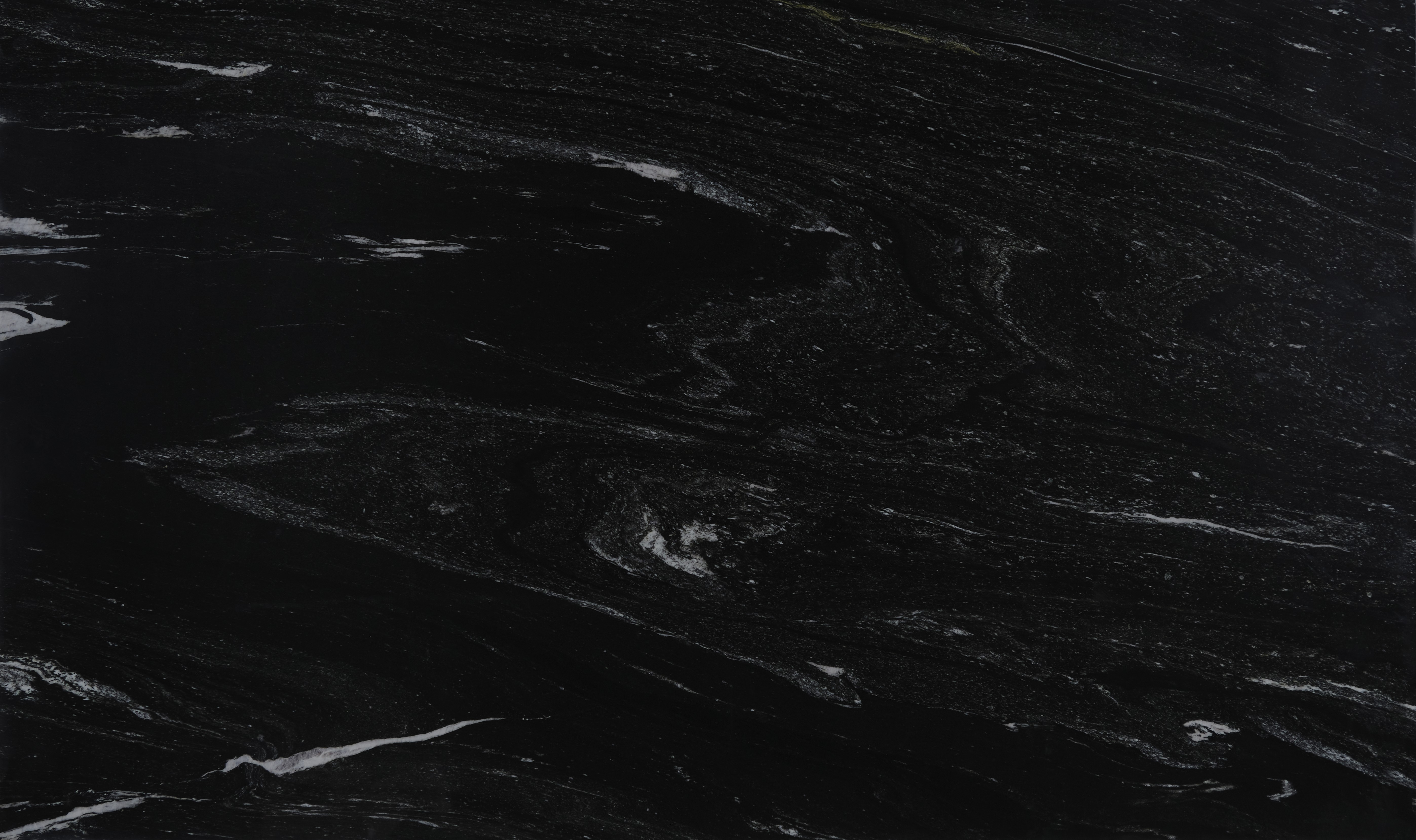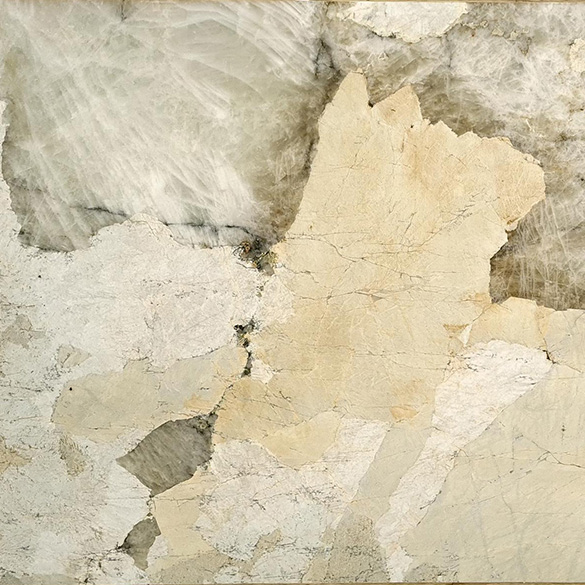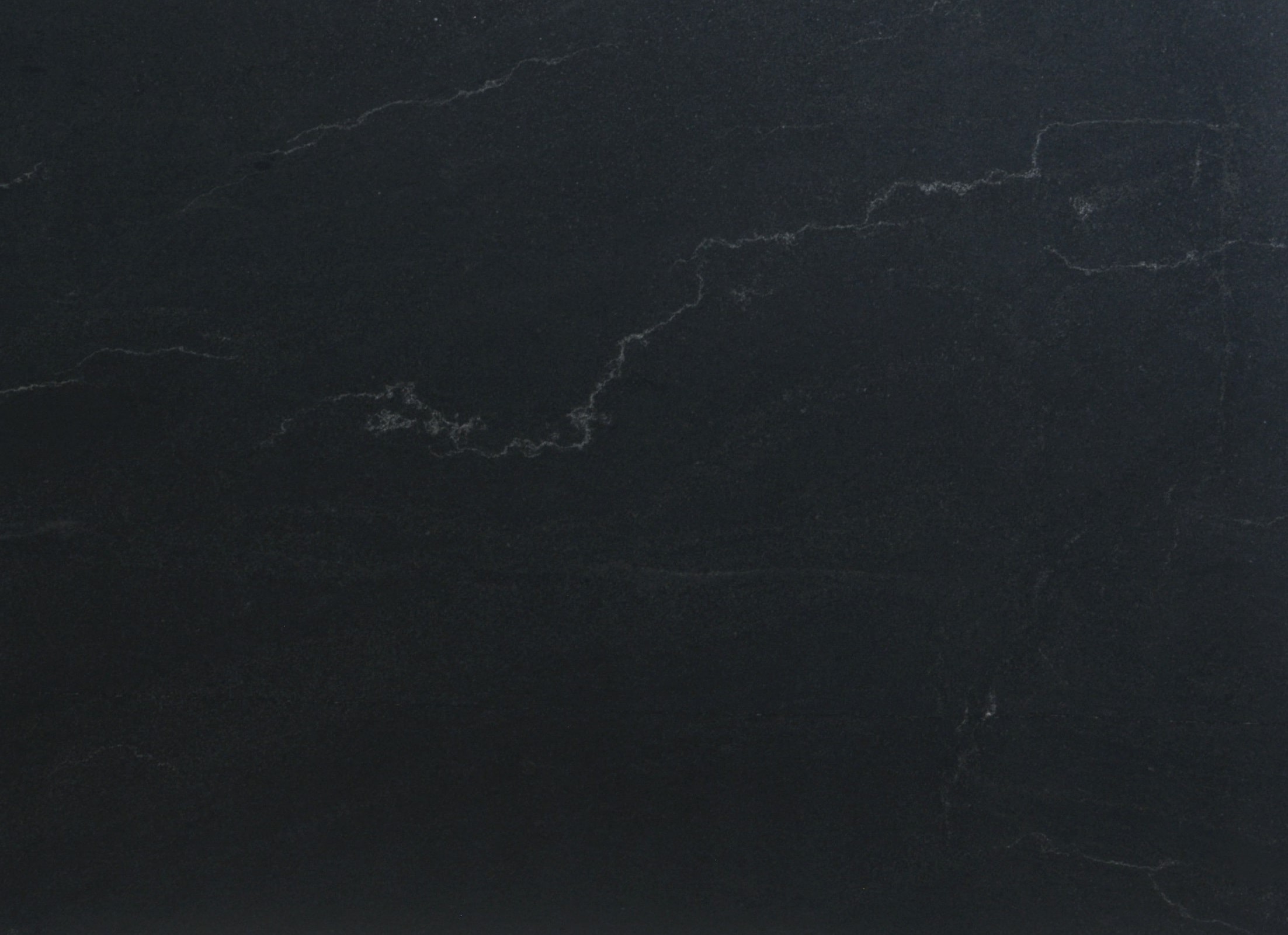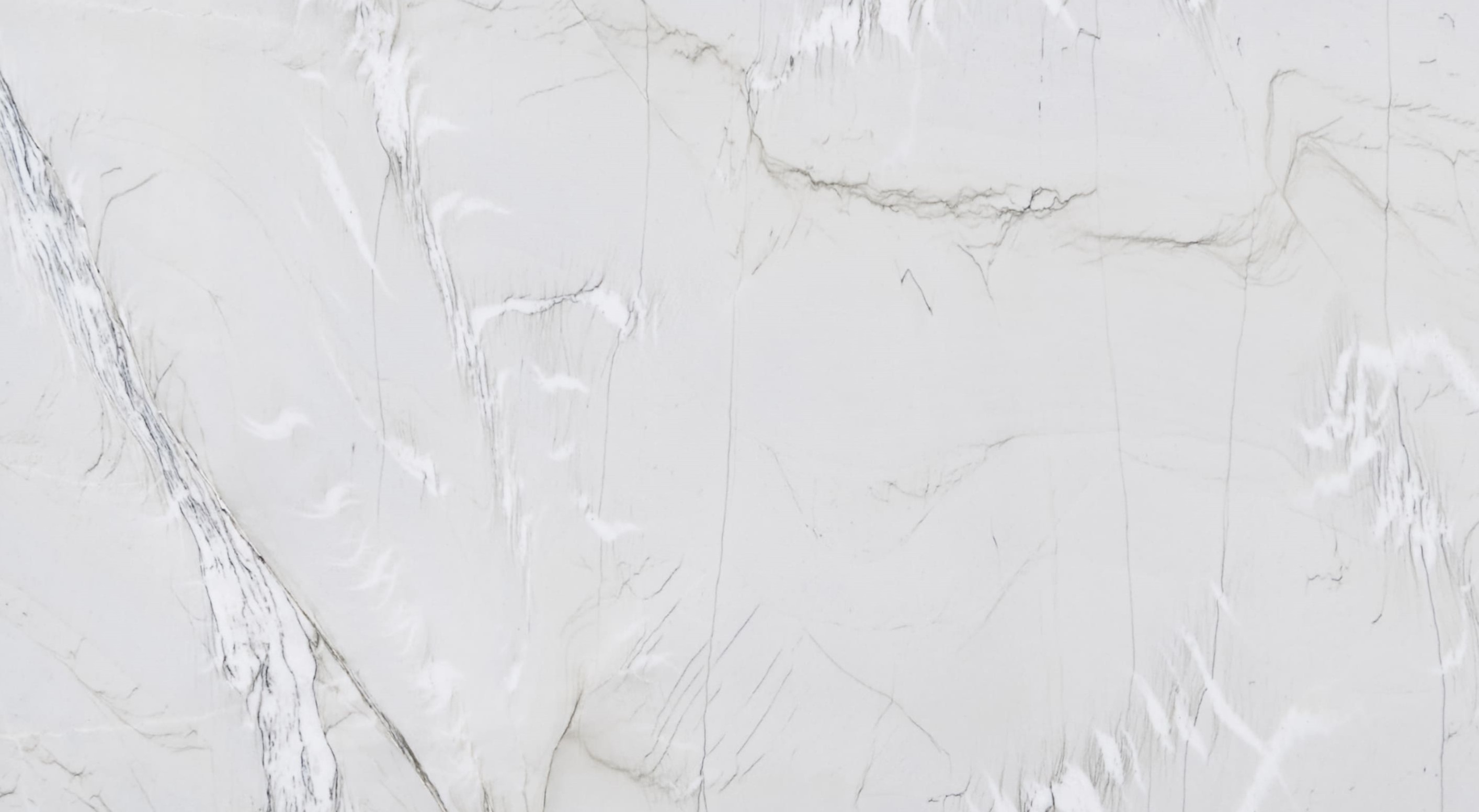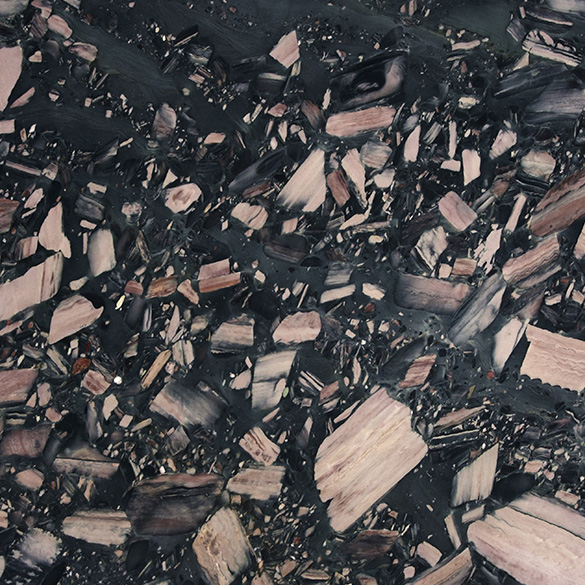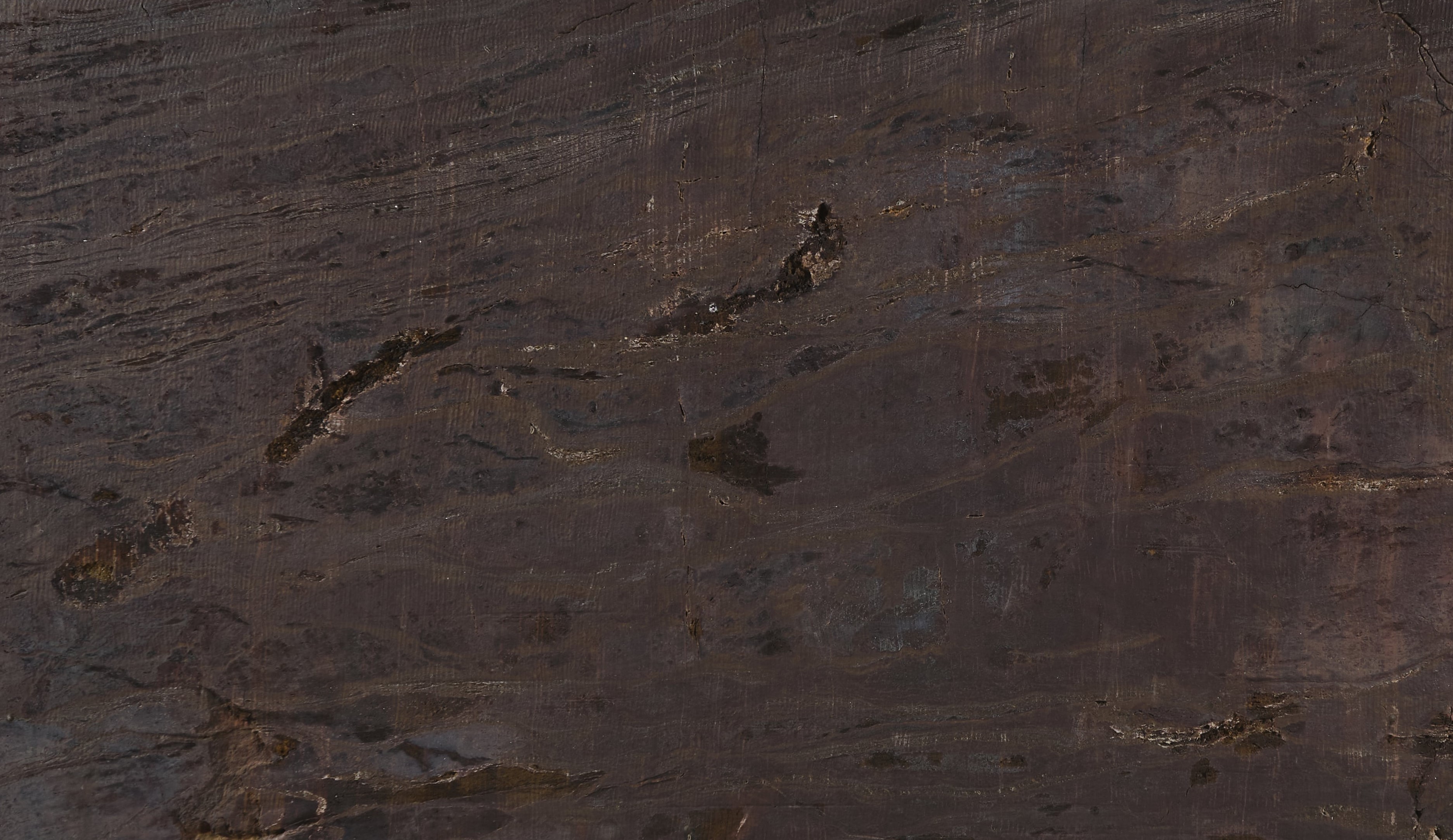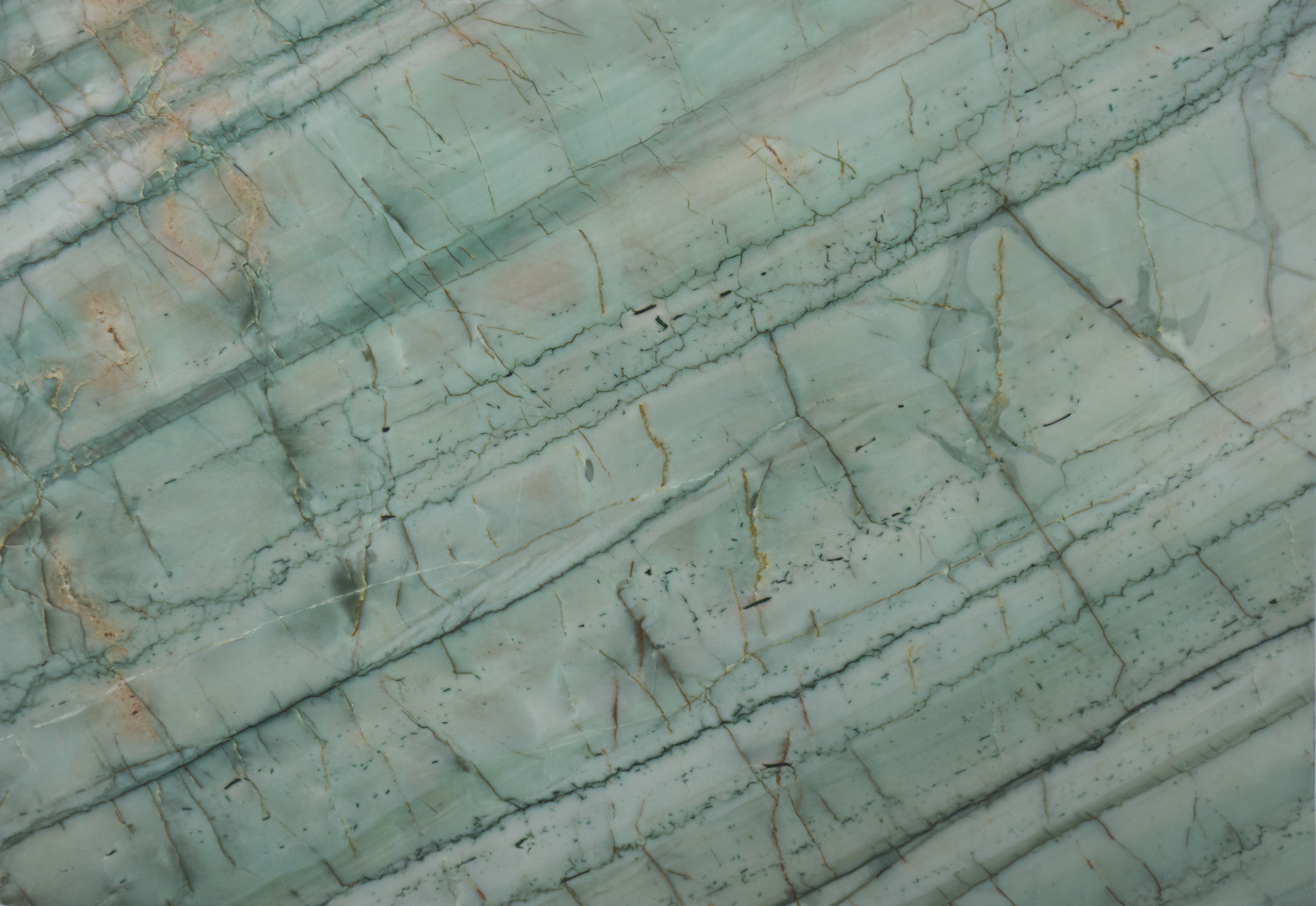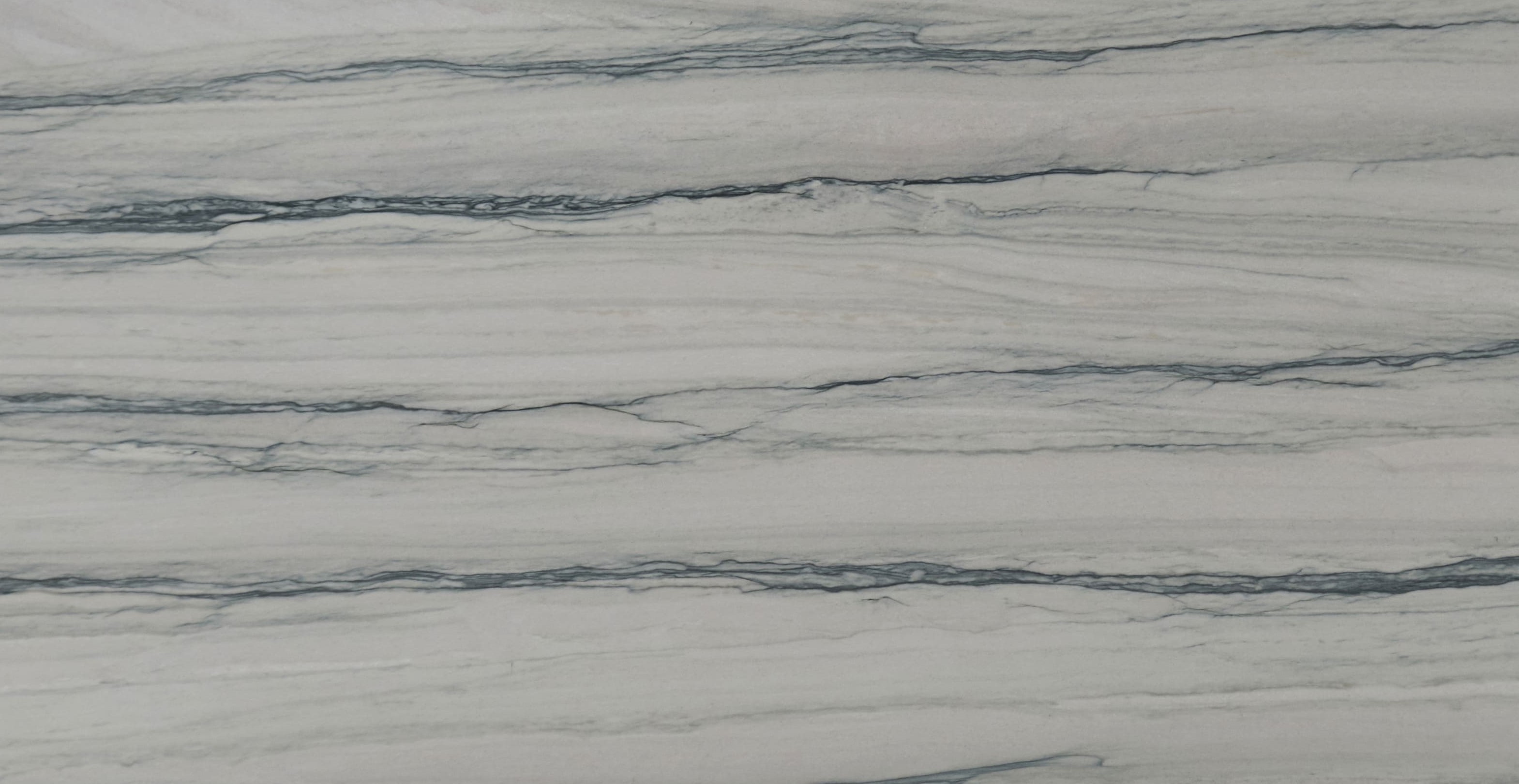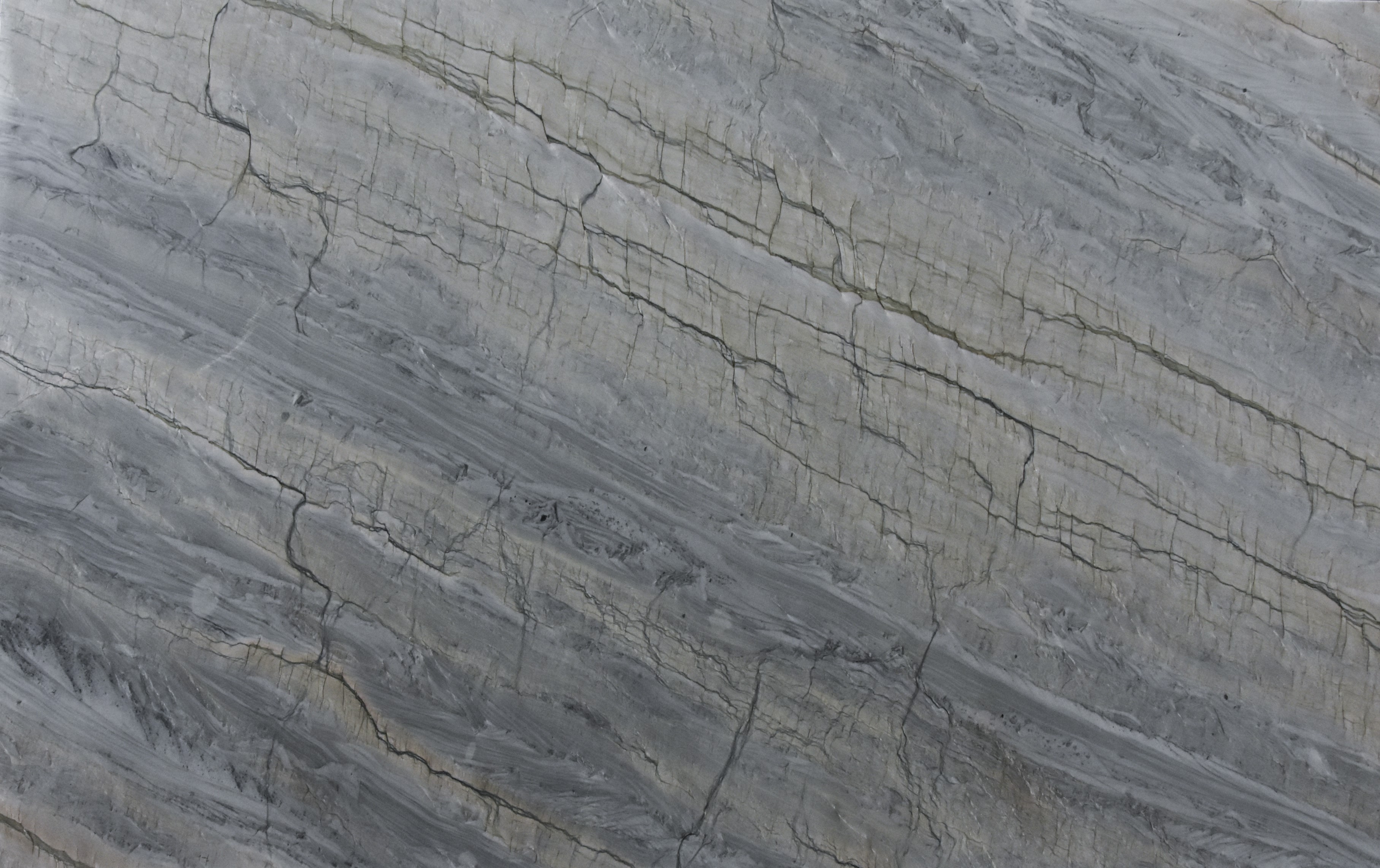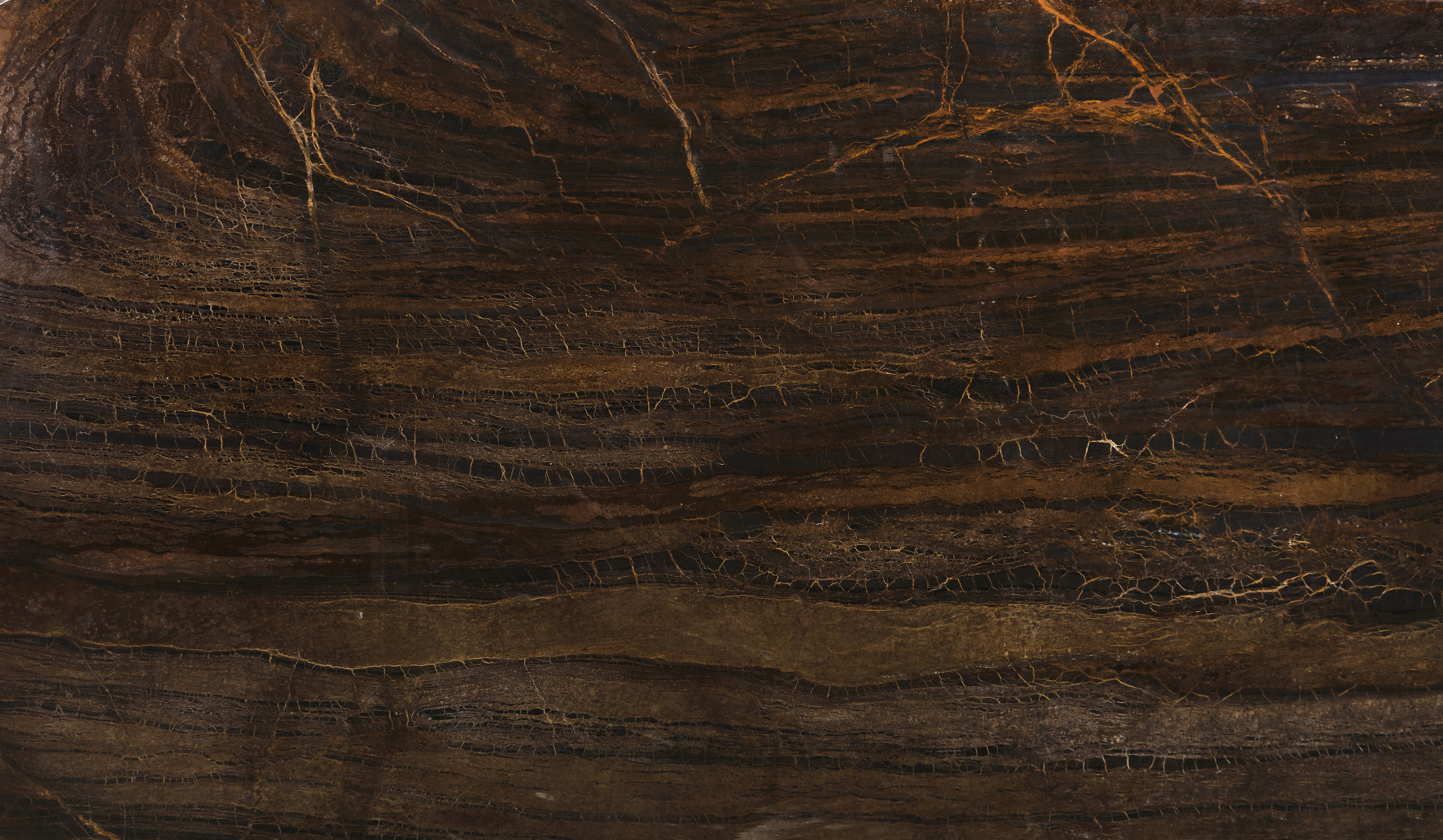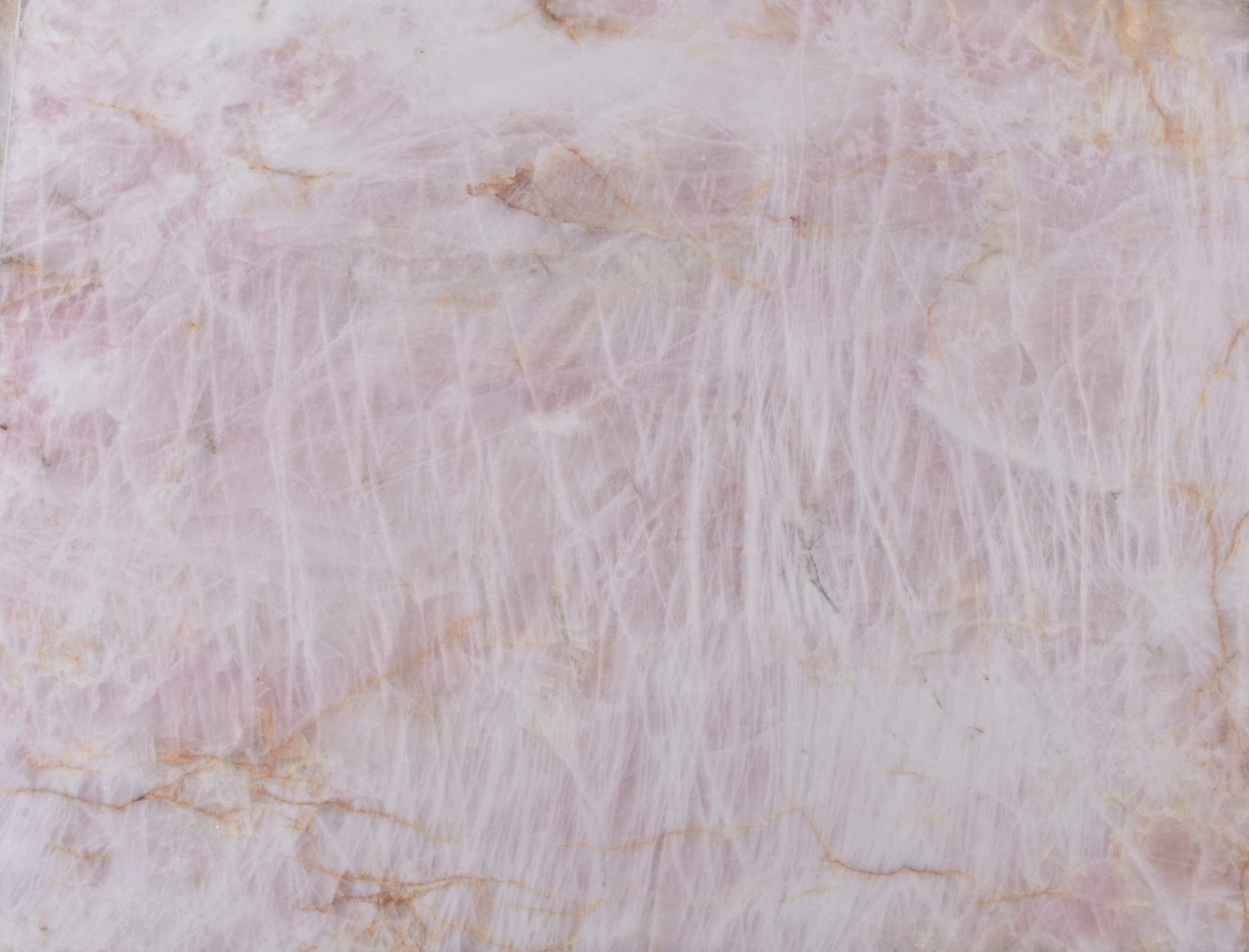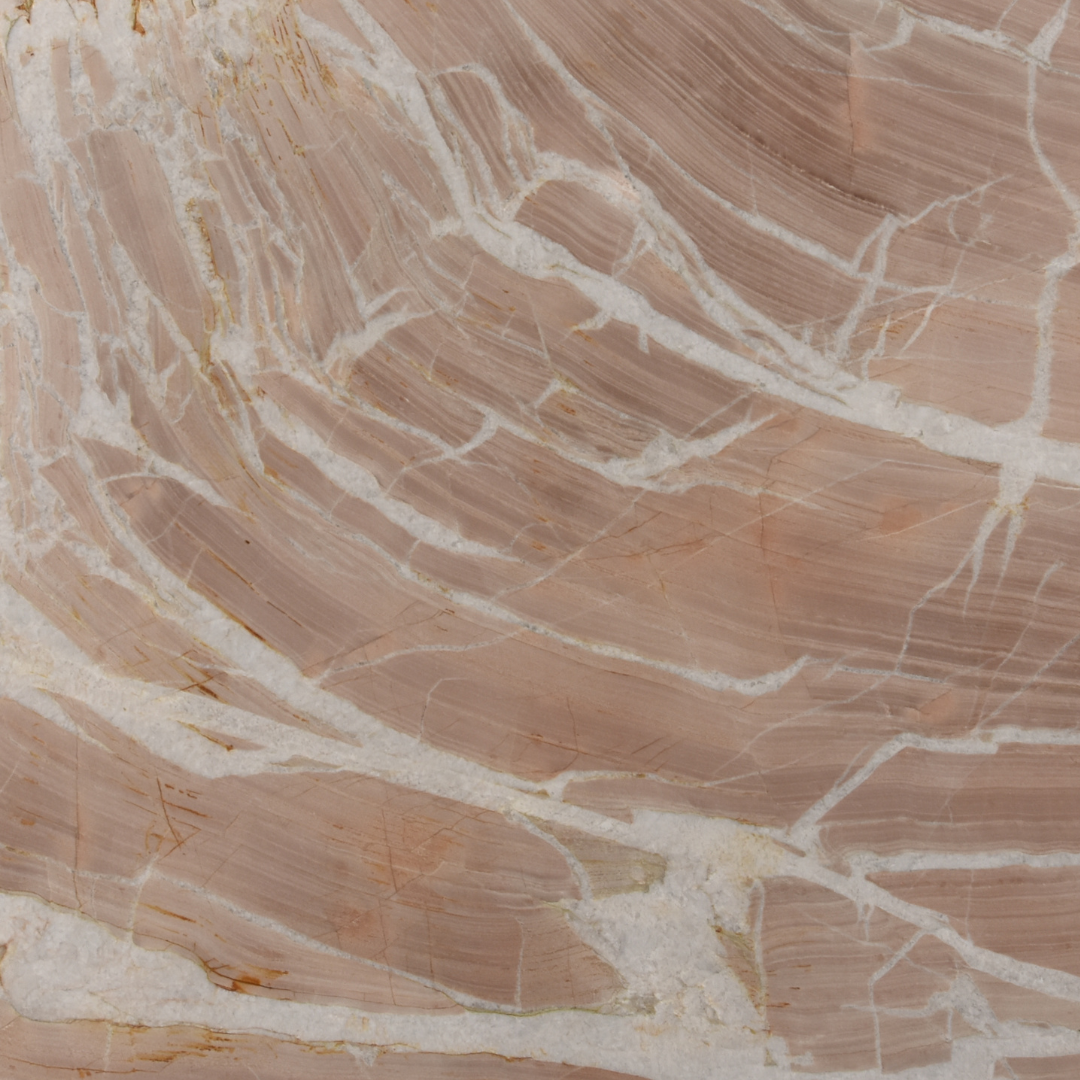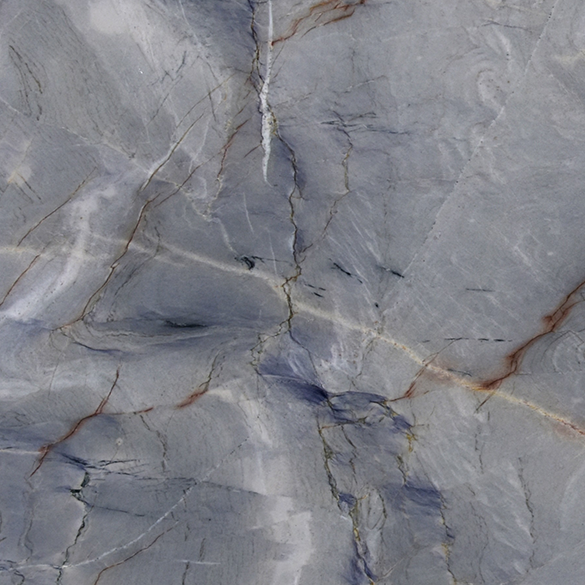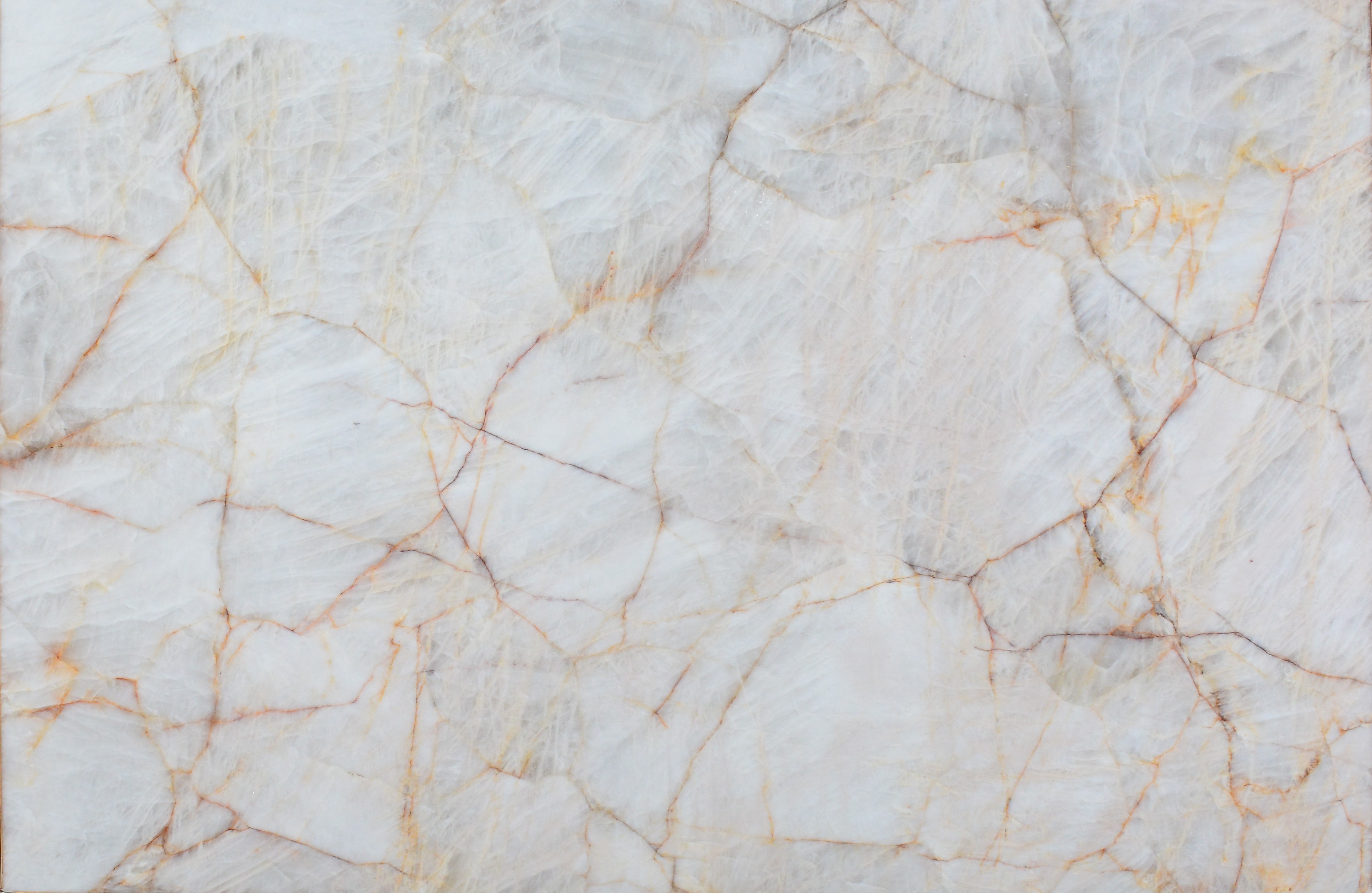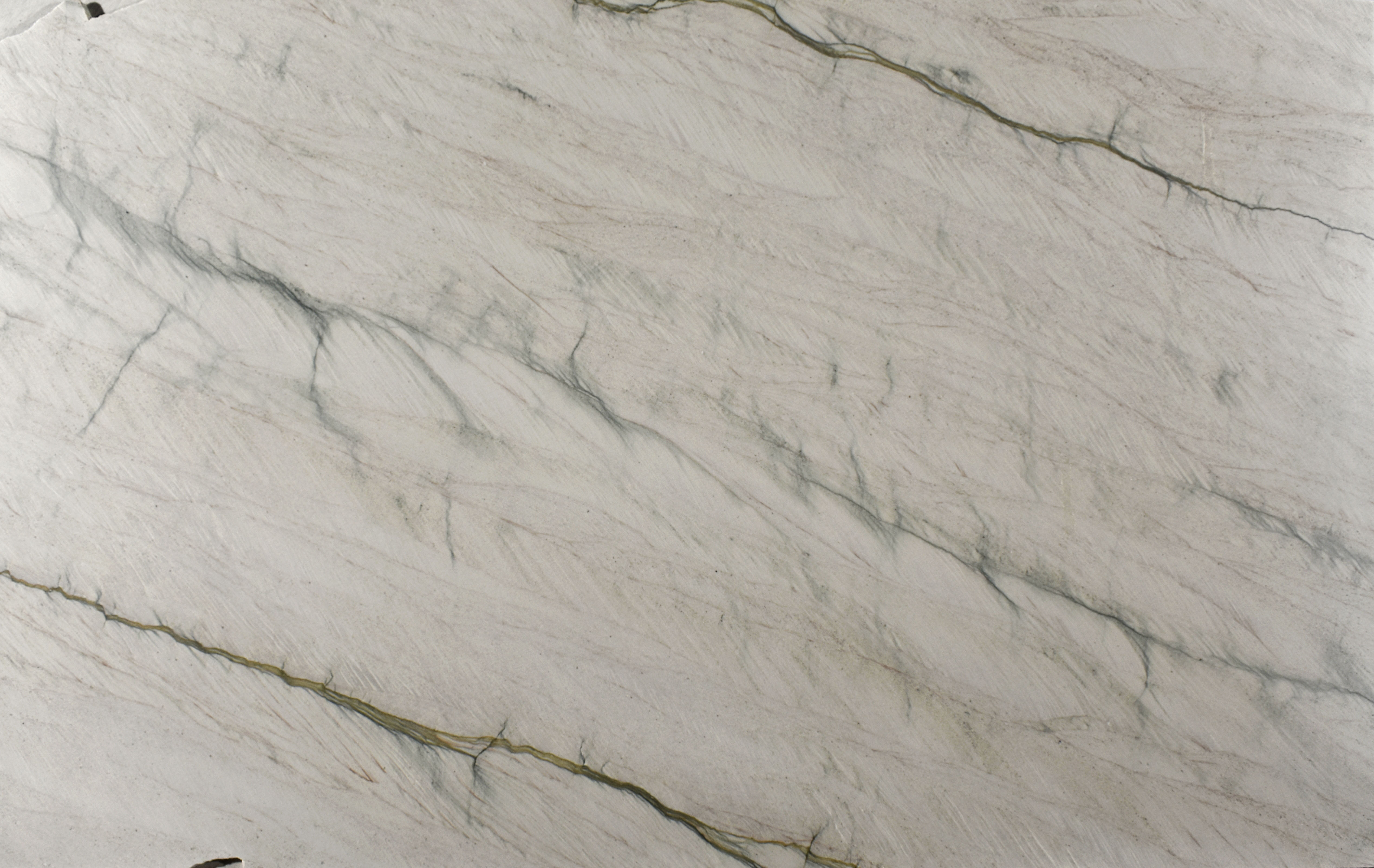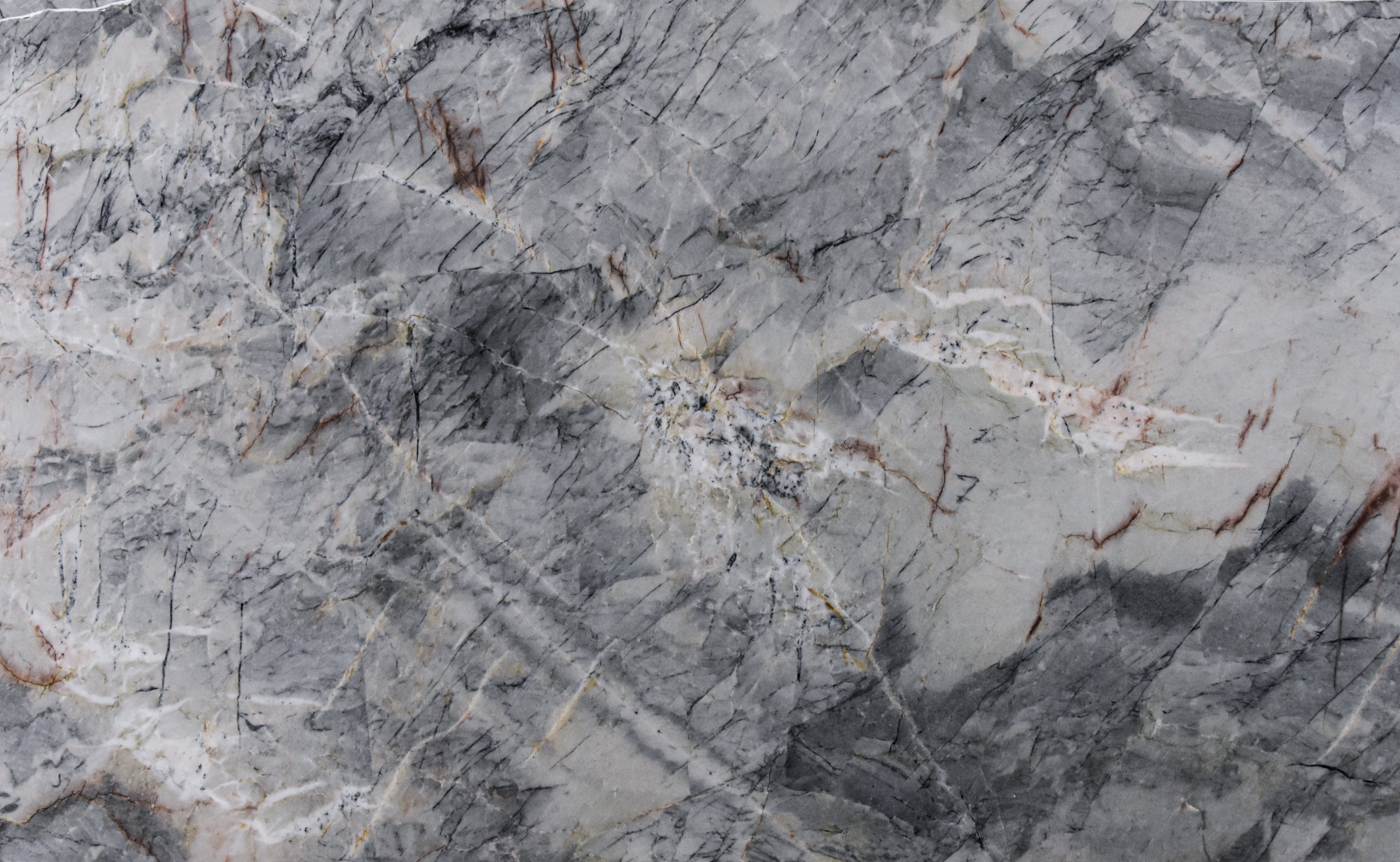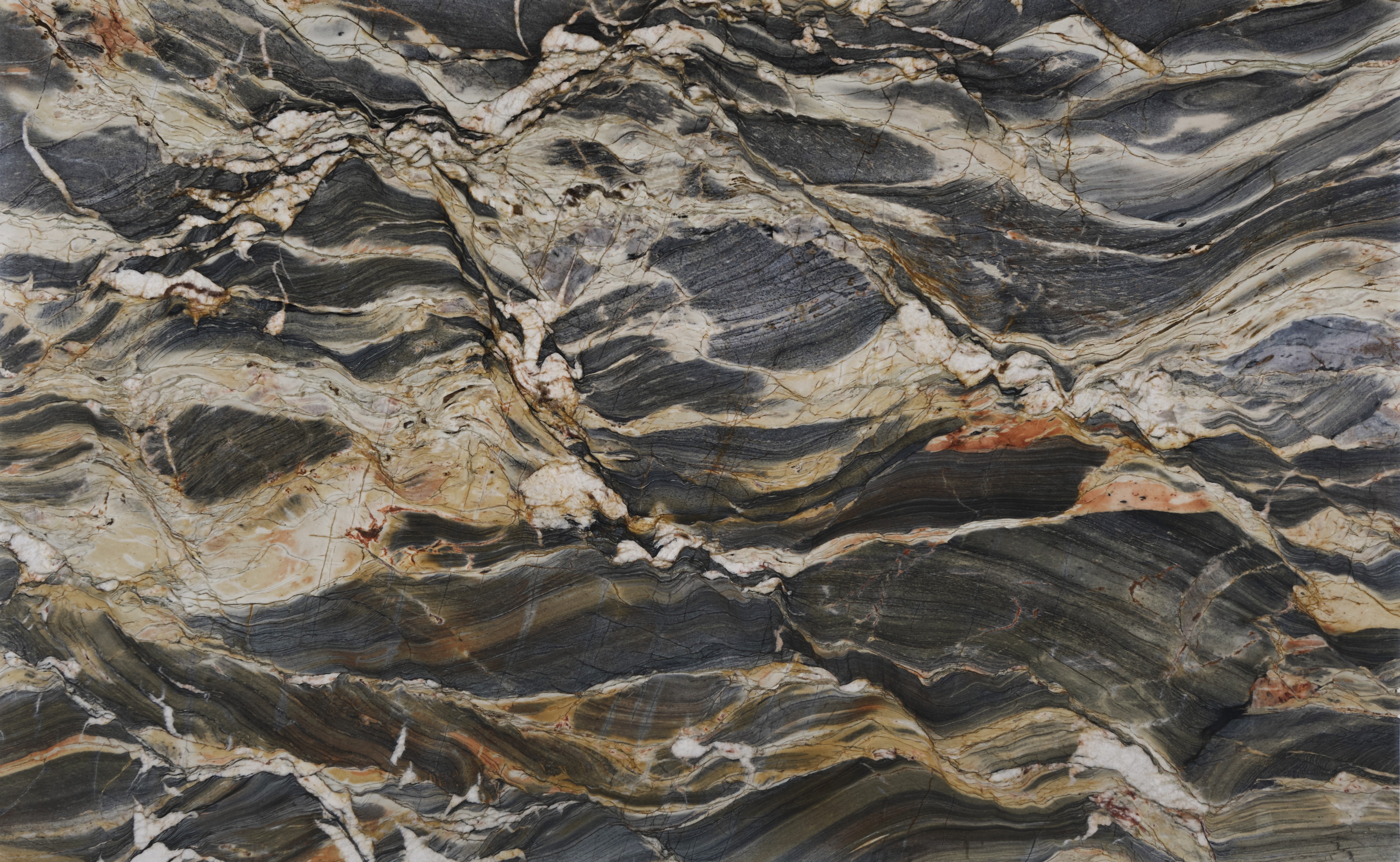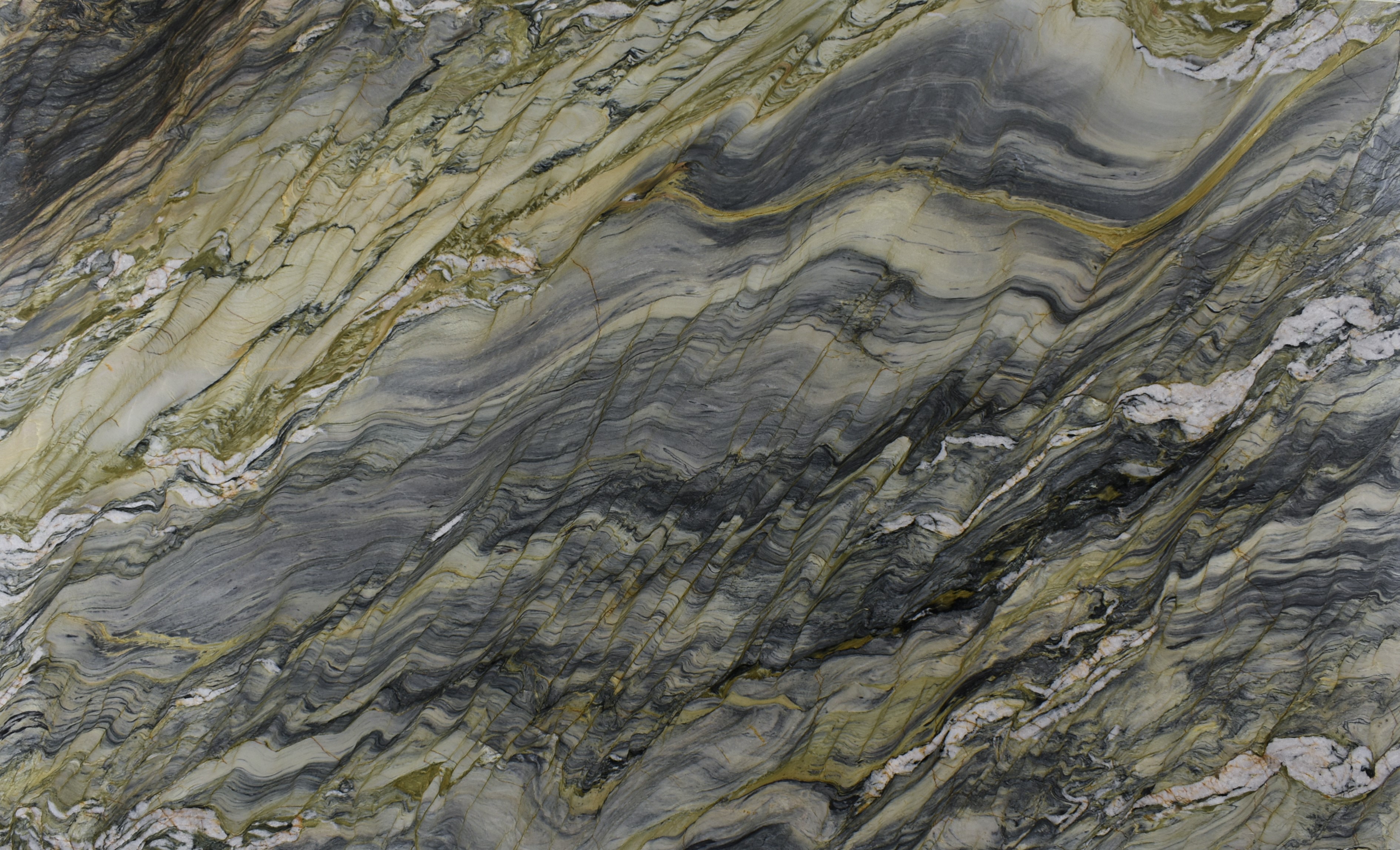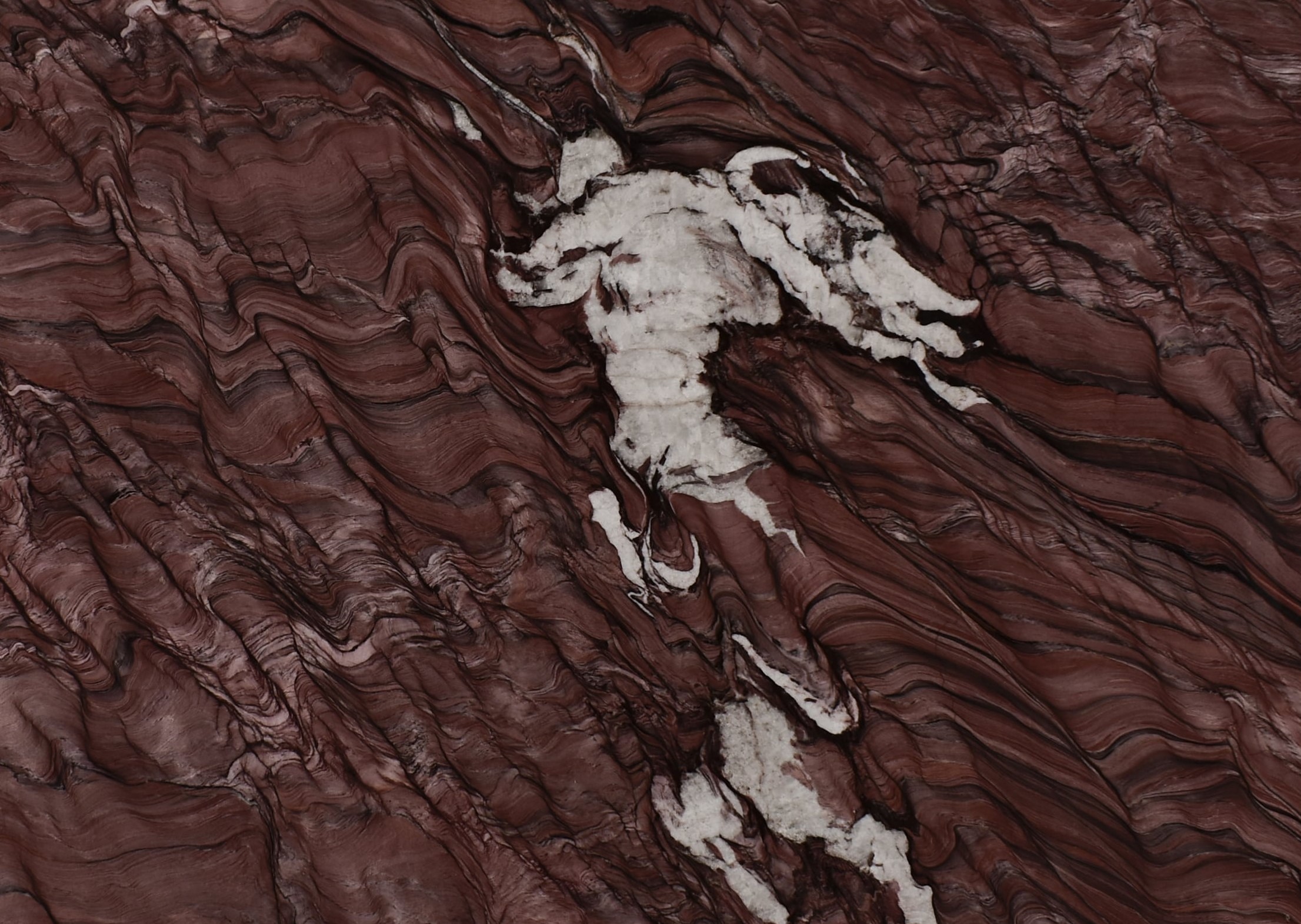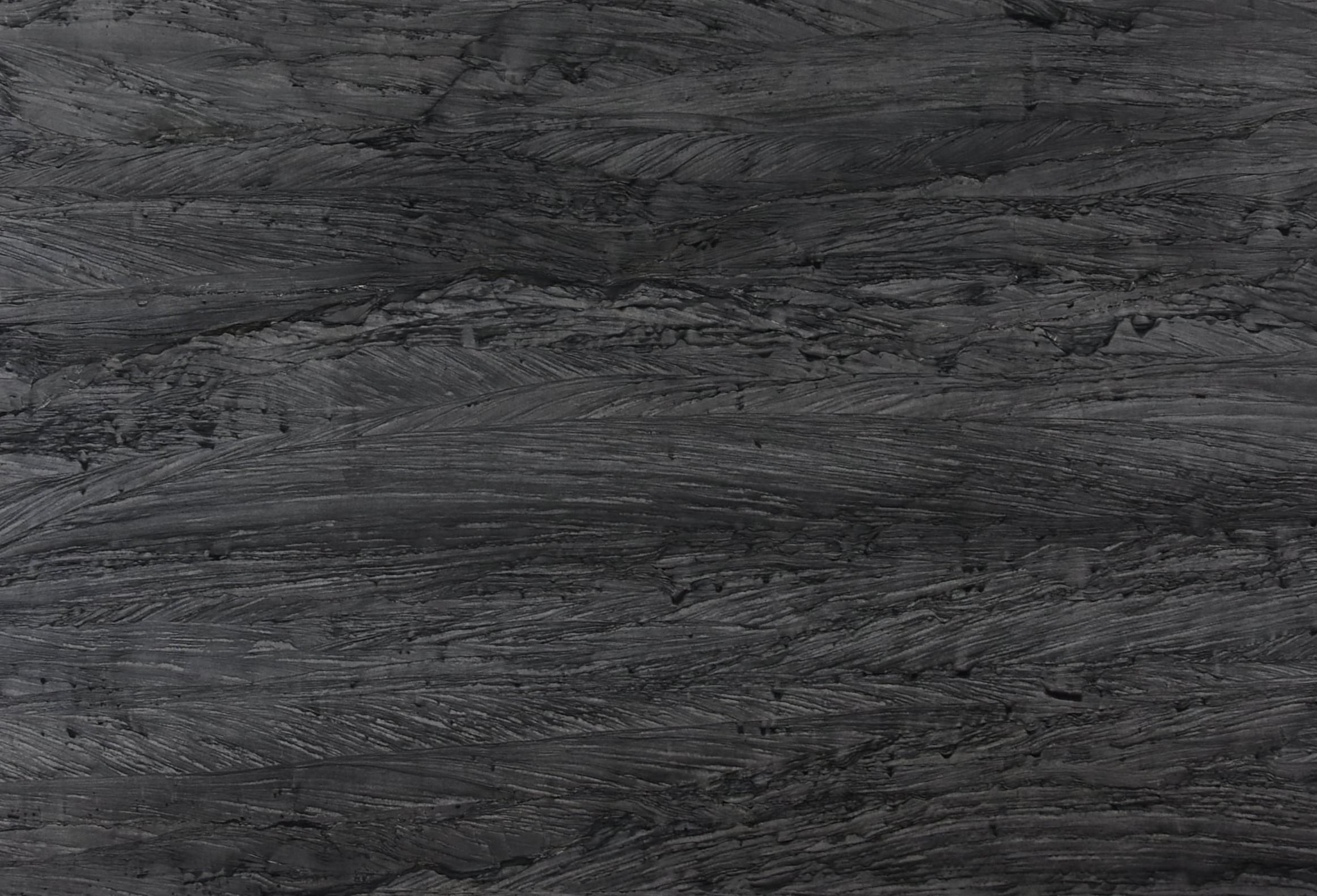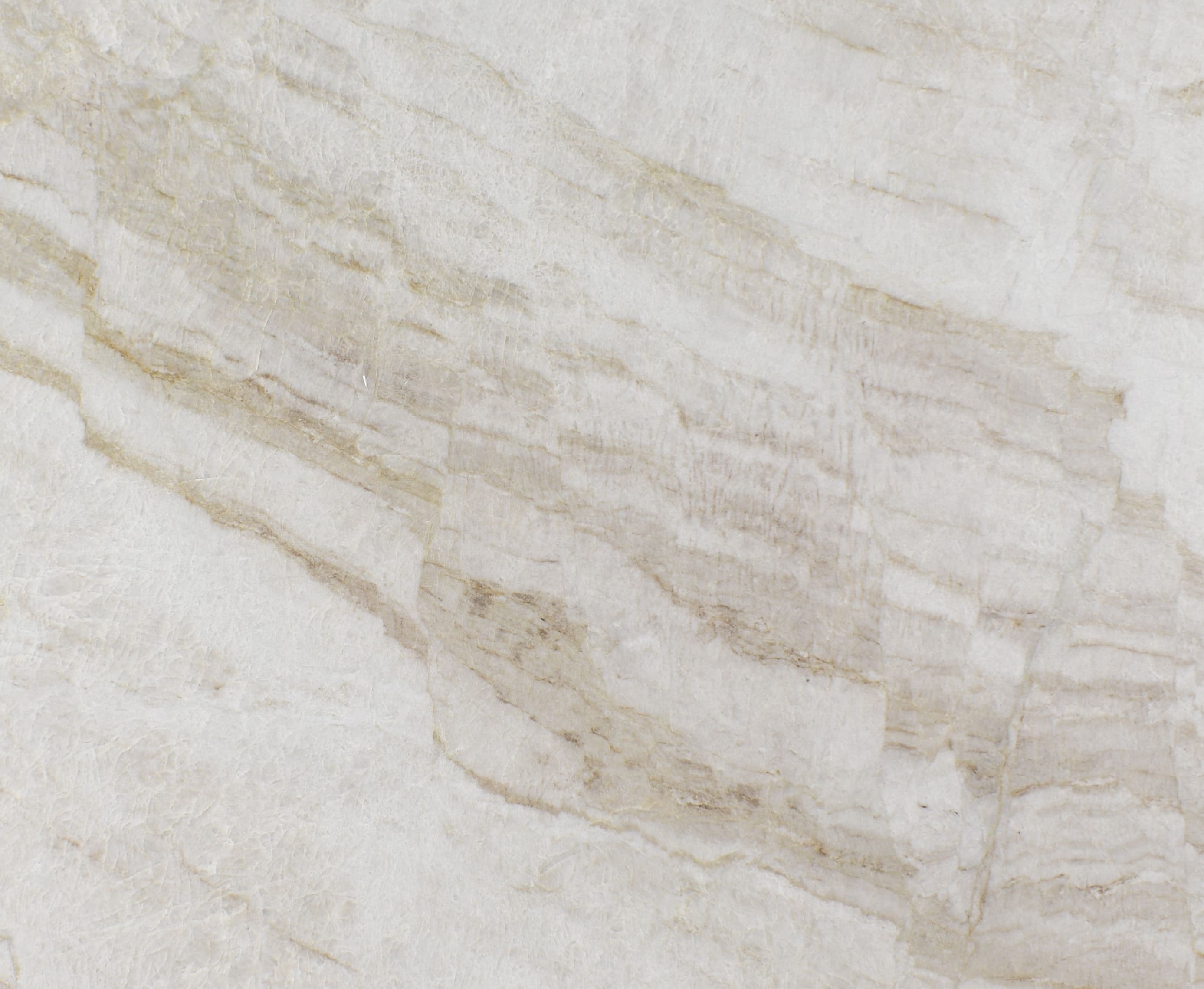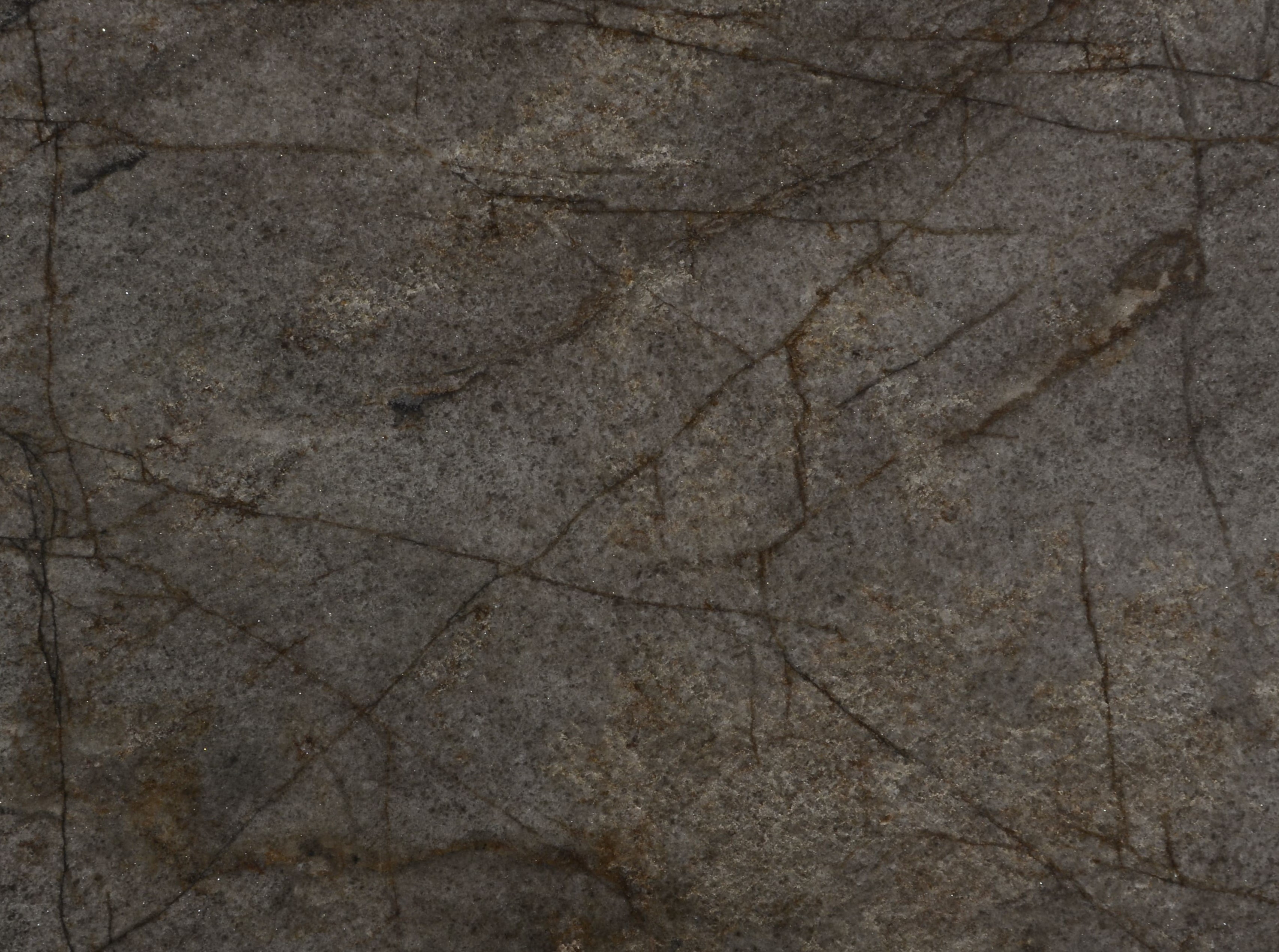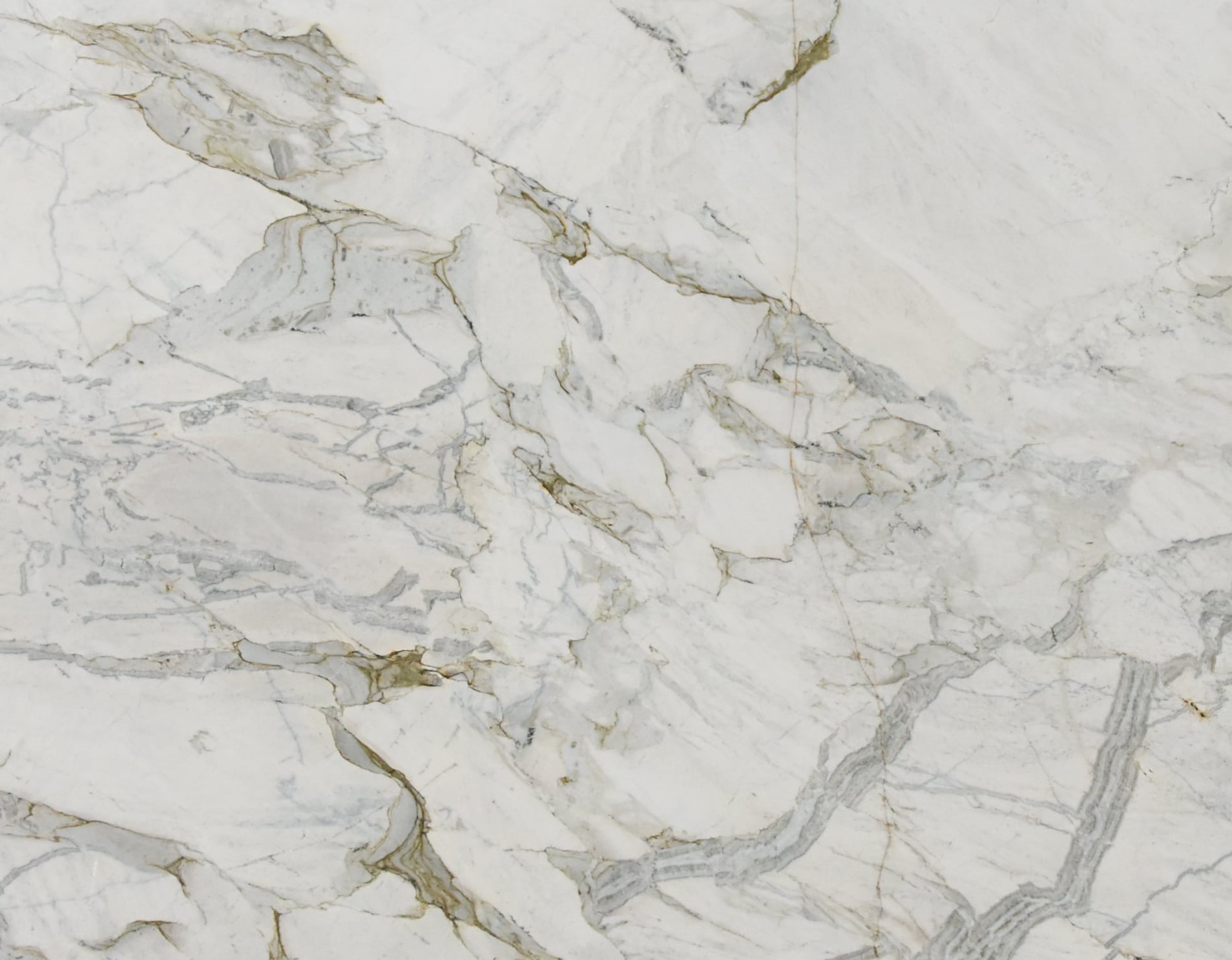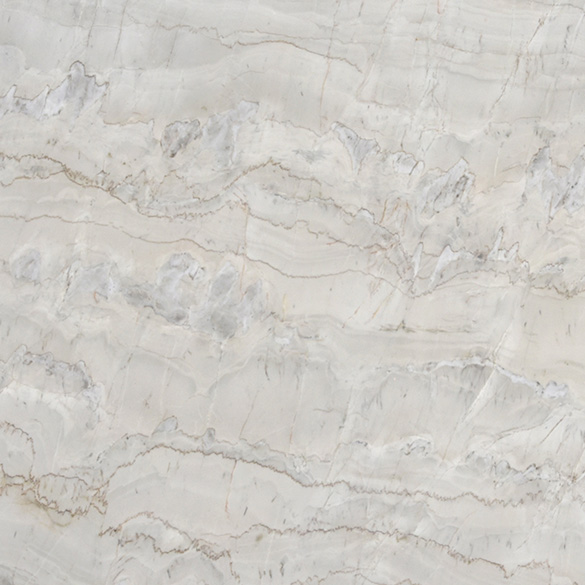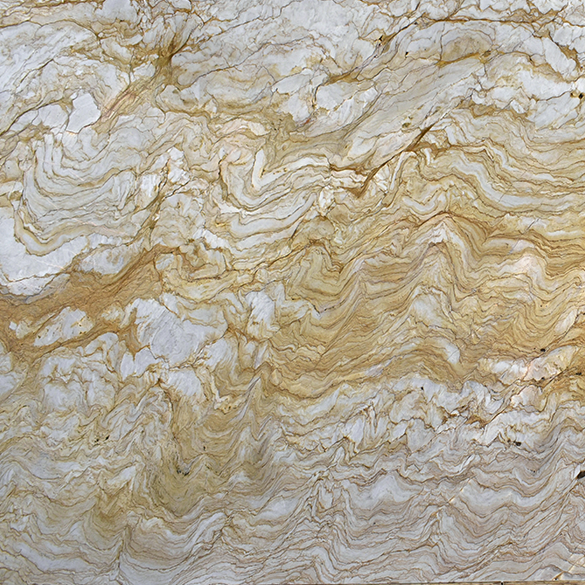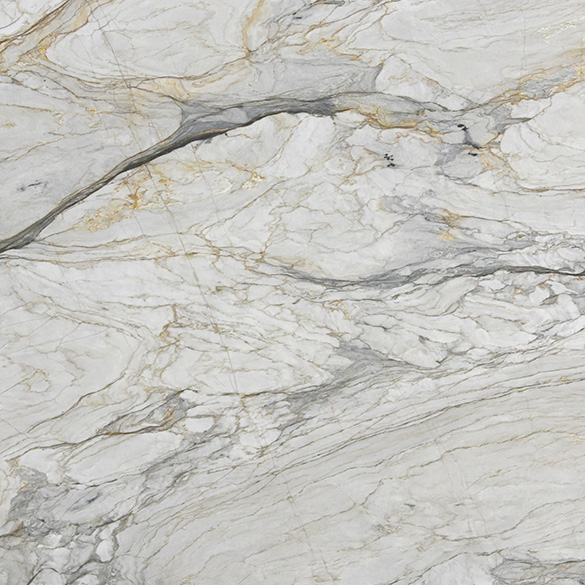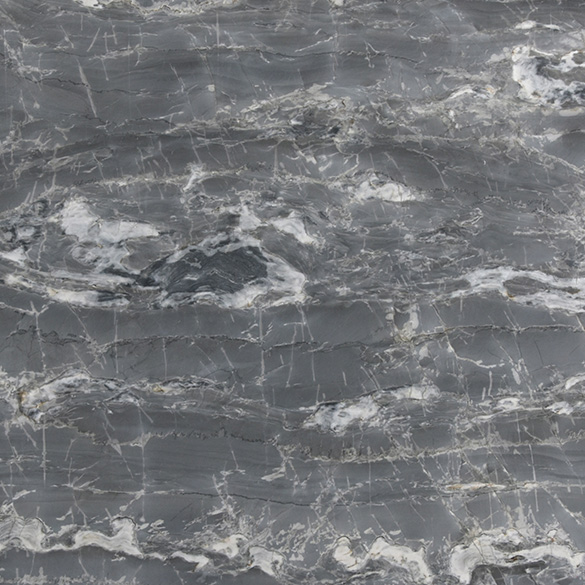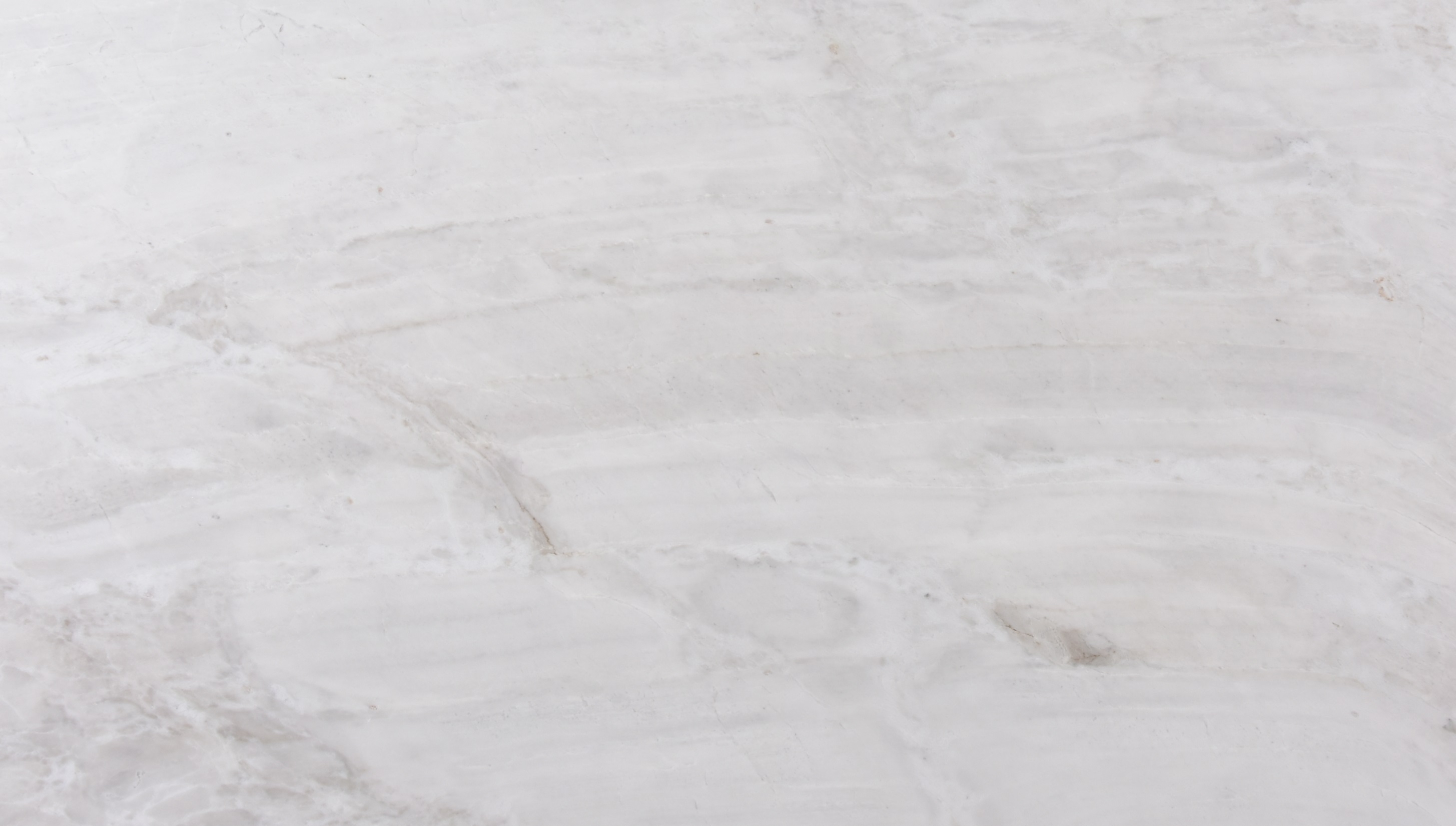Newsletter
Receive the latest
news from Decolores
Latest contents
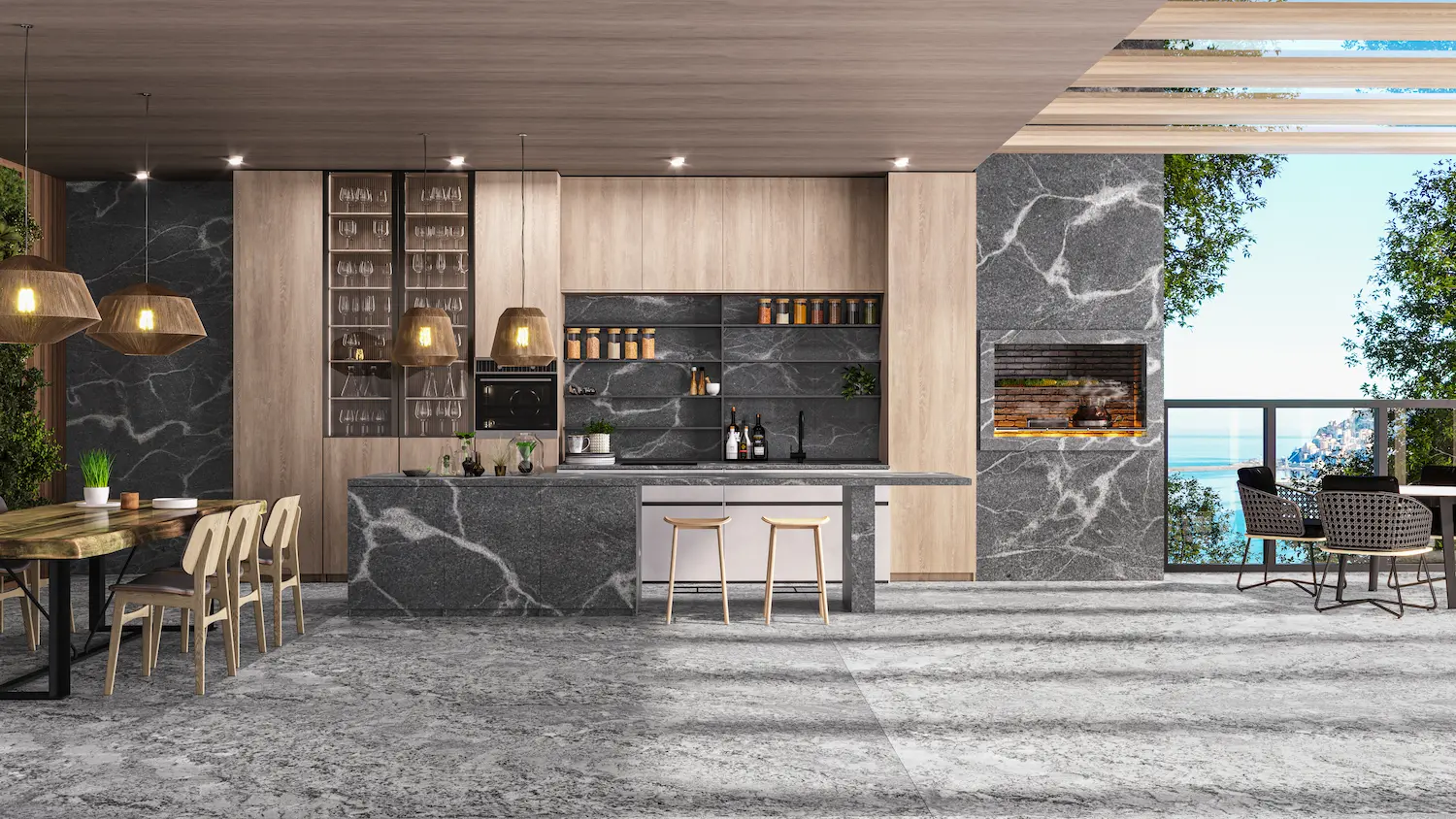
How to use granite in a barbecue
Nothing like a good barbecue to bring friends and family together in a welcoming and sophisticated environment. In gourmet area projects, the choice of materials directly influences the aesthetics, functionality, and durability of the space. One of the most valued elements in this context is granite, a natural stone known for its beauty and resistance. With a variety of colors and textures, granite is an excellent choice for countertops, cladding, and other barbecue grill details. However, it's important to note that its use should be restricted to the exterior parts of the structure—never the interior, which reaches extreme temperatures and requires specific refractory materials. In this article, we will present the main benefits of granite in barbecue grills, recommend the best types for this application, and provide practical tips on installation, use, and maintenance of the stone. Keep reading! The Benefits of Using Granite in Barbecue Grills When it comes to barbecue grills, granite is one of the most recommended materials. Besides being a high-performance natural stone, its use adds value to the project, promoting elegance and practicality. Below, we explore the main reasons to choose granite for barbecue grills and other gourmet area applications: Heat Resistance Although granite should not be used inside the barbecue grill, it is extremely heat-resistant in exterior applications. This characteristic allows for safe use in countertops near the grill or oven, with no risk of deformation, cracking, or premature wear due to high temperatures. As an igneous rock formed under extreme heat conditions, granite has a compact crystalline structure, making it naturally suited to withstand thermal variations and indirect heat around the barbecue area. Durability Another strong point of granite is its durability. It is a long-lasting material that resists abrasion, impacts, and continuous use. When properly installed and maintained, it can last decades without losing its aesthetic and functional qualities. Its low porosity, especially in denser granites, also contributes to resistance against stains and moisture, even in outdoor areas exposed to humidity or contact with liquids. Easy to Clean In addition to being beautiful and durable, granite is easy to clean. For daily hygiene, we recommend using a neutral detergent diluted in water and a soft cloth. Avoid abrasive products, steel wool, and cleaners with strong acids, such as bleach and vinegar. Keeping the granite barbecue countertop clean after use prevents permanent stains. In case of spills like sauces, grease, or citrus juices, immediate cleaning with water and neutral soap is essential to protect the stone's surface. Sophisticated Aesthetics The variety of tones, patterns, and finishes makes granite a visually appealing choice. It can be polished for a glossy shine, honed for a matte look, or brushed for a rustic appearance—depending on the desired style for the space. A granite barbecue grill adds elegance to the environment, creating harmonious compositions with other natural elements like wood, ceramic, and vegetation. Its timeless look also ensures compatibility with different design styles, from modern to classic. Main Types of Granite for Barbecue Grills With so many options available on the market, it's essential to know the most suitable types of granite for barbecue grills. The choice should consider not only aesthetics but also the stone's resistance and ability to integrate with other elements in the space. Among the most recommended for this application are White Dune Granite and Malaku Granite, both with excellent technical and visual characteristics. White Dune Granite The White Dune Granite is one of the most sophisticated choices for barbecue countertops. With a light color and elegant appearance, it features subtle veining that adds lightness and refinement to the space. This stone pairs especially well with clean, minimalist, or Scandinavian-style projects. Besides its beauty, White Dune offers high resistance to heat and abrasion, making it ideal for high-traffic areas. Since it is lighter in color, it requires extra attention to maintenance, especially regarding stains—which can be easily managed with regular cleaning and sealant application. Malaku Granite On the other hand, Malaku Granite stands out for its earthy tones, bold veining, and a texture that exudes sophistication. It is an excellent choice for those who want a cozier space with strong visual appeal. This stone is highly durable and performs exceptionally well, making it ideal for high-exposure and frequently used areas. Its honed or brushed finish prevents intense glare under natural light while adding a contemporary touch to the countertop. How to Choose, Install, and Maintain Granite in Barbecue Grills Choosing granite for a barbecue grill should consider the project's style, exposure to heat and moisture, and the frequency of use in the gourmet area. Countertops, islands, tables, and side cladding are the most common applications for granite. Installation should be done by specialized professionals to ensure proper leveling, sealing, and fixing. In outdoor areas, waterproofing and sealants are recommended to extend the stone's durability and prevent liquid penetration. For maintenance, it's important to use cutting boards to avoid scratches and trivets for hot pans to protect the surface from thermal shock. Small daily precautions, such as quickly cleaning acidic or oily food residues, help preserve the shine and integrity of the material. Find the Perfect Granite at Decolores Choosing the right granite makes all the difference in the final result of your barbecue grill. To ensure quality, sophistication, and durability, it's essential to rely on leading companies in natural stone production. Decolores is a brand recognized nationally and internationally for excellence in quartzite and granite extraction and processing. In the company's portfolio, standout models include White Dune Granite, ideal for elegant and light-toned projects, and Malaku Granite, perfect for those seeking a bold and impactful composition. On our website, you’ll find high-quality granites with exclusive patterns and finishes that adapt to different architectural styles. The products undergo strict quality control, ensuring impeccable results in every application. Whether for barbecue countertops, cladding, or tables, Decolores' granites are synonymous with resistance, beauty, and sophistication. Explore the full catalog and transform your gourmet project with the best in natural stones.
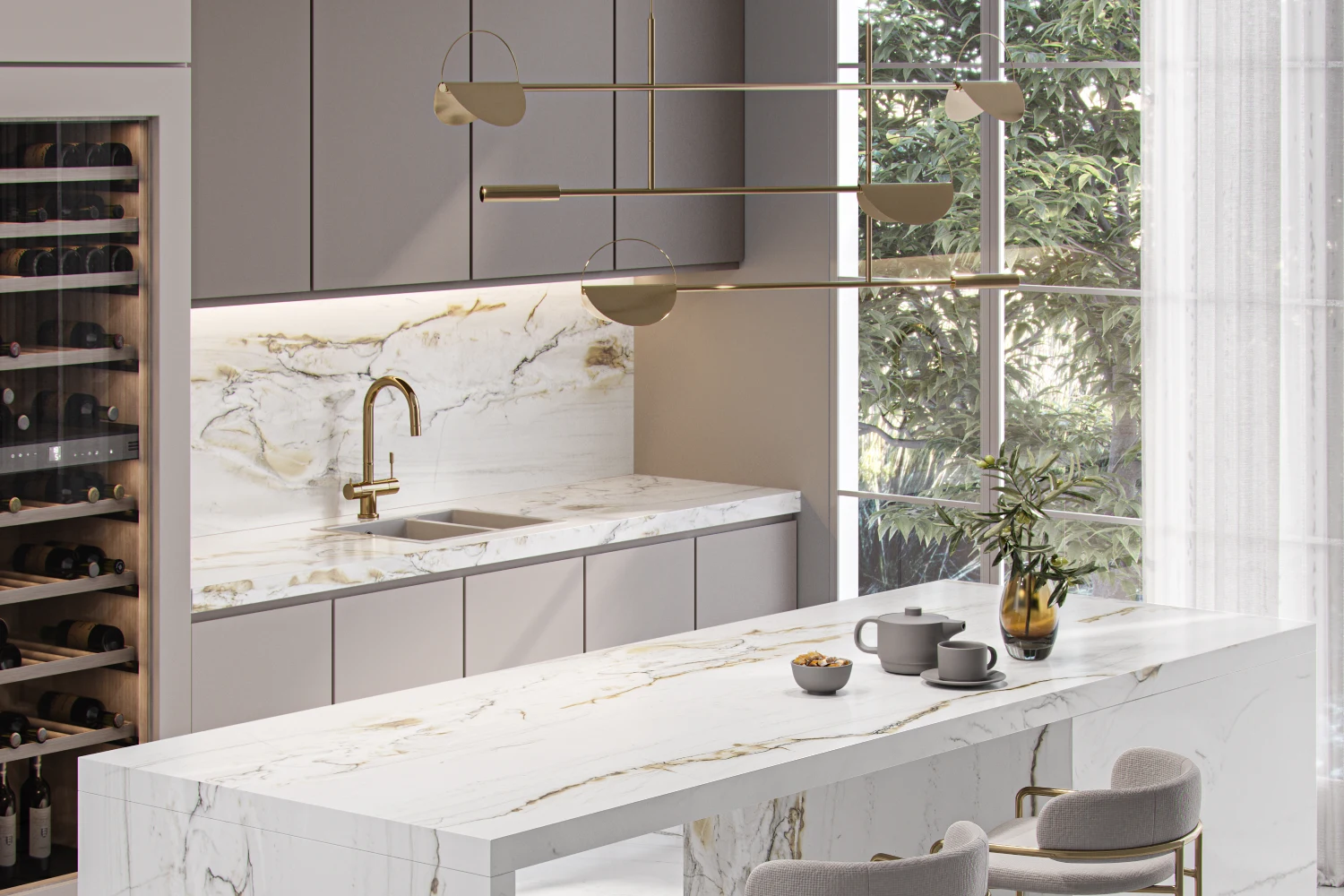
What is minimalist decoration and how to apply it?
Have you ever wondered what it would be like to live in an environment with fewer objects but more harmony and sophistication? That's what minimalist decoration is all about. The "less is more" concept offers the opportunity to transform any space, making it lighter, more organized, and elegant. Do you already know how to decorate a minimalist space? If you're an architect or interior designer looking for a functional, aesthetic, and timeless style, this article will explain how to incorporate minimalism into your project, blending sophistication with natural stone. What is minimalist decoration? Minimalist decoration is an interior design style based on the concept of simplicity, where "less is more." This philosophy seeks to eliminate excess and highlight essential elements, creating spaces with a sense of calm, order, and fluidity. In minimalist style, spaces are composed of few furniture pieces and objects, but each item is carefully chosen for its functionality and aesthetics. The goal is to create a visually clean and organized space without losing sophistication. With the growing demand for more functional spaces, minimalism has become a global trend. These spaces are often characterized by neutral tones, simple lines, geometric shapes, and natural materials such as stone, wood, and metals. What are the fundamental principles of minimalism in interior decoration? To successfully apply minimalist decoration, it's essential to follow some key principles: Simplicity and functionality: Every item in the space should have a clear and essential purpose. The idea is to avoid clutter and unnecessary furniture. Furniture is chosen for its utility and clean design, ensuring practicality and comfort. Neutral color palette: Shades like white, gray, black, and beige dominate, creating a calm and sophisticated base. More vibrant colors can be introduced sparingly through objects or accents that add life to the space without overwhelming it. Open and organized spaces: Minimalism values a sense of spaciousness, so areas should be well-organized and free of obstructions. Multifunctional furniture is an excellent way to keep the space free of unnecessary items. Use of natural materials: Materials like wood, stone, and metals are highly valued in minimalism. They add a tactile and sophisticated dimension to spaces while maintaining the style's characteristic restraint. Natural lighting: The more natural light, the better. Minimalist style seeks to maximize daylight, creating a light and airy atmosphere. To achieve this, prioritize large windows, sheer curtains that let sunlight in, and lighting that complements the space. How to decorate minimally with natural stone? By incorporating natural stone into minimalist decoration, you not only add a touch of elegance and texture but also align with the minimalist philosophy, which emphasizes essential and natural elements. Marble and quartzite are ideal choices for creating a sophisticated space with neutral and delicate tones. These stones are timeless and add beauty without overwhelming the space. Here are some examples of natural stones available at Decolores to create a minimalist decoration! Opt for the deep Sahara Black marble With its dark color and delicate veining, Sahara Black is perfect for adding a touch of luxury without excess. In a minimalist space, it can be used for kitchen countertops or decorative wall panels in living rooms. Bring freshness with Denali quartzite Denali quartzite, with its smooth pattern and light tones, is ideal for bringing lightness and brightness to a space. Its clean and refined appearance makes it an excellent choice for workspaces or reading nooks, as well as wall coverings that complement minimalism with a natural aesthetic. Create a poetic atmosphere with Naica quartzite With its beige tones and smooth texture, Naica, part of the Poetry Collection, is a stone that adds sophistication and coziness. Perfect for relaxation areas like living rooms or bedrooms, it creates a serene atmosphere and can even be used for fireplace exteriors. If you'd like to see how these stones would look in your project, try simulating different patterns in our free room simulator! With it, you can experiment with various combinations of natural stone and explore different decoration possibilities. How to decorate a minimalist space: 5 ideas for each room in the house 1. Master bedroom In a minimalist bedroom, multifunctional furniture is essential. Choose a bed with a wooden headboard, a small nightstand, and bedding in neutral tones like white, gray, or beige. Another great option is using Biancatto marble for the nightstand or headboard, adding sophistication and brightness to the space. 2. Minimalist living room In a minimalist living room, simplicity should stand out. Choose a sofa with straight lines, preferably in neutral tones like gray or white, and add a simple rug and a few cushions for comfort. Mont Blanc quartzite can be used for flooring or a coffee table, adding a touch of softness and elegance. 3. Minimalist kitchen In the kitchen, opt for handleless custom cabinets to create a clean and organized look. Marble or quartz countertops or wall coverings add a contemporary yet minimalist touch. 4. Children's bedroom In a child's bedroom, minimalist decoration can still be functional and fun. Choose simple furniture and soft tones. Mystic Blue quartzite or Pink Crystal can be used for wall coverings in blue or pink tones, or as decorative accents, creating a light and cheerful space without excess. 5. Sophisticated bathroom A minimalist bathroom should be clean and cozy. Combine stones like Mont Blanc for flooring and dark Incognitus quartzite for countertops. Pairing these stones with simple fixtures and natural lighting creates a relaxing, high-end atmosphere. With these ideas, you can apply minimalist decoration to your project and create unique spaces that promote comfort and sophistication. Don't forget to check out the full catalog from Decolores, specialists for over 20 years in granite, marble, and quartzite. Here, you'll find the best options for architectural projects that seek sophistication. By incorporating high-quality natural stone, you ensure your minimalist decoration has the elegance your clients are looking for!
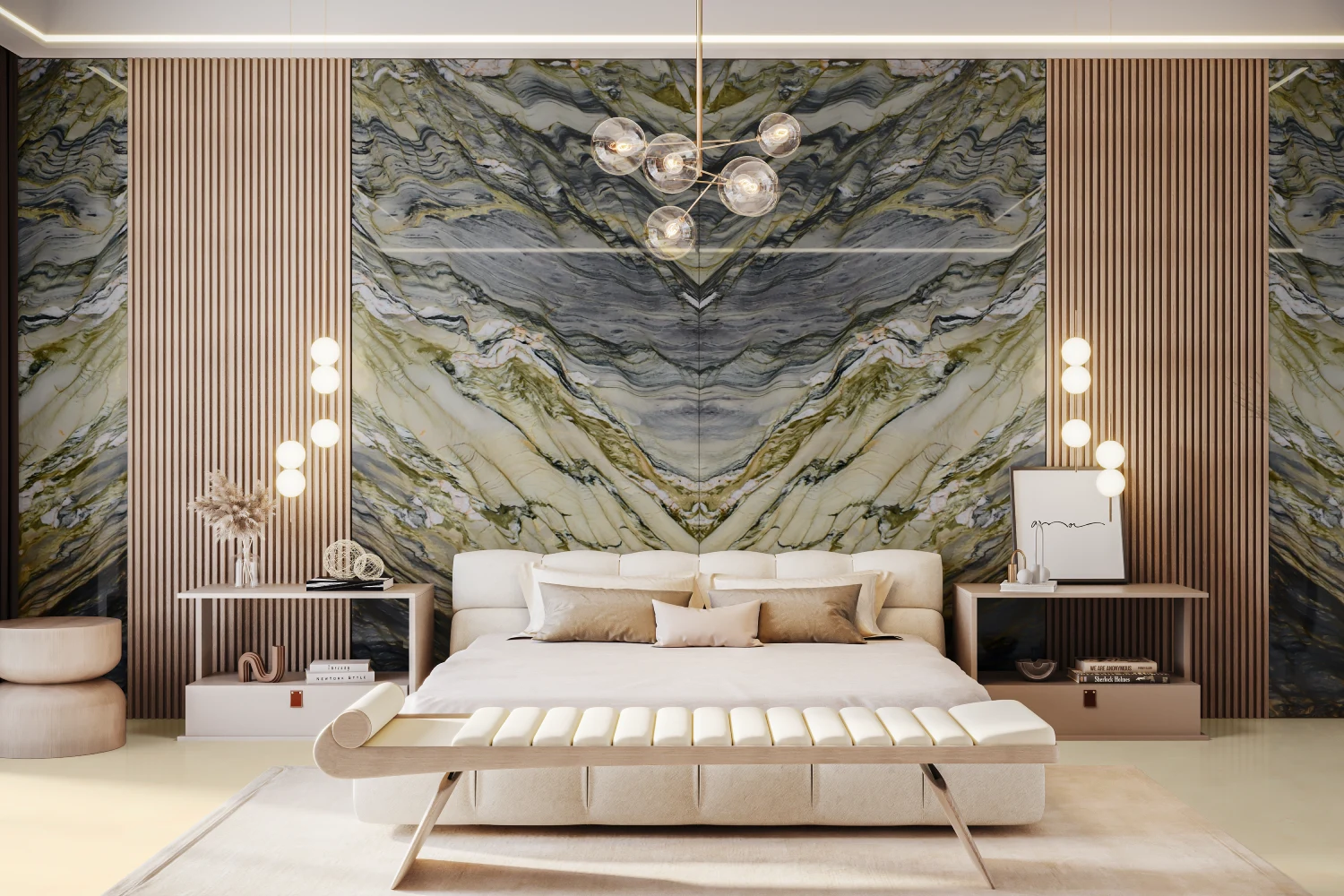
Flexible and multifunctional spaces using natural rocks
The use of natural stones in interior decoration has gained increasing prominence due to its versatility and sophistication. These stone materials, such as marble, quartzite, and granite, possess unique beauty and offer unmatched resistance and durability. When applied in interior design or outdoor areas, natural stones can transform spaces, bringing harmony with natural elements. Today, you will see how these natural stones can create versatile and multifunctional spaces, always with a touch of sophistication. Follow along! What are natural stones? Natural stones are materials extracted directly from nature through open-pit or underground mining. Then, the stones undergo cutting and finishing processes before being applied in various design projects. Used in construction and interior decoration, they play an essential role in architectural projects, whether for floors, wall coverings, countertops, or furniture. The durability and timeless aesthetics of natural stones, such as marble, quartzite, and granite, are the main reasons they are ideal choices for creating high-end spaces with a sense of elegance. Additionally, they have characteristics that allow them to be used in multifunctional spaces that demand functionality, practicality, and beauty. Main types of natural stones in decoration Quartzites Quartzites are metamorphic rocks composed primarily of quartz, which gives them high resistance and durability. The appearance of quartzite stones varies greatly but always carries a touch of sophistication. Their colors range from light to dark tones, making them ideal for countertops, floors, and coverings in both indoor and outdoor areas. Marbles Highly prized for its crystalline texture and striking veining, marble is a metamorphic rock composed of calcite or dolomite and evokes the most admired works of art throughout the centuries. It is widely used in prominent indoor areas, such as living rooms, bathrooms, and kitchens. Flexibility of finishes for coverings The flexibility in natural stone finishes allows for the creation of various visual and sensory effects. Each finish can enhance shine, texture, or softness. Here are some of the most popular finishes! Polished: The polished finish is synonymous with high shine and a smooth texture. It highlights the stone's veining and tones, giving an elegant and refined appearance. Honed: This finish offers a semi-smooth texture but is more opaque and matte. It is an excellent choice for spaces seeking a minimalist touch. Flamed: Ideal for outdoor areas, the flamed finish uses heat to create an anti-slip texture. It is perfect for gardens, balconies, and facades, as it is resistant and provides a rustic touch. Brushed: This finish is more anti-slip than polished but still offers a satin-like, smooth, and natural look. Ideal for countertops and floors, the brushed finish brings sophistication without compromising durability. Get inspired by real projects: multifunctional spaces with natural stones If you want to create sophisticated and multifunctional spaces, the following projects are perfect examples of how natural stones can transform environments. All the natural stone patterns used are part of Decolores' portfolio. See how they made a difference in these projects! Penthouse with Mont Blanc Quartzite A striking example of the use of natural stones in multifunctional spaces is the Penthouse, designed by the Ambidestro studio. Located in Porto Alegre, this residence uses Mont Blanc quartzite in various finishes, creating a sophisticated and fluid environment. The material was applied to walls, countertops, and floors, ensuring continuity and harmony. The light tone of Mont Blanc, combined with warm wood, brought a perfect balance between modernity and coziness, essential for a multifunctional space. La Petite Afrique Building with Bronzite Facade Another notable project is the La Petite Afrique Building in Monte Carlo, Monaco, designed by renowned architect Isay Weinfeld. The Bronzite quartzite was used on both the facade and the interior, creating a unique and imposing look. The application of Bronzite in a brushed finish on interior walls brings subtle movement, highlighting the stone's natural beauty and providing a sense of fluidity to the space. Living Inspirar with Rosso Levanto Marble In the Living Inspirar project, signed by Gramés Interior Architecture, the Rosso Levanto marble took center stage. This Italian stone, with its striking veining and vibrant tones, brings a sense of luxury and exclusivity to the space. The use of Rosso Levanto provided unique elegance in countertops and decorative tables. The project combined marble with modern and natural elements, such as wood, creating a multifunctional and welcoming environment. As you can see, natural stones are not only beautiful but also extremely versatile, allowing architects and designers to create multifunctional spaces. If you are looking for materials to add personality to your projects, from Mont Blanc quartzite to marbles, there is a vast array of natural stones to transform your designs. To explore even more possibilities with natural stones, check out the complete catalog of stones from Decolores. Take advantage and try our environment simulator to discover which natural stone best suits your project!
Other contents
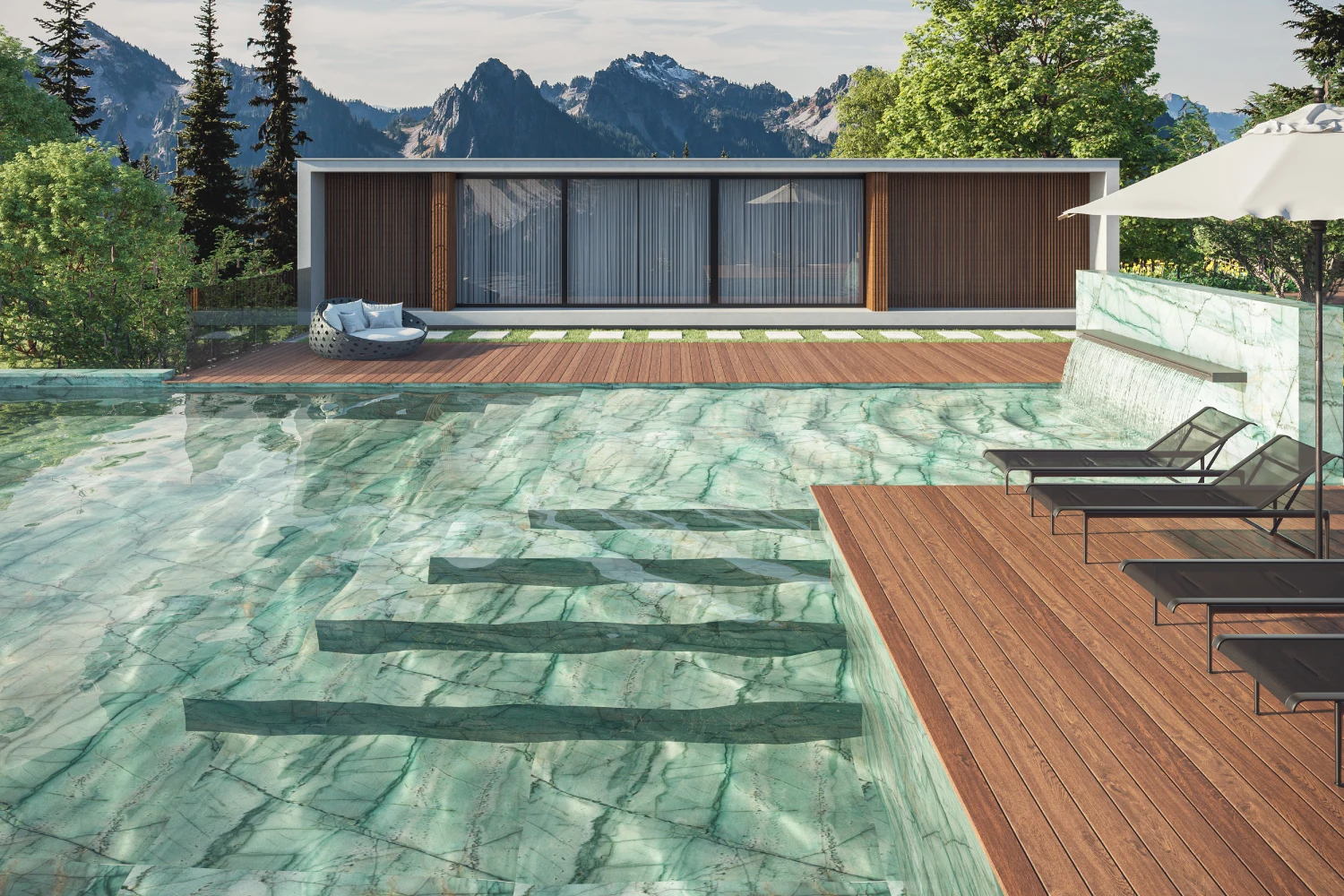
Quartzites and their applications for pool edges
When designing the outdoor area of a house, the choice of pool edge stone is a decision that requires attention to detail. The pool edge is not just an aesthetic matter but also one of comfort, as it impacts thermal comfort, safety, and the durability of the environment. Among the available options, quartzite stands out as an excellent choice for composing the pool surroundings, offering sophistication, resistance, and versatility. Learn more below! Why use stone for the pool edge? Using stone for the pool edge is an excellent way to add value and style to your architectural project. Stone edges, besides conferring elegance to the environment, play essential roles in the comfort and safety of users. On days of intense heat, it is common for some pool edges to become too hot, which can cause discomfort. Stones, especially quartzites, have the ability to provide thermal comfort, maintaining a pleasant temperature and allowing you to enjoy the pool without worrying about excessive heat. Additionally, the stone edge subtly delimits the pool space, highlighting it and giving a touch of sophistication. What is the best stone for the pool edge? One of the best options for the pool edge is undoubtedly quartzite. Quartzite is a metamorphic rock, formed by the alteration of arenitic rocks (sandstone), under high pressure and temperature over millions of years. The formation of quartzite results in a rock rich in quartz, which gives the stone remarkable resistance to impacts, abrasions, and thermal changes. With its high resistance and unique beauty, quartzite perfectly adapts to different project styles, whether for traditional pools or modern infinity-edge pools. Its wear resistance, low water absorption, and color diversity make it the ideal choice for outdoor and indoor areas. Thus, quartzite is very versatile and can also be used in other spaces, such as leisure areas, balconies, and even inside pools. Advantages of quartzite for pool edges Quartzite is one of the best choices for those seeking a durable and elegant stone for pool edges. See the main advantages of this material! Superior durability: Quartzite is an extremely resistant rock, capable of withstanding the action of water, sun, and climate changes, maintaining its appearance over time. Thermal comfort: Being a natural stone, quartzite has low heat absorption, ensuring that the pool edge remains comfortable for the feet, even on very hot days. Safety: Many quartzite finishes have anti-slip characteristics, reducing the risk of slipping around the pool and providing more safety. Easy maintenance: Quartzite requires little maintenance, as it is easy to clean and preserves the beauty of the pool edge for many years. Sophisticated appearance: Quartzite is a naturally elegant stone, with a variety of colors and patterns that bring sophistication to the environment, making the pool area even more inviting. Versatility: Besides being ideal for pool edges, quartzite can also be used in floors of indoor and outdoor areas, balconies, kitchens, bathrooms, among other environments. Best quartzite patterns for pool edges Decolores is one of the leaders in the market when it comes to quartzites, offering various options of stone for pool edges to meet all tastes. Get to know some of our best quartzite patterns for pool edges! Ijen Blue With an impressive geological origin, Ijen Blue is a quartzite that stands out for the surprising contrast between bluish-gray and orange-yellow. Its unique beauty is the result of the presence of iron minerals, which give the stone a rich and vibrant tone. Leblon The Leblon quartzite is perfect for those seeking a softer tone, with greenish-blue hues that evoke the Brazilian coast. Its geological formation, linked to sea level variation, makes its colors and textures a reflection of nature, creating a serene and elegant environment. Da Vinci The Da Vinci quartzite is a timeless choice for those seeking a stone that combines resistance and sophistication. With minerals that confer a vibrant green to its surface, Da Vinci is a crystalline quartzite that resists time and weather, being ideal for high-durability and beauty pools. Where to find natural stones for pool edges? Decolores is the reference company in the production and processing of natural stones, such as quartzites, marbles, and granites. With over 20 years of experience, Decolores stands out for excellence in stone transformation, creating high-quality and uniquely beautiful products. We have an extensive portfolio of options for pool edges, such as Mont Blanc and Da Vinci quartzites, with various finishes available, such as polished, honed, and brushed. Additionally, we offer specialized service to ensure that architecture and interior design professionals find the best solution for their projects. If you are looking for a pool edge stone that transforms the pool area into a unique and enchanting space, be sure to check out our complete catalog of quartzites!
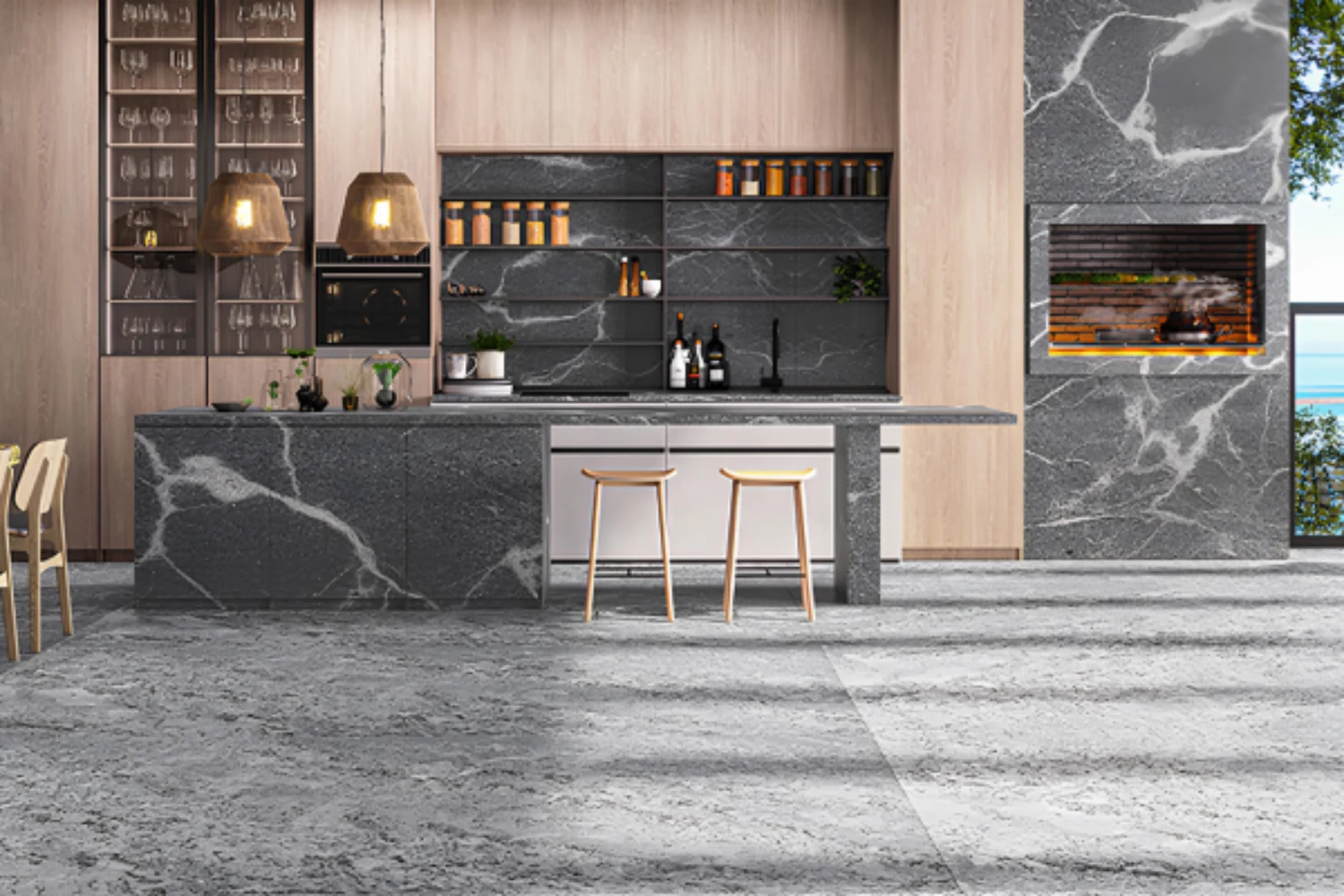
Granite for outdoor areas: much more durability and elegance
Granite is undoubtedly one of the most appreciated natural stones in construction and design. According to the Brazilian Association of Ornamental Stones, granite is one of the most exported materials. But what makes granite for outdoor areas so special? In this article, discover the reasons why granite is the ideal choice for outdoor spaces, how to use it in decoration, and explore some incredible trends for your project! Why use granite for outdoor areas? Granite for outdoor areas is the perfect solution for those who want to combine elegance and practicality. But before understanding the advantages of this stone, it's important to know what granite is. Granite is an igneous rock formed by the cooling and solidification of magma. It is mainly composed of quartz, feldspar, and mica, which give the material its resistant nature and unique tones. Its origin makes it resistant to weathering, making it an excellent choice for outdoor environments. Learn more below! Beauty and unique texture One of the great qualities of granite is its beauty. The unique texture and various color tones of granite are the result of its mineral composition and natural formation process. Anti-slip material In outdoor areas, safety is certainly a priority. Granite stands out for its anti-slip properties, making it a smart choice for places exposed to rain or moisture, such as pool areas, sidewalks, and stairs. Resistance to weather conditions Its mineral composition makes granite resistant to wear caused by exposure to sun, rain, and temperature variations. Thus, granite maintains its appearance intact even after long periods of exposure. Versatility in architectural styles Granite's adaptability is one of the reasons it has become one of the most sought-after materials in the construction market. In a modern architecture project, for example, granite can be used to create a clean and sophisticated environment. In more rustic or Mediterranean styles, granite can be combined with natural elements to offer coziness. Where to apply granite in outdoor areas? Granite for outdoor areas is quite versatile and can be used in various applications, the most common being: outdoor flooring — granite is ideal for sidewalks and leisure areas, such as patios and balconies; outdoor granite countertops — in outdoor kitchens with barbecues, granite is a perfect choice for durable and easy-to-clean countertops; wall and pool cladding — use granite to create a standout wall or to line pool edges; stairs — granite stairs are safe, anti-slip, and very durable, ideal for gardens, entrances, and balconies; facades — use granite to create facades for luxury buildings and commercial properties. Stay updated on granite trends in architecture and decoration Granite remains a timeless choice, of course, but trends in architecture and decoration evolve every year. Discover three trends that are gaining popularity and expand your possibilities in outdoor granite projects! Mixing tones and textures Currently, the integration of tones is a growing trend in design; a good example is the combination of earthy colors, such as Baltic Amber and Mocha Mousse, with the dark and light tones of granite. Integration of other materials with granite Granite can be combined with other materials, such as glass, metals (like copper and stainless steel), and wood, creating interesting contrasts. For example, by integrating granite and glass in an outdoor gourmet area, you create an ideal environment for gatherings and family parties. Granite with gray nuances, combined with wood or metallic elements, is also a trend to create a contemporary look in gardens and balconies. Biophilic design decoration Biophilic design seeks to create a connection with nature, and granite, with its natural origin, is the perfect material for this proposal. Combining granite with plants, wood, and other natural elements is a possibility to create a cozy environment. What are the main finishes for granite? Granite finishes can significantly alter the texture and feel of the material. For outdoor applications, the most popular finishes are: polished finish — has an intense shine and a very smooth and elegant surface; brushed finish — has a satiny and silky texture, but with a more anti-slip touch for floors and cladding; honed finish — provides a more natural and matte look, with an anti-slip texture ideal for pools and stairs. Decolores recommends: discover the best granites for outdoor gourmet areas When it comes to choosing the ideal granite for an outdoor gourmet area, quality and durability are essential factors. Decolores is recognized for offering high-standard granites, perfect for withstanding adverse conditions while ensuring a timeless look. Our careful processing results in stones with high-level textures and finishes, ready to transform your project! Below, discover the best granite patterns for outdoor areas, available at Decolores. Makalu Makalu granites are an unbeatable choice for those seeking elegance in their outdoor area. With its combination of a dark background, red and white veins, it creates a modern environment, offering a sense of refinement and exoticism. White Dune White Dune granites are a light and sophisticated option, with a gray base and veins in white and silver tones. Its soft appearance brings lightness to the environment, making it perfect for those who want a cleaner style for their gourmet area. Silver Grey Silver Grey granite is one of the favorites for outdoor projects due to its versatility and beauty. With its dark gray color and imposing white veins, it complements a wide range of architectural styles. Now you know why granites are ideal for outdoor projects and how to choose the best pattern for your client's satisfaction. If you are planning a project with granite for outdoor areas, contact the Decolores sales team and request a quote!
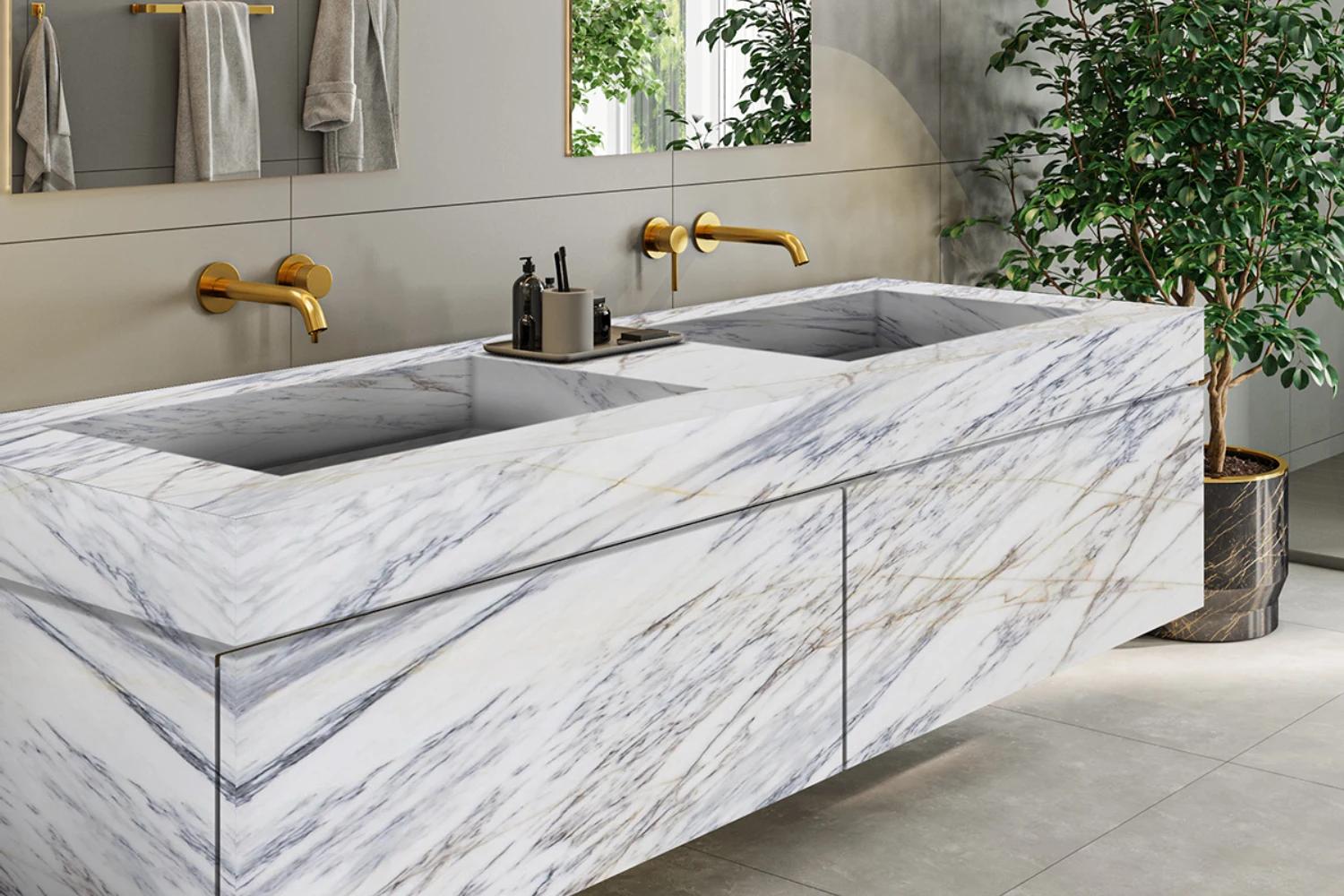
Marble bathroom countertop: style and creativity in interior architecture
When combined with other elements, a marble bathroom countertop can become the focal point of an interior design project, adding a touch of refinement and originality. In this article, we will present the most popular types of marble for bathroom countertops, along with decoration tips to help you make the most of this noble material. Whether you are an architect, designer, or simply an enthusiast of good taste, here you will find inspirations that will enrich your project. Let’s take a look? Types of marble for bathroom countertops Marble is a stone that stands out for its beauty and versatility. Each marble pattern has unique characteristics, capable of creating different atmospheres. Decolores offers a variety of patterns that can adapt to different styles and preferences. Below, take a look at five exceptional marble bathroom countertop patterns available in Decolores' portfolio! Carrara Originating from Italy, Carrara marble is one of the most famous and sought-after marbles in the world. Its predominantly white tone, with soft gray veins, conveys a sense of freshness and brightness. Ideal for bathrooms seeking a classic and clean environment, Carrara is perfect for minimalist-style projects, adding softness to the space without losing elegance. Crema Marfil Crema Marfil is a Spanish marble known for its light beige tone and soft veins, which can range from cream to ivory. Its soft tone is perfect for environments that aim to convey serenity and warmth. When used in bathroom countertops, Crema Marfil marble adds a cozy feeling without sacrificing sophistication. It can be combined with wooden elements or darker marbles to create contrast. Statuario Statuario marble, also from Italy, is famous for its pure white base with delicate gray veins. This marble is considered one of the most luxurious and is widely used in high-end projects. When used in a marble bathroom sink countertop, it pairs perfectly with neoclassical-inspired environments. Calacata Antico With its intense white base and golden and grayish veins, Calacata Antico is a marble that exudes exclusivity. Its origin is also Italian, and its pattern is marked by irregular veins that make each piece unique. Ideal for high-luxury bathrooms, Calacata Antico is perfect for those who want an imposing space and a bathroom countertop full of personality. Nero Marquina For those seeking dark and sophisticated tones, Nero Marquina is the perfect choice. With its black base and intense white veins, this marble is ideal for contemporary and bold design projects. Its dark and striking color harmonizes perfectly with gold or metallic accessories, creating a luxurious look. 5 creative designs and trends for marble bathroom countertops Now that you know the ideal marbles for bathroom countertops, it’s time to explore some creative trends to incorporate them into your project. Check out six design suggestions that will transform your bathroom, making the most of marble’s beauty and functionality! 1. Marble combined with wood The combination of marble and wood is one of the hottest trends in bathroom decor. The softness and warmth of wood balance the coolness of marble, creating a cozier yet elegant environment. Use marble countertops in softer tones, such as Crema Marfil, and pair them with wooden cabinets in natural or dark tones. 2. Combination with gold metals For a luxurious and refined bathroom, combine marble countertops like Calacata Antico with gold or bronze metals. The shine of gold contrasts perfectly with the rich and textured surface of marble, creating an opulent and contemporary look. Opt for gold faucets, handles, and accessories to enhance the effect. 3. Same marble on walls and floors For a fully immersive experience, invest in using marble for both the countertop and the walls and floors. For example, you can create a continuity effect by using the same marble pattern for the countertop and feature wall panels. This creates a sense of fluidity in the space. 4. Contrasting veins If you prefer, you can highlight the marble countertop as the focal point of the bathroom by choosing marbles with striking veins, such as the Italian marble Pietra Toscana. When paired with floors and wall coverings in more neutral or solid tones, such as white or gray, the countertop will become the centerpiece of the space, creating an interesting visual contrast. 5. Exotic-style bathroom with marble If you’re looking for a more exotic and bold style, combine Nero Marquina with other elements in vibrant colors, such as red, creating a cosmopolitan look. The combination of intense tones and raw materials brings a daring vibe to the space. Now that you’ve explored marble options and the main design trends for marble bathroom countertops, it’s time to dive even deeper into the possibilities. Check out the complete marble catalog from Decolores and discover how natural stone can bring sophistication to your project!
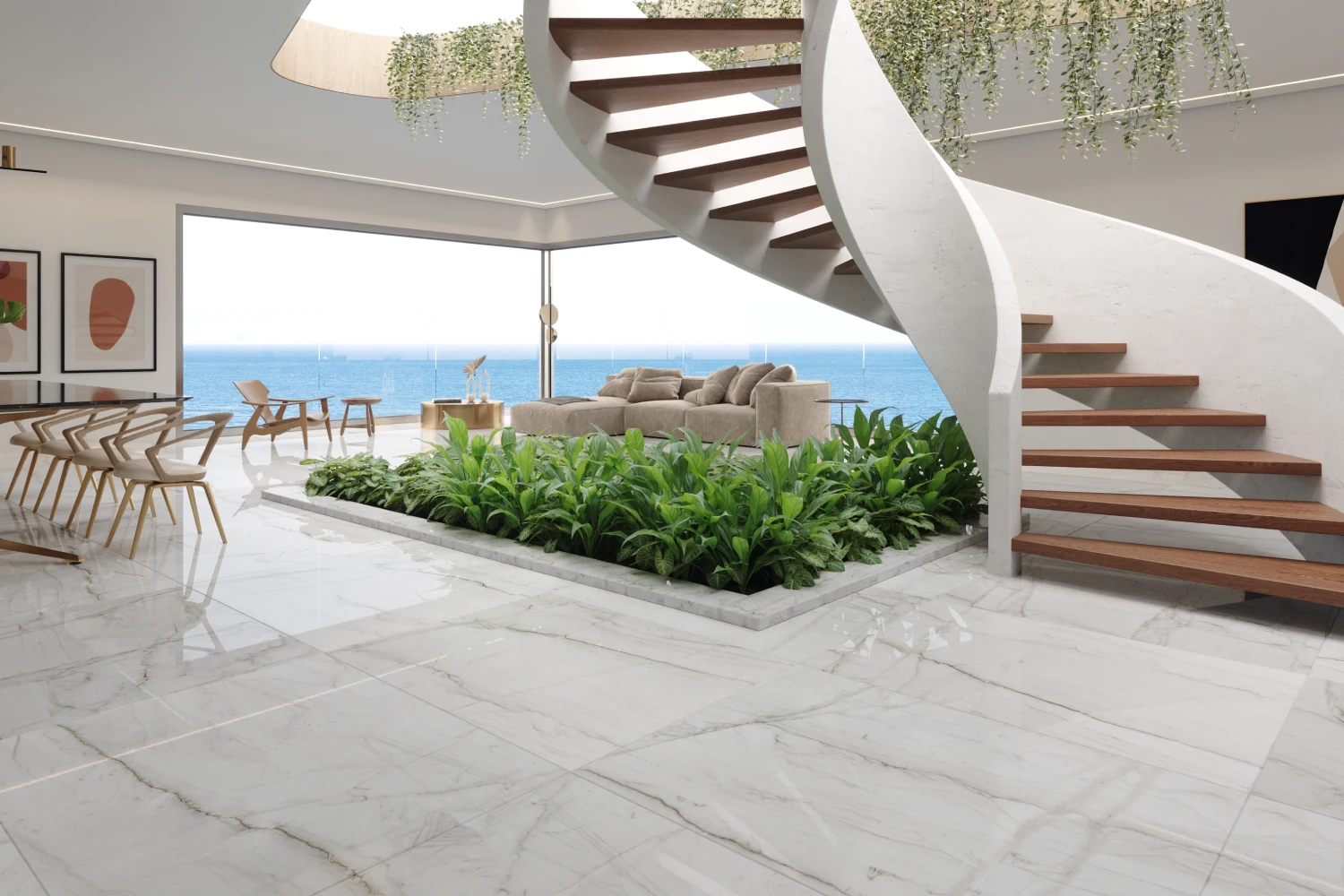
Contemporary design: natural rocks for innovative environments
Contemporary design stands out for its minimalist and functional approach, where the choice of materials is essential to create an environment that is both elegant and practical. Among the elements that stand out the most in this style, natural stones play a fundamental role, providing sophistication, durability, and a touch of nature to the space. Below, discover some of the most commonly used stones in this type of design and how you can combine them to create contemporary projects. Follow along! What is contemporary design? Contemporary design is an aesthetic approach that reflects the present, focusing on simplicity, functionality, and innovation. Unlike traditional design, which is characterized by ornamentation and intricate details, contemporary design seeks clean lines and minimalist forms, creating a sense of lightness. It moves away from conventions and explores new materials and ideas, delivering a cutting-edge aesthetic. Contemporary design is also marked by simplicity. Furniture and spaces in this style often incorporate glass and metal, combined with smooth and shiny finishes, reflecting the pursuit of minimalism. However, this simplicity does not mean a lack of luxury; on the contrary, it represents a new kind of sophistication, where each element is carefully chosen to convey elegance and harmony. Though simple, contemporary design is an expression of refined luxury, valuing the quality of materials and attention to detail. Its focus is on high-quality furniture, built with modern techniques and durable materials, designed to create airy and functional spaces. Each piece is thoughtfully crafted to balance form and function harmoniously, bringing practicality and style. By choosing a contemporary design environment, you opt for a style that celebrates innovation and practicality, ideal for the pace of modern life. The power of minimalism: characteristics of contemporary design Contemporary design is characterized by the pursuit of simplicity and a connection with the environment in a natural and sustainable way. Each element, with its simplicity and precision, reflects a refined and modern aesthetic. The main features of this decor style are: natural materials such as marble, quartzite, bamboo, and wood, which bring a touch of sophistication and respect for nature; lush landscaping, creating natural spaces that convey a sense of freshness and harmony; natural light with large windows, which allow the space to be flooded with light, making environments more spacious and pleasant; colors dominated by neutral tones, such as gray, brown, and pastels, as well as white, which adds lightness and clarity to the space; furniture with bold and functional designs, combining materials like wood, glass, and steel; use of mirrors to expand the perception of spaces, creating a sense of greater room and brightness. Marble in contemporary design Marble is a natural stone that fits perfectly into contemporary design, offering beauty and a unique texture. Some of the most beloved patterns for composing contemporary spaces are Carrara marble and Sahara Black, available in the Decolores catalog. The Carrara is known for its subtle gray veins, creating a luminous surface, ideal for tabletops or bathroom countertops. On the other hand, the Sahara Black, with its dark tone and golden veins, is perfect for adding a touch of sophistication to spaces like living rooms and dining areas. Both marbles bring the blend of softness and luxury that defines contemporary design. Other natural stones ideal for creating contemporary spaces In addition to marble, other natural stones can also be used to create stunning contemporary environments. Decolores offers a selection of stones that meet the demanding standards of clients and designers, such as travertines and quartzites, which are perfect for those looking to add a touch of sophistication to interior design. Travertines Originating from Italy, travertines are ideal for floors, walls, and bathroom coverings, providing a sense of elegance without losing the simplicity of contemporary design. A great example of travertine is the Alabastrino pattern, which has a light tone with shades ranging from beige to cream, perfect for creating a serene environment paired with materials like wood. Quartzites Quartzites are metamorphic rocks composed of 75% quartz and offer a surface ideal for spaces that require sophistication and durability. Contemporary design loves quartzite patterns, such as Leblon, with its bluish-green tones, Mont Blanc, with its traditional white and subtle veins, Naica, with its poetic beige veins, and Fusion Black, famous for its luxurious black. These stones are perfect for creating focal points, such as panels and coffee tables. In summary, contemporary design is, above all, a celebration of the purity of forms and the natural beauty of materials. Natural stones, such as marble, travertine, and quartzite, are essential elements in this style, bringing complementary tones. Now that you know the main natural stones for composing a contemporary design project, don’t forget to check out our complete selection of Decolores products. Discover the power of natural stones in your contemporary projects!
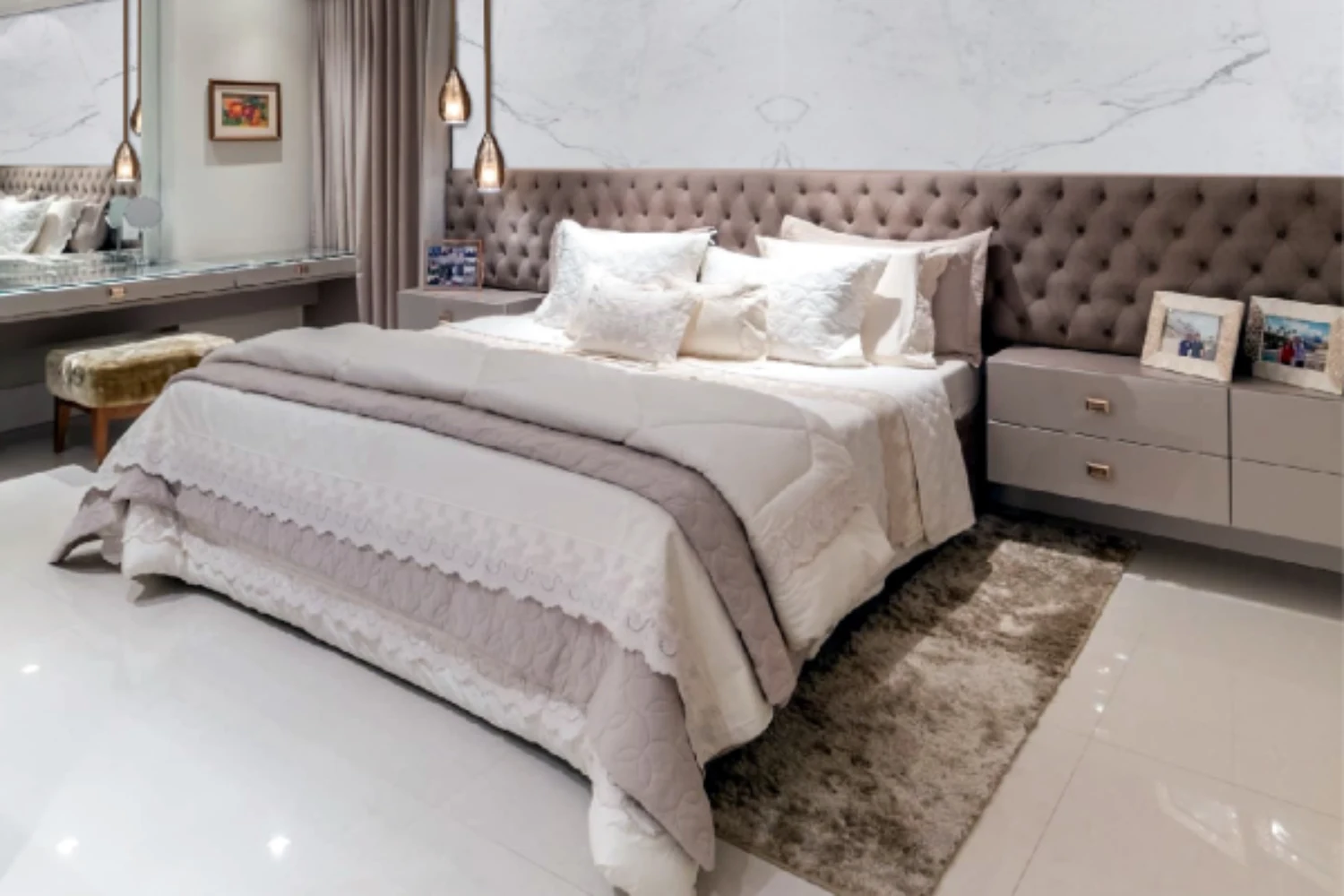
Discover creative marble decorations
Marble decoration is synonymous with timeless elegance, being a material that, in addition to its unquestionable beauty, brings sophistication to different types of environments. Whether in residential or commercial projects, marble stands out for its durability, versatility and unique aesthetics. Today you will find the best ways to use marble in decoration, Decolores marble patterns and how it can transform spaces into places of refinement and charm. What is marble in decoration? Marble is a natural rock used in interior design due to its beauty and resistance. Known for its distinct veins and tones that range from pure white to deep black, marble is ideal for those seeking refined decoration. Its metamorphic origin, which occurs under high pressures and temperatures inside the Earth, gives the stone its unique appearance, where each piece of marble has an exclusive pattern of veins and tones. In marble decoration, this material is used in a variety of ways, from coverings and floors to furniture, always adding a luxurious touch to environments. In addition to its aesthetic function, marble is highly durable, which makes it an excellent choice for projects seeking longevity and resistance to wear. Discover 6 suggestions for marble decoration Below, check out 6 creative ways to use marble in decoration with the patterns of Decolores. Each of the suggestions can be adapted to different styles of decoration, from classical architecture to contemporary style. 1. Marble on the living room wall Whether on an entire wall or in a strategic panel, marble transforms the environment, creating a luxurious focal point. For a more sophisticated effect, options such as Calacatta marble, of Italian origin with a white background and gray veins, or Nero Marquina, with its deep black and contrasting white veins, is ideal for creating an elegant contrast that draws the eye. This type of cladding can be combined with modern furniture and soft lighting, creating a cozy and high-end atmosphere. 2. Marble fireplaces In environments such as living rooms, the marble fireplace is a classic of luxury decoration. Marble gives the fireplace a chic and cozy look at the same time. To create a sophisticated space, Sahara Black marble from Morocco is a great option, with its dark tone and discreet veins. A marble fireplace adds a touch of refinement to the environment and is also a comfortable piece for cold days. 3. Kitchen Countertops and Islands Marble décor is a traditional choice for gourmet kitchen countertops and islands, bringing a touch of class and functionality to the space. Marble offers a durable and easy-to-maintain surface. In addition, the aesthetics of marble can transform the kitchen into an elegant living space. Options like Van Gogh marble are perfect for creating marble countertops with heavenly yellow and white tones. 4. Bathrooms with marble coverings In bathrooms, marble is a choice that makes the environment more luxurious. Covering the walls and floors with marble transforms the bathroom into a true spa. For a clean and classic look, Mármore Statuario is great, with its light and neutral veins, which provide a touch of luminosity to the environment. 5. Marble Tables Whether it's a dining table, a coffee table or a side table, marble transforms furniture into a true work of art. The marble Calacata Paonazzo is widely used for marble tables, giving a modern aesthetic. Marble tables can be combined with chairs and other minimalist design furniture to create a refined environment. 6. Indoor floors Marble can be used for floors in living rooms, hallways, entrance halls and even indoor stairs. The resistance of marble, combined with its luxurious appearance, creates a perfect floor for those seeking durability and elegance. Marbles such as Crema Marfil and Aurora Gold are a great option for flooring, reflecting light and expanding the space, while the natural texture of the stone offers a unique look to the environment. Marble decoration is an impeccable choice for those seeking sophistication, durability and timeless style. With its diverse applications, marble adapts to different design styles and transforms any environment into a luxurious space. For those who want to explore more options and choose the ideal stone for their project, check out the complete line of marbles from Decolores, including our dolomitic marbles.
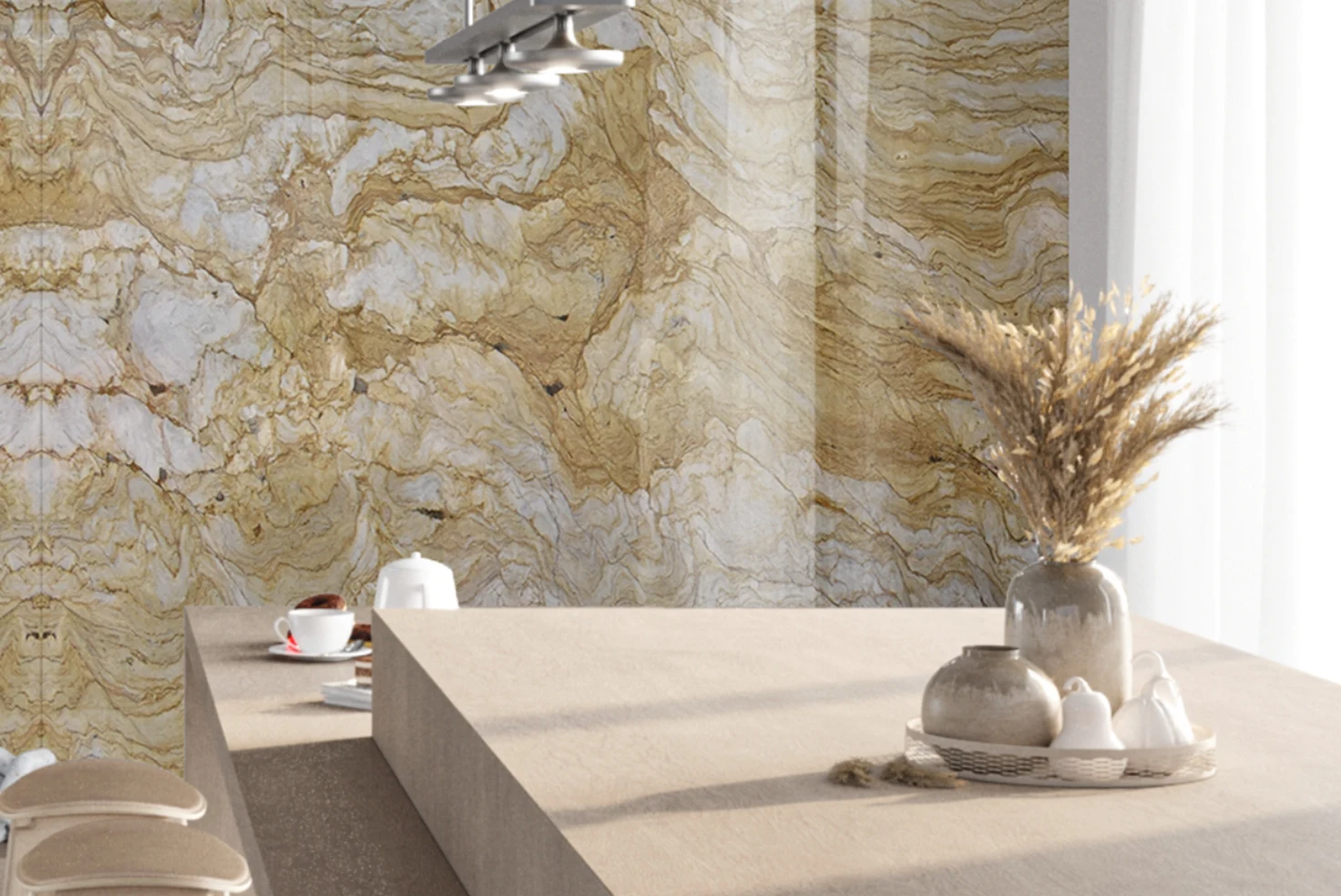
Find out what Brazilian marbles are and their advantages
Brazilian marble, with its unique beauty and diversity, stands out on the global stage as one of the most sought-after materials for architecture and interior design projects. Renowned for its quality, durability, and wide range of tones, this natural resource reflects Brazil's mineralogical potential, home to some of the most important marble quarries in the world. Below, discover more about the preciousness of Brazilian marble and its main highlights at Decolores! Why value Brazilian marble? Discover its advantages Brazilian marble is not just a high-quality raw material; it is also a product that significantly contributes to the national economy. According to the Terra portal, the United States alone accounts for about 62.4% of Brazil's marble and granite exports. This highlights the international market's confidence in the robustness and sophistication of Brazilian ornamental stones. In summary, the main advantages of Brazilian marble are: Chromatic variety — Brazilian quarries offer a wide palette of tones and patterns, ranging from neutral and classic shades to vibrant options; Sustainability — extractions in Brazil must follow sustainable practices, respecting environmental norms and promoting the reuse of waste. Thus, by choosing Brazilian marble, you invest in quality and beauty while contributing to the strengthening of the national industry and the recognition of Brazilian marble quarries in the global market. The international market increasingly seeks Brazilian marble Brazil is one of the largest exporters of ornamental stones in the world, with its products present in prestigious international projects in countries such as Mexico, Italy, and the United States. The growing demand for Brazilian marble reflects its originality and the ability of Brazilian companies, such as Decolores, to meet global quality standards. Foreign architects and designers recognize the potential of Brazilian marble to transform spaces and add exclusivity. Its application goes beyond the conventional, being incorporated into projects ranging from countertops and floors to wall coverings. What are the Brazilian marbles? Among the various types of Brazilian dolomitic marbles, some stand out for their unparalleled beauty and exceptional properties. Discover some of these mineral gems available at Decolores! Aurora Gold The Aurora Gold marble is the new standard of the Poetry Collection by Decolores, drawing attention for its warm tones with golden veins that bring elegance and sophistication to any environment. Its unique texture is ideal for projects that seek to combine refinement and coziness, and it can be paired with wood, concrete, and metals. Telesto The Telesto marble, also from the Poetry Collection, is characterized by soft gray tones and subtle white veins. Therefore, it is perfect for spaces that prioritize harmony and lightness. Its resistance and impeccable finish make it a versatile and sophisticated option. Michelangelo Despite its name being inspired by the great Renaissance master, the Michelangelo marble was formed 700 million years ago in the extinct Capiru Sea in Paraná. It features refined patterns and classic tones, making it ideal for projects that evoke timelessness in their essence. Matarazzo Another Brazilian marble is the Matarazzo, known for its white tone with gray and slightly golden veins. It is a stone from southern Brazil widely used in minimalist and contemporary projects, enhancing the luminosity and purity of spaces. If you seek quality and sophistication, Decolores offers an exceptional selection of Brazilian marbles. Investing in these stones means valuing the best of Brazil, promoting local culture, and encouraging the sustainable development of the mining industry. For architects and interior designers, incorporating Brazilian marble into their projects is a way to add aesthetic and functional value while standing out in the market with authentic materials. Discover the endless possibilities of transformation with Brazilian marble and inspire the richness of Brazilian quarries in your projects! Use our room simulator and test our marble catalog in various living rooms, kitchens, and more.
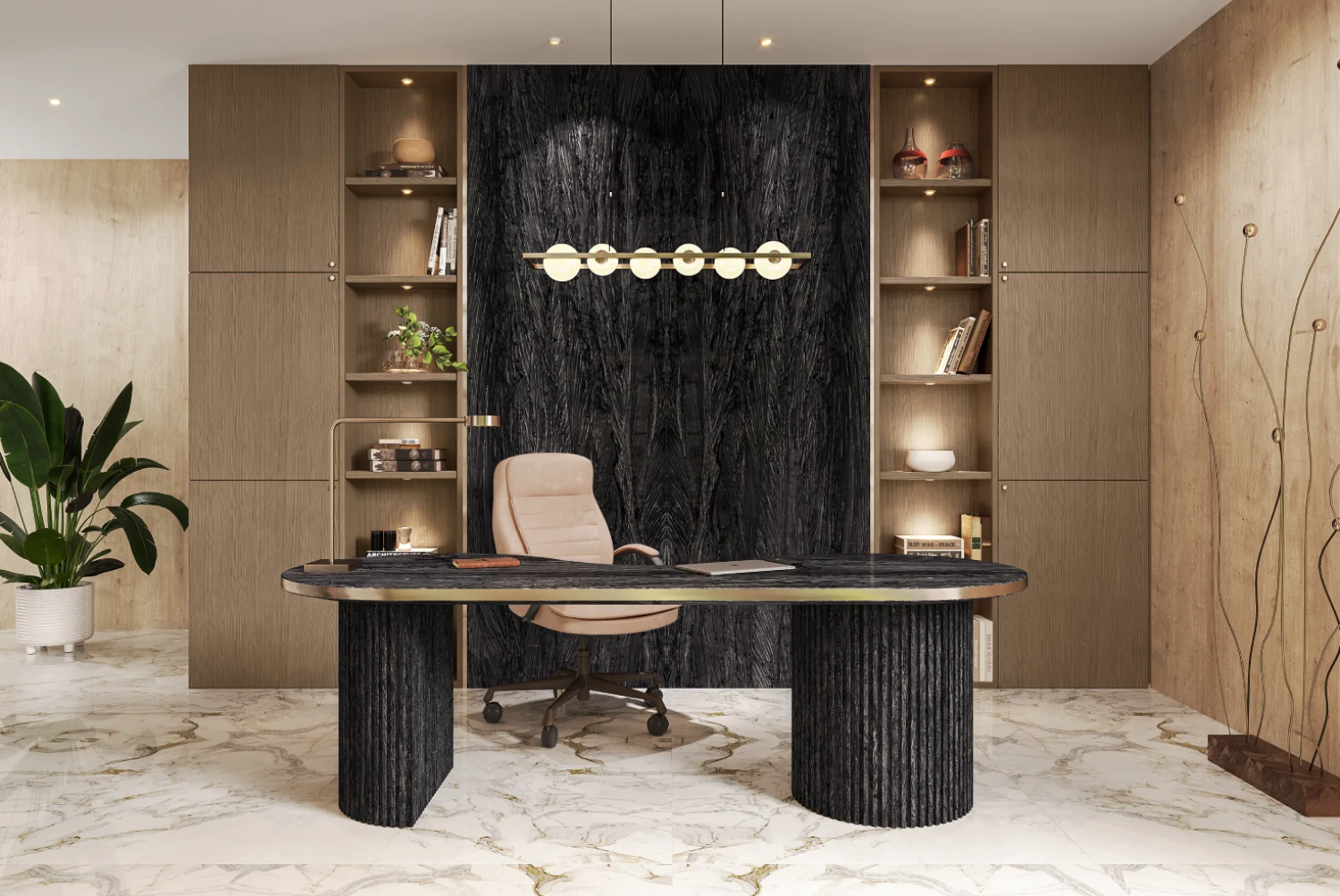
Find out where to use quartzite and why you should use it in your projects
When it comes to choosing materials for architecture and decoration projects, the question that always arises is where to use quartzite. This natural stone, known for its elegance, durability, and versatility, emerges as a prime choice for various applications. If you are looking for durability without compromising on aesthetics, quartzite is the ideal answer. Learn more about the characteristics of this fascinating mineral, its origin, the best ways to use it, and the unique tones available at Decolores. What is quartzite? Quartzite is a metamorphic rock composed mainly of quartz crystals, formed from the transformation of sandstone, a type of sedimentary rock. This metamorphic process occurs under high pressure and temperature, resulting in an extremely hard and compact rock. Thus, quartzite is a robust, resistant, and highly durable rock, ideal for various types of applications, whether in indoor or outdoor environments. In addition to its durability, quartzite stands out for the beauty of its patterns and tones, which vary depending on the origin of the material. Its veins and shades are formed by minerals present during the transformation process, making each piece unique and exclusive. This natural characteristic makes quartzite highly valued in the architecture and decoration market. What is the origin of quartzite? Quartzite was formed billions of years ago when sandstone, a sedimentary rock composed of quartz grains, was subjected to high temperatures and pressures within the Earth. This process occurs during the formation of mountain ranges or other geological activities that cause significant transformations in rocks. Quartzite can be found in various parts of the world, with Brazil being one of the largest producers of this high-quality rock. The beauty and variety of quartzite come from its origin, as the material can present a range of unique patterns, depending on the minerals present in the original sandstone. It is precisely this diversity of tones and textures that makes it so attractive and versatile for different types of projects. Where to use quartzite in your projects? Quartzite can be used in all types of indoor and outdoor architecture projects. Due to its durability, quartzite is perfect for high-traffic areas, such as floors and coverings, both indoors and outdoors. Its resistance to wear, moisture, and heat makes it an excellent choice for areas like kitchens and bathrooms, where materials require greater resistance to damage and ease of maintenance. In addition, quartzite is ideal for countertops and tables, as its smooth and resistant surface ensures practicality and durability. It is also possible to use quartzite in decorative details, such as exterior coverings for fireplaces, walls, stairs, and even custom furniture, adding a touch of sophistication and exclusivity to any environment. Main quartzite tones from Decolores Decolores is recognized for its high-quality quartzites, offering pieces that cater to different architectural styles and preferences. With light and soft tones, the Mont Blanc Quartzite is the ideal choice for those seeking an elegant and clean aesthetic. Its subtle veins and refined finish make it perfect for modern and sophisticated environments, such as kitchen countertops, floors, and wall coverings. With a more bluish and textured tone, the Da Vinci Quartzite features striking veins that make each piece unique. It is perfect for those looking for a material with impact. Its durability is such that it is ideal for adding a touch of exclusivity even to pools and outdoor floors. For those who want a more contemporary touch, the Leblon Quartzite is an option that combines neutral and delicate tones with softer veins. This gray tone offers incredible versatility, being perfect for discreet environments, such as offices and entry halls, and is also an excellent choice for wall coverings and floors in large areas. When considering where to use quartzite in your projects, the versatility, durability, and unique aesthetics of this material make it an unbeatable option. Whether in countertops or coverings, quartzite stands out as one of the most functional materials to transform any environment. Decolores, with its 20 years of experience in the market, offers a complete line of high-quality quartzites, ideal for any type of project. Check out our complete catalog of quartzites and choose from a variety of tones to meet your clients' projects!
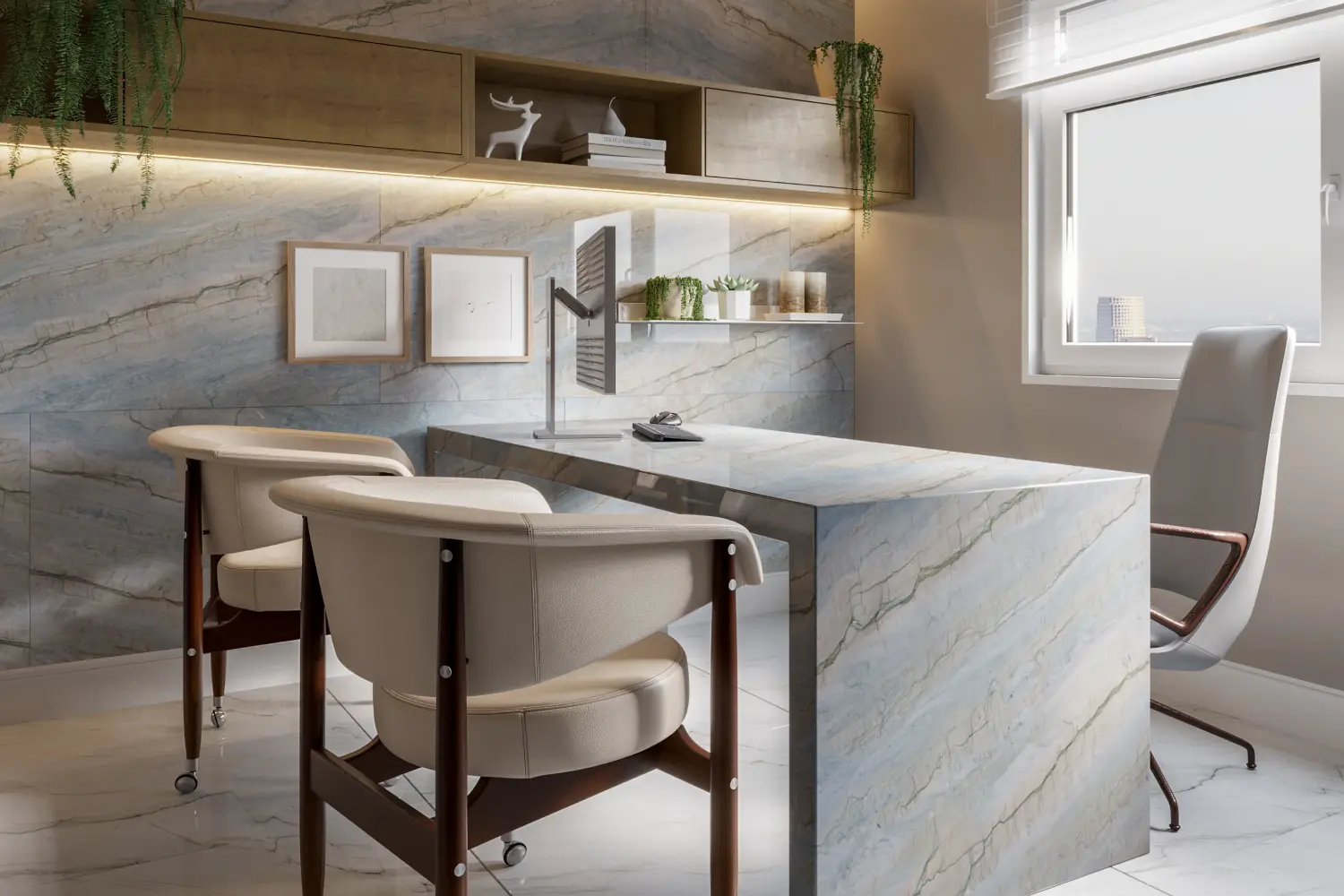
Slim finish: stay on top of this minimalist trend
When it comes to designing modern and sophisticated spaces, the slim finish has stood out, especially for kitchen and bathroom countertops. With its minimalist and elegant aesthetic, it not only pleases the eye but also raises an important question: what are the advantages of this style of finish? Today we will understand how this technique can offer a perfect combination of beauty and functionality with natural stones. What is the slim finish? The slim finish is a trend that stands out for using the natural thickness of the stone, typically with edges of 0.02 to 0.03 cm, as the final finish, without the need for additional layers of material. Also known as "fine finish" or "straight edge," this technique highlights the natural beauty of the stone and allows for quicker installation. This approach creates elegant and modern surfaces, giving a sophisticated and clean aesthetic without the weight and traditional thickness. The slim finish can be applied in various areas, such as: kitchen countertops; dining or office tables; bathroom sinks; wall coverings; shelves and panels. Is a slim finish less durable than the traditional one? Despite its lightweight thickness, the slim finish does not compromise durability. Its resistance is comparable to the traditional finish. The key with this type of application is to maintain proper care and use products like water repellents as recommended by the manufacturer and the technical guidelines provided by the professional working with these materials, such as Decolores products. Natural stones are highly resistant and durable, but like many other elements, they need some basic care to maintain their luxurious appearance. Discover the advantages of the slim finish The slim finish is highly recommended for projects that aim for a minimalist and clean look, where a sleek aesthetic is essential. Furthermore, the slim finish allows for a harmonious integration between different design elements. Check out the advantages that the slim finish can bring to architectural and interior design projects! Clean aesthetic One of the main characteristics of this finish is its minimalist and clean aesthetic. The thin stones create a sophisticated look that adapts to various decoration styles. This visual lightness makes spaces appear more fluid and contemporary. Lightweight and easy integration Quartzite, marble, or granite slabs with a slim finish are lighter than traditional options, making handling easier and adding a modern touch. This finish offers more design flexibility, allowing it to be integrated into different spaces without compromising structure. Lower cost The slim finish can lead to savings in projects. After all, the slim technique uses a smaller amount of material. This eliminates the need for touch-ups and finishing layers, making this finish a more cost-effective option without sacrificing quality and beauty. Slim finish for granite and quartzite countertops The best materials for the slim finish are stones like marble, granite, quartzite, and travertine. These stones, being more resistant and having naturally smooth surfaces, provide incredible results with this technique. At Decolores, you’ll find perfect granite slabs for slim finish kitchen countertops. For example, the Makalu granite offers contemporary aesthetics, practicality, and durability through its dark background with contrasting veins. Whether polished or brushed granite, there are options to adapt to various spaces, from sinks to dining tables. Quartzite also adds elegance to panels, tables, and coverings with a slim finish. Pieces like the Leblon quartzite are ideal for all kinds of projects, including facade and pool cladding. Check out our selection of quartzites and create more stylish spaces!
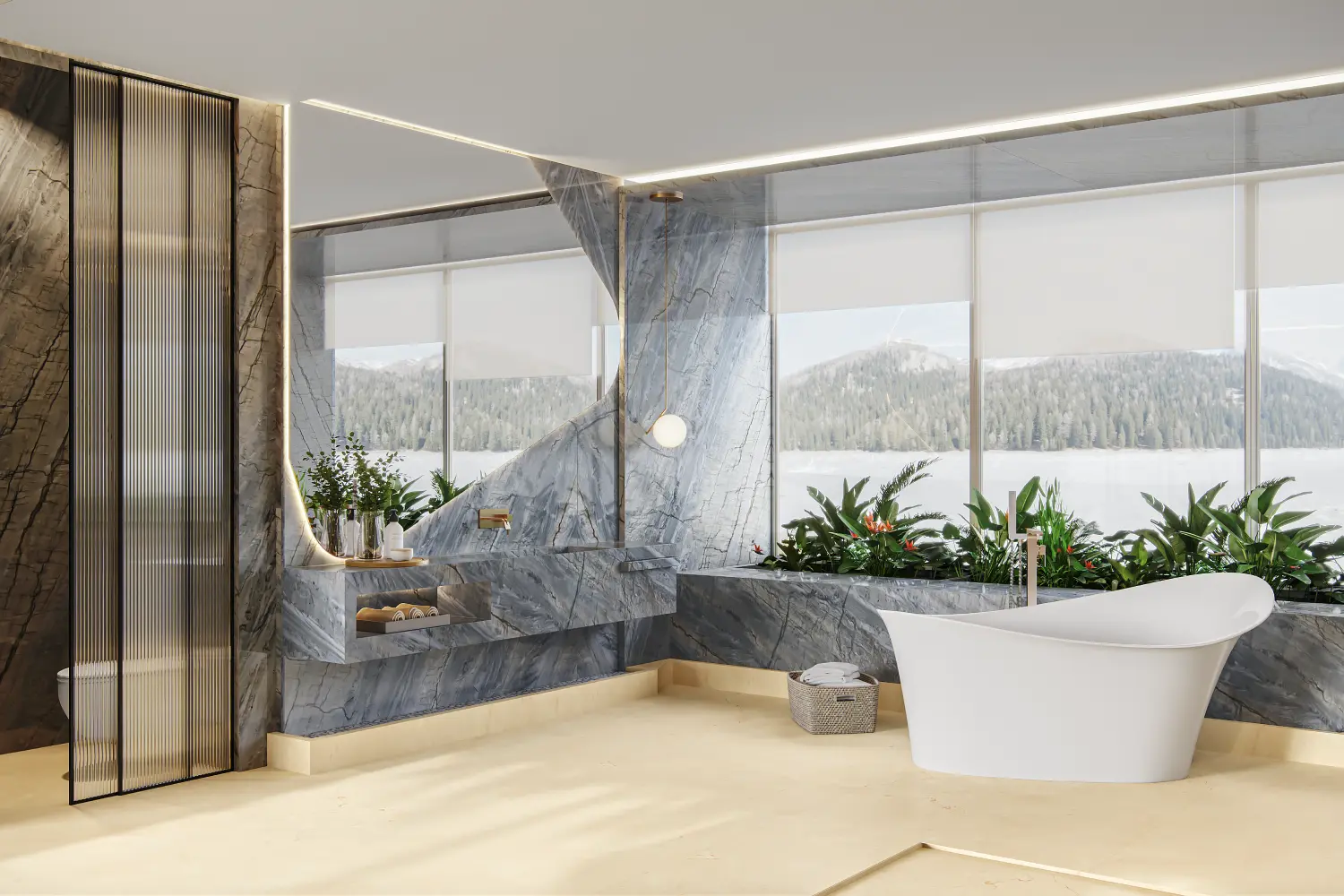
Leblon quartzite: elegance and resistance in interior projects
Quartzite Leblon is one of the most sophisticated and durable natural stones available on the market, making it the ideal choice for architects looking to combine durability and style in interior design projects. With its unique origin and impeccable finish, it offers versatility for various applications and environments without compromising on sophistication. In this blog, we will explore the main features and applications of Quartzite Leblon, highlighting its advantages for interior design projects. Enjoy your reading! The High Durability of Quartzite Leblon Quartzite Leblon is widely recognized for its unique beauty and robust composition. It stands out for its green and bluish tones, generated by minerals such as tourmaline and dumortierite, which give the stone its exclusive look. Additionally, its formation over 1.6 billion years ago, influenced by sea level variations, contributes to its natural resistance. Superior Resistance to Scratches and Impacts One of the most valued characteristics of Quartzite Leblon in interior projects is its resistance. With a score of 7 on the Mohs scale, it is highly resistant to scratches, making it ideal for high-traffic and heavy-use areas such as kitchens and gourmet spaces. Its superior resistance to granite and marble makes it an excellent choice for surfaces exposed to daily wear, maintaining its integrity and beauty for much longer. Unparalleled Durability in Interior Spaces The durability of Quartzite Leblon also makes it a safe and reliable option for flooring and wall cladding in interior spaces. It withstands wear caused by time and continuous use, ensuring that interior projects maintain their sophistication and functionality for years. Furthermore, its resistance to moisture and temperature changes makes it a perfect material for bathrooms and other humid areas. Quartzite Leblon Finishes For architects seeking customization and exclusivity in their projects, Quartzite Leblon offers different finishing options that can completely transform an environment's appearance. Polished Quartzite Leblon: Sophistication and Intense Shine The polished finish is ideal for those looking for an elegant and refined look. Polished Quartzite Leblon features an intense shine that enhances its natural colors and adds a touch of luxury to the space. This finish is perfect for kitchen and bathroom countertops, as well as interior walls, creating a sense of spaciousness and sophistication. Brushed Quartzite Leblon: Soft and Natural Texture For those who prefer a more rustic and cozy finish, brushed Quartzite Leblon is the right choice. With a textured and slightly rough surface, this finish preserves the stone’s natural beauty, offering a more discreet and welcoming touch, combined with an almost matte appearance. It is ideal for floors and gathering areas, bringing elegance without losing natural charm. Honed Quartzite Leblon: Modern and Minimalist Finish The honed finish provides a smooth surface without the intense shine of the polished finish, creating a modern and minimalist effect. This finish is excellent for contemporary projects seeking a balance between sophistication and subtlety. Honed Quartzite Leblon can be used on interior floors and walls, promoting a clean and sophisticated look. Applications of Quartzite Leblon in Interior Projects The versatility of Quartzite Leblon allows it to be used in various applications, always offering durability, resistance, and luxurious aesthetics. Its unique characteristics make it suitable for environments of different styles, from classic to modern. Interior Flooring Interior floors clad with Quartzite Leblon stand out for their resistance and durability. The stone not only withstands heavy foot traffic but also adds a touch of elegance to the space. Its green and bluish tones, combined with different finishes, allow for the creation of refined and unique environments. Interior Walls Walls clad in Quartzite Leblon provide an impressive visual effect. Whether in living rooms, entry halls, or gathering areas, using this stone on interior walls creates an atmosphere of luxury and exclusivity, making it an excellent focal point in the space's design. Kitchen Countertops and Islands For architects seeking highly durable materials for food preparation areas, Quartzite Leblon is an excellent option. In addition to being heat-resistant, it withstands scratches and impacts, making it ideal for kitchen countertops and islands. With a polished finish, you can add a touch of sophistication to the space's functionality. Bathrooms and Humid Areas In bathrooms and humid areas, Quartzite Leblon offers superior resistance to moisture and temperature changes. Its beauty and durability make it perfect for cladding countertops, floors, and walls in environments such as bathrooms and spas, creating spaces that combine functionality and sophistication. Quartzite Leblon: The Perfect Choice for Sophisticated Interior Projects Quartzite Leblon stands out as one of the best options for architects who want to combine elegance, durability, and resistance in their interior design projects. With its natural beauty, various finish options, and high resistance, it transforms any space into a luxurious and functional environment. Whether for floors, walls, countertops, or humid areas, Quartzite Leblon is the ideal choice for creating durable, sophisticated, and personality-filled spaces. At Decolores, we understand the importance of offering high-quality materials for demanding and sophisticated interior projects. We carefully select the best quartzites, such as Quartzite Leblon, so you can create spaces that combine beauty, durability, and style. Our team is ready to assist in choosing the ideal finish and the best application for each project, ensuring unique, high-standard results. Count on Decolores to transform your projects into true works of art!
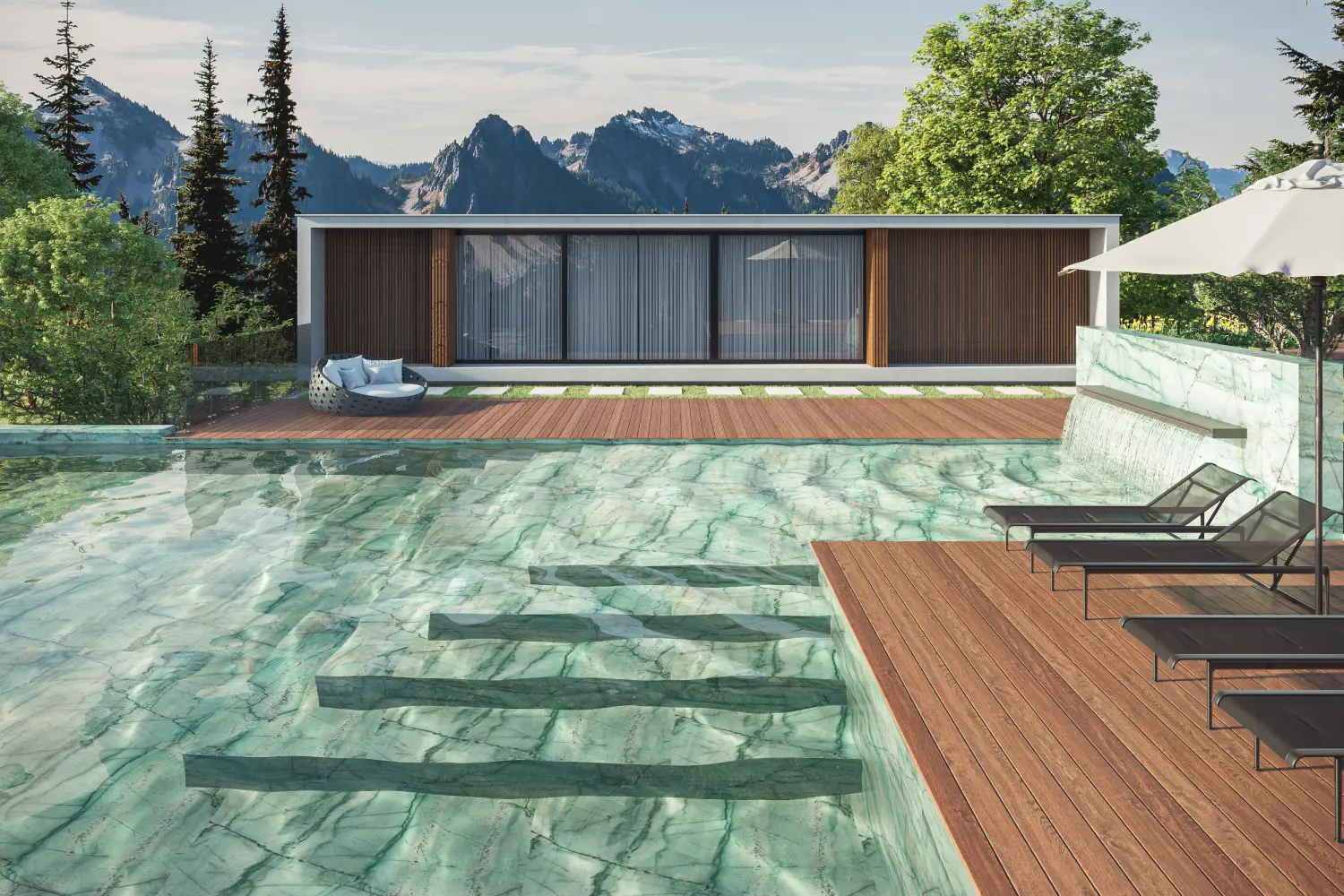
Da Vinci quartzite: how to use it to create environments
Undoubtedly, the choice of materials plays a fundamental role in creating environments that reflect style and sophistication. Among the most fascinating options, Da Vinci quartzite stands out, with its unique look and versatility. Today, we will share tips on how to use it to create captivating spaces, and you’ll see projects where Da Vinci quartzite has transformed ordinary areas. What is Da Vinci Quartzite? Da Vinci quartzite is a natural stone highly valued for its beauty and durability, widely used in architectural and interior design projects. This type of natural stone is composed mainly of quartz grains. Its formation includes relic minerals that, over geological time, have acquired exotic colors, such as its greenish hue. When this rock is subjected to high temperatures and pressures due to movements of the Earth’s crust, metamorphosis occurs. During this process, the quartz grains recrystallize and interconnect, resulting in a very durable stone: quartzite. Discover the Advantages of Da Vinci Quartzite Da Vinci quartzite is an exceptional choice for those looking to combine elegance and durability in interior and exterior design projects. One of its main advantages is its sophisticated aesthetics and unique patterns, with veins that bring a touch of class and modernity to any space. Discover why investing in Da Vinci quartzite is worthwhile! Beauty and Sophistication Da Vinci quartzite is a true gem of nature, standing out for its unparalleled beauty and sophistication. Its luxurious appearance transforms any environment, adding charm to kitchens, bathrooms, living rooms, or outdoor areas. Durability Da Vinci quartzite is known for its durability, especially in terms of water resistance. This makes it an ideal choice for kitchens and bathrooms, where moisture is more frequent. Da Vinci’s dense structure makes it less prone to stains and scratches. Additionally, it is highly resistant to high temperatures, maintaining its beauty and functionality for longer. Low Porosity This low porosity means that quartzite has a low capacity to absorb liquids, making it more impermeable. Additionally, this feature results in lower reactivity to chemicals, making these stones more stable under different conditions of use. Versatility It can be used in various decor styles, from classic to contemporary, adapting to different environments. Transform Spaces: Where to Use Da Vinci Quartzite in Your Projects Da Vinci quartzite is a smart choice to transform any environment, adding elegance and functionality. Whether in residential or commercial projects, its impressive appeal makes it an essential material. Discover how you can use it to create remarkable spaces in architectural projects! Kitchen and Bathroom Countertops In kitchens, Da Vinci quartzite shines as countertops, offering a stunning look and resistance to high temperatures and moisture. Its shine and unique patterns enhance kitchen design, creating an inviting space for family gatherings and friends. In bathrooms, this material excels in vanities and wall coverings. The low porosity of quartzite makes it ideal for damp areas, ensuring durability and easy maintenance. Da Vinci quartzite from Decolores was featured in a commercial architecture project. To make Carol’s office coffee nook more welcoming, quartzite was used on the countertop and backsplash. The material was also applied to the office table top. The combination of quartzite with its intense green tones and golden veins, together with natural wood furniture, created a comfortable and vibrant space. Wall Cladding In indoor spaces, using quartzite on walls can transform living rooms, hallways, and even bedrooms, creating a striking impact. In kitchens and bathrooms, quartzite is ideal for wall cladding, not just for its elegance but also for its durability. In outdoor areas, Da Vinci also stands out, being excellent for cladding facades, balconies, and leisure area walls. Pools and Outdoor Areas Green Da Vinci quartzite is an ideal choice for pools and outdoor areas, combining beauty and functionality exceptionally. Its soft green color, interspersed with golden veins, creates an impressive visual effect that harmonizes perfectly with natural surroundings. Its low porosity prevents water absorption, minimizing the risk of stains and damage from sun and pool chlorine. Da Vinci can be used not only on pool edges but also on decks, barbecue areas, and outdoor wall cladding. At Decolores, we offer a catalog of quartzites that combine natural beauty with elegance in various projects. With over 20 years of experience, we specialize in natural stones processed with advanced technology. Among the highlights of our collection, check out the green Da Vinci quartzite, an ideal choice to combine beauty and functionality.

6 ways to apply biophilic design in interiors
In an increasingly urbanized world, people are distancing themselves from nature. Biophilic design emerges as a response to this reality, proposing a reconnection with the natural world through the incorporation of organic and sensory elements in built spaces. Discover how to apply this trend in your projects and create environments that inspire, welcome, and promote health. More than a mere aesthetic trend, biophilic design seeks to restore the fundamental bond between humans and nature, recognizing the profound influence that the environment has on physical and mental well-being. The intrinsic beauty of natural materials, such as quartzite, marble, granite, and plants, comes to life in projects that celebrate nature. What is Biophilic Design? The term "biophilia" originates from Greek, combining the words "bio" (life) and "philia" (love), and refers to our innate connection with nature. The concept was popularized by biologist Edward O. Wilson, who argues that human affinity for the natural world is the result of millions of years of evolution in natural environments. Biophilic design, therefore, seeks to satisfy this human need for connection with nature, incorporating natural elements such as plants, water, and rocks into built spaces, creating environments that promote physical and mental well-being. How to apply biophilic design in architectural projects? The application of biophilic design goes beyond the simple insertion of plants into a space. It requires considering various aspects to create a complete sensory experience and promote a genuine connection with nature. Here are six effective strategies: 1. Promote engagement with nature Create spaces that enable a visual and physical connection with natural elements. Large windows framing the exterior landscape, vertical gardens bringing greenery indoors, and balconies inviting moments of contemplation are just a few ways to integrate nature into the design. 2. Use solutions that promote health and well-being Ensure fresh air circulation in environments by using appropriate windows, openings, and ventilation systems. Fountains, water mirrors, and aquariums provide relaxation and help humidify the air. 3. Stimulate the sense of belonging The use of elements that evoke nature, such as the texture of wood and rocks, the organic shapes, and the presence of water, evokes a sense of comfort and familiarity, creating a warm and inviting atmosphere. Reading nooks, indoor gardens, or balconies can also bring this sense of tranquility. 4. Provide connections with other natural elements and human interactions Design spaces that invite social interaction, such as lounges, rest areas, and shared dining spaces. Shared work tables, whiteboards, and presentation areas can encourage idea exchange and teamwork. Additionally, invest in creating spaces that allow interaction with other natural elements, such as natural rocks and indoor gardens, which stimulate biodiversity and enrich the sensory experience of inhabitants. 5. Apply integrated ecological solutions Take advantage of the environment to implement sustainable solutions that save electricity and water. By incorporating large windows or glass doors, you bring natural light into the space. Also, incorporate sustainable technologies, such as rainwater harvesting systems, demonstrating a commitment to environmental preservation. 6. Ensure stimulation of the five senses Vision, smell, hearing, touch, and taste. Biophilic architecture is concerned with awakening all senses through the environment. Use textures, aromas, sounds, and colors that evoke pleasant sensations, creating a harmonious and revitalizing environment. Applying Biophilic Design in projects Decolores, with its expertise in natural stones, offers a wide range of materials that harmonize perfectly with biophilic design. Quartzites, granites, marbles, and other natural stones, with their unique colors, textures, and patterns, bring the beauty and strength of nature into spaces, creating environments that inspire, welcome, and promote well-being. By incorporating biophilic architecture into your projects, you create spaces that not only delight the eye but also nourish the soul, providing a complete sensory experience and a deep connection with the natural world. Check out our catalog of stones natural and discover how our materials can transform your projects into true refuges of well-being and sustainability.

Deconstructivist architecture: what is it and what are its characteristics?
Deconstructivist architecture is a style that challenges traditional design and construction norms, offering a new perspective on how spaces can be shaped and perceived. Characterized by fragmented forms and dynamic structures, deconstructivist architecture not only redefines architectural aesthetics but also the experience of space. In this article, we will explore what deconstructivist architecture is, its main characteristics, some prominent architects and how you can be inspired by this innovative style in your projects. What is Deconstructivist Architecture and How Did the Style Emerge? Deconstructivist architecture emerged in the 1980s, influenced by the philosophical movement of deconstruction, associated with the French philosopher Jacques Derrida. This style is characterized by a non-linear approach, where forms and spaces do not follow traditional norms of symmetry and order. Instead, deconstructivist architecture seeks to create a sense of movement and complexity, leading observers to question the relationship between space and form. One of the early landmarks of this movement was the construction of the Guggenheim Museum in Bilbao, designed by Frank Gehry, which exemplifies the break with architectural conventions and the pursuit of fluid and unconventional forms. Deconstructivism is not limited to a specific aesthetic; instead, it is a philosophy that proposes a new way of thinking and designing, reflecting the complexity of modern life. Meet Some of the Leading Deconstructivist Architects and Their Projects Deconstructivism is a movement that gave voice to a new generation of architects, challenging norms and creating works that stand out beyond aesthetics, drawing attention for their ability to evoke emotions and reflections. These professionals used their creativity to explore new forms and spaces, resulting in iconic projects that transformed the global architectural landscape. Below are some of the leading names in deconstructivism and their most notable works. 1. Zaha Hadid Zaha Hadid was one of the most influential architects of the deconstructivist movement. Her work is characterized by fluid and organic forms that seem to defy the laws of gravity. Notable projects include the London Aquatics Centre and the Museum of 21st Century Science, both exemplifying her ability to integrate space and form in an innovative way. 2. Frank Gehry Frank Gehry is one of the icons of deconstructivist architecture, known for his structures that combine irregular geometry and unconventional materials. The Guggenheim Museum in Bilbao is one of his most famous projects, where the metallic forms and bold design became a symbol of contemporary architecture. 3. Daniel Libeskind Daniel Libeskind is recognized for his work that provokes reflection and emotion. The Jewish Museum in Berlin is an example of how architecture can tell a story and express collective memories. Its fragmented and angular design evokes a sense of disorientation, inviting visitors to explore the narrative behind the structure. 4. Peter Eisenman Peter Eisenman is one of the pioneers of deconstructivist architecture, and his work often addresses themes of deconstruction and complexity. The Holocaust Memorial in Berlin, designed by Eisenman, is a space that uses geometric forms to create a unique experience, reflecting memory and the loss of lives. How to Find Inspiration in Deconstructivism for Your Projects To incorporate elements of deconstructivist architecture into your own projects, start by exploring unconventional forms and breaks in symmetry. Think about how you can create a sense of movement within the space, using innovative materials and construction techniques that challenge traditional expectations. Experiment with integrating different levels, angles, and textures to create a dynamic environment that encourages interaction and exploration. Additionally, the use of advanced technologies, such as 3D modeling and 3D printing, can help bring your deconstructivist ideas to life, allowing you to experiment with new forms and structures efficiently. Look for references in the works of deconstructivist architects and do not be afraid to break established rules. Redefine Spaces with Deconstructivism Deconstructivist architecture offers a new way to see and understand the built space, challenging traditional conventions and promoting complexity and fluidity. With innovative architects leading the way, this style continues to inspire and influence projects around the world. By exploring the characteristics and philosophies of deconstructivist architecture, you can integrate elements of this approach into your own projects, creating spaces with impactful visuals that also emanate a sense of discovery and interaction. If you are planning to incorporate quartzites into your deconstructivist projects, discover the available options at Decolores.

Power of color psychology in your decorations
Colors play a fundamental role in how we perceive the environments around us. They can influence our mood, behavior, and even our sense of well-being. The psychology of colors studies how different shades impact our emotions and perceptions, making it a powerful tool in interior decoration. When combined with natural elements such as fibers, plants, and natural stones, colors can transform any space into a welcoming, relaxing, or energizing environment. In this blog, we will explore the impacts of colors in decorating spaces with natural elements and how to use them to create a harmonious sensory experience. Happy reading! What are the impacts of colors in environments with natural elements according to color psychology? When it comes to interior decoration, colors are essential for creating the desired mood and atmosphere. The choice of color palette, combined with the use of natural elements such as plants, fibers, and stones, can directly influence the sense of comfort, relaxation, or energy that the environment conveys. Next, we will explore the impact of different colors in decoration and how they can be combined with natural elements to maximize the desired effect. Green Green is the color of nature, representing renewal, growth, and harmony. In decoration, it is ideal for creating environments that convey calm and tranquility. When combined with natural elements like plants or fibers, green can bring freshness and a sense of well-being. It is particularly effective in living rooms, bedrooms, and offices, where it promotes relaxation and concentration. Orange Orange is a vibrant color that symbolizes energy, creativity, and enthusiasm. It is perfect for spaces that seek to encourage socialization and creativity, such as kitchens and gathering areas. When used alongside natural elements like stones or wood, orange can add a touch of warmth and coziness to the environment. Yellow Associated with optimism, joy, and brightness, the color yellow can light up any space and is ideal for environments that seek a stimulating atmosphere. Yellow is commonly used in kitchens and dining rooms, bringing a touch of liveliness and joy. In combination with natural stones and fibers, yellow provides a harmonious contrast, enriching the environment. Black The color black is synonymous with sophistication, elegance, and modernity. Although it is a darker and more dramatic color, black can create an extremely refined look when used in balance. In decorations with natural elements like marble or granite, black offers a sophisticated and contemporary contrast, especially in spaces like living rooms and kitchens. Blue Blue is known for its calming and relaxing properties. It conveys serenity, peace, and confidence, being widely used in bedrooms and bathrooms. When combined with natural elements like stones and plants, blue can evoke the tranquility of the sea and sky, creating a relaxing and invigorating environment. Gray Gray is a neutral color that symbolizes balance, sophistication, and serenity. It is a versatile color that pairs well with almost all other colors, making it ideal for creating a modern and elegant environment. The use of natural elements like stones and wood with gray tones can reinforce the feeling of harmony and balance. White White is associated with purity, cleanliness, and simplicity. It is a timeless color that enhances the feeling of space and light. When combined with natural elements like fibers and light stones, white brings a sense of freshness and tranquility, ideal for minimalist and modern environments. Red Red is an intense color that represents passion, energy, and dynamism. When used sparingly, it can add a touch of boldness and vitality to any environment. Red in decoration with natural elements like stones and plants can create a striking contrast, especially in gathering areas or dining rooms. Pink Pink is associated with romance, delicacy, and serenity. It is a color that can convey softness and warmth, making it perfect for bedrooms and relaxation areas. Combined with natural elements like fibers and wood, pink can create a delicate and harmonious environment. How to use natural elements in decorations according to color psychology? Natural elements are key pieces in interior decoration, especially when combined with color psychology. Natural fibers, plants, and stones can bring balance, tranquility, and a deeper connection to nature. Next, check out how to incorporate these elements into your projects! Natural Stones Natural stones such as quartzites, marble, granite, and travertine are excellent options for adding sophistication and durability to spaces. Each type of stone has its own color and texture characteristics that can be used to complement the chosen color palette. From classic and timeless tones to bold and vibrant patterns, stones have gained increasing prominence and value when integrated into architectural environments or as part of space decoration. Fibers Natural fibers like wicker, sisal, and cotton are ideal for adding an organic and warm texture to environments. They complement the color palette, especially shades of green, white, and gray, providing a rustic and cozy look. Fibers can be used in furniture, rugs, curtains, and baskets, bringing a sense of comfort and well-being. Plants Plants are fundamental in interior decoration and play a crucial role in color psychology. They not only add color to the environment but also purify the air and bring a touch of nature indoors. Green plants pair well with neutral tones, while flowering plants can be used to highlight or complement other colors in the space. Discover Decolores Decolores is a reference in natural coverings, offering a wide range of materials such as marble, granite, quartzites, and travertine that perfectly match any color palette and decor style. If you want to transform your environment using color psychology and natural elements, Decolores is the ideal choice for projects seeking sophistication and timeless beauty.

Modern Architecture: what it is, how it emerged and main characteristics
Modern architecture is not just an architectural style but a philosophy that inspires solutions that respect the essence of human beings and the environment. For architects and designers, understanding modern architecture is essential for buildings to enhance the human experience in these environments. Learn more about what modern architecture is, the importance of modernism in architecture, and how to apply the style in various project environments! What is modern architecture? Modern architecture is a movement that emerged in the early 20th century, seeking a new aesthetic language, breaking with past traditions. Its fundamental principle is the idea that "form follows function", meaning that each element must have a clear purpose for practical spaces. The modernist aesthetic is characterized by clean lines and simple forms, seeking minimalism. Projects often feature a neutral color palette, helping to create a balanced environment where natural light is important. History of modern architecture The history of modern architecture began in the late 19th century. Modern architecture developed reflecting social, economic, and technological changes from the Industrial Revolution. In short, this movement seeks to break with previous traditions, such as Baroque and Gothic architecture. Emerging during the Modern Age, an important milestone in modern architecture was the Bauhaus School, founded in Germany in 1919 by Walter Gropius. This school promoted the integration of art and industry, advocating that design should be accessible and functional. Thus, the principles of Bauhaus influenced not only architecture but also interior design, furniture, and even typography, emphasizing the importance of design in everyday life. In Brazil, modern architecture gained strength starting in the 1930s, with iconic names like Oscar Niemeyer, Lúcio Costa, and Affonso Eduardo Reidy. Get to know some of the key figures in modernist architecture: Lúcio Costa was responsible for the planning of Brasília, designing the city as a symbol of modernism, with pure forms and integration with nature. Oscar Niemeyer, famous for his innovative curves, brought unique expressiveness to architecture through works like the National Congress and the Cathedral of Brasília. Affonso Eduardo Reidy contributed to the modernization of urban landscaping in Brazil with projects like the Museum of Modern Art in Rio de Janeiro. In Europe and the United States, another notable architect was Le Corbusier, who advocated for housing as a machine to live in. Additionally, Mies van der Rohe, known for his motto "less is more", reflected the quest for simplicity and purity. Thus, modern architecture evolved, incorporating new technologies to respond to the challenges of sustainability. Characteristics of modern architecture Modern architecture is characterized by a functional approach, new materials, simple forms, and minimalist aesthetics. Le Corbusier, one of the main architects of the modernist movement, formulated the "Five Points of Modern Architecture", which synthesize his ideas. Below, discover some of the key elements of modernism in architecture. 1. Free facade The free facade is a principle that allows freedom in facade design, regardless of the building's internal structure. This means that external walls can be designed without the need for partitions and with maximum opening. 2. Ribbon windows Ribbon windows are long horizontal windows that extend along the walls of the building. This feature aims to provide more natural light in the interior spaces and a uniform aesthetic. 3. Pilotis Pilotis are pillars that elevate the building off the ground, freeing up the space below. This elevation not only provides an open area to create a sense of lightness but also improves ventilation and natural lighting. 4. Roof garden The roof garden brings green space to the building's rooftops, replacing traditional roofs. This landscaping helps compensate for the lack of green areas in urban environments, promoting a stronger connection with nature. 5. Free plan The free plan is a concept that allows for the integration of internal spaces, without the limitations of walls. This provides freedom in organizing environments, allowing them to be adapted to people's needs. With the free plan, it is possible to create more open and interconnected spaces, promoting flexibility and fluidity in environments. Difference between modern architecture and contemporary architecture Modern architecture and contemporary architecture, although often confused, present differences in their principles. The modern style was developed between the 1930s and 1950s, known for its functionality and minimalist aesthetics. However, contemporary architecture emerged from the 1980s to the present day as an eclectic style with various influences. How to apply modern architecture in your projects? To apply modern architecture in architectural projects, it is essential to integrate its principles and innovative materials. Start by prioritizing that each environment be practical for everyday life, with a minimalist style, straight lines, and geometric forms. Use materials such as concrete, glass, and steel, which provide a modern look while allowing for clean shapes. Without a doubt, natural stones are also an excellent choice for modern architecture. For this, use stones with subtle textures and discreet colors that integrate with the overall concept of the space. With a composition rich in quartz, quartzites are natural stones known for their resistance and aesthetic beauty, with a variety of colors and patterns. These characteristics make quartzites a sophisticated choice in modern architecture. After all, their durability is exceptional, quartzites are very resistant to impacts and wear, ideal for high-traffic areas. Additionally, they are easy to clean and can integrate into various environments, such as walls, floors, kitchen and bathroom countertops. To test the application in your projects, you can simulate natural stone patterns in our environment simulator and choose the best aesthetic. At Decolores, we have a selection of quartzites, such as Mont Blanc, which integrate natural beauty and modernity. In addition to elegance and durability, we strive for sustainable production, respecting the environment with advanced technologies. Explore our catalog of Quartzites and transform your projects!

7 Advantages of Choosing Natural Stones for Your Project
Stones have been used in construction and interior design since ancient times, recognized over the centuries for both their functionality and high aesthetic value. Today, they remain a popular choice, with the market offering a wide range of options with various properties and benefits. Below, you will discover some of the main reasons to choose natural stones for your spaces! What are the unique features of natural stones? Extracted in their raw form, they are formed by geological processes over millions or even billions of years. Each piece is unique, carrying centuries of history and showcasing a design that is a true masterpiece of nature, shaped by specific reactions that have singularly created each detail. Therefore, one of the main highlights of natural stones is this exclusivity. There are no two types or even two pieces of the same composition that are identical. In terms of strength, it is possible to find highly durable stones that do not lose their beauty over the years. 7 Advantages of Using Natural Stones See some of the benefits these elements bring to projects: 1- Unique Beauty As mentioned earlier, these geological gems are formed by environmental transformation processes over centuries. For this reason, you will never see two pieces exactly alike. Each one is unique and exclusive, and this authenticity is impossible to replicate. This is evident, for example, in the Ijen Blue quartzite, with its different layers of patterns, lines, and dots, a result of time and sediment accumulation during its formation. 2- They Are Trending and Timeless In recent seasons, organic or biophilic design, characterized by the integration of natural elements, a rustic appearance, and an abundance of natural light, has been one of the main trends. Stones fit perfectly into this concept, bringing a piece of Earth's history into any environment. It’s important to remember that, even though they align with this current trend, natural stones have never lost their prestige in architecture and decoration due to their elegant, classic, and timeless appearance. 3- They Are Durable With proper care, such as periodic sealing and cleaning with gentle products, natural stones can last for decades without any loss of their properties. Quartzite and granite are particularly notable in this regard, offering durability in various contexts. 4- They Maintain Their Appearance In addition to preserving the integrity of the piece, the unique beauty of natural stones also endures over the years. An example is historical buildings that include these elements and still maintain their stunning appearance. Unlike synthetic materials that may fade over time, the rich tones of natural stones remain vibrant. 5- They Contribute to Sustainability Due to their high durability, stones are naturally a more sustainable option, as they rarely need to be replaced, preventing waste. By choosing a supplier that prioritizes sustainability, like we do at Decolores, they become even better in this aspect. Among our initiatives to care for the planet are proper waste disposal, water reuse systems and rainwater harvesting, extraction techniques with minimal impact, eco-efficient methods in the production stages, and more. 6- They Offer Great Versatility It’s a misconception to think that natural stones shouldn't be used, for example, in flooring or outdoor areas. Their properties go beyond beauty, ensuring functionality in a multitude of applications. There are suitable options for all types of projects. For instance, Van Gogh marble created visual harmony in this project, connecting an outdoor area to the interior space, demonstrating its use in both contexts. 7- They Provide Thermal Comfort Natural stones are excellent thermal insulators, maintaining a pleasant temperature in cold or hot locations. Even in outdoor areas, they help to mitigate high temperatures because they do not retain heat. Get Inspired by the Beauty and Exclusivity of Natural Stones Explore more application options for these natural gems on our website!

Natural stone: trends in architecture
The year of natural stone Natural stone is a valuable and versatile element in construction, offering a variety of advantages that make it an exceptional choice for different types of projects. Among these advantages are their unique design, durability, high resistance and low maintenance requirements. It is thanks to these benefits that they have become the preferred choice for 2024. Rough elements will be popular, as textured surfaces add a unique and natural look to spaces. Quartzite, known for its diversity of colors and resistance, will be one of this year's highlights. Marble, with its dramatic veins, and granite, known for its hardness, continue to be great bets. Some other alternatives will also stand out in the coming months, such as sandstone and soapstone. Keeping an eye on the colors The combination of natural stone and the right colors is key to creating unique environments that convey the desired sensations. To continue in style, it's important to keep an eye on the color of the year chosen by Pantone: Peach Fuzz. With a peach tone that falls between pink and orange, the color evokes various sensations, such as tenderness, softness, warmth and connection. In an increasingly hectic routine, these feelings deserve to be present in your architectural projects. It's worth noting that Peach Fuzz has the ability to harmonize with different styles of decoration and bring a comforting presence to the environment. When integrated with natural stones of subtle tones, such as quartz or marble, it allows the aesthetics and personality of the space to reach new heights, elevating the experience of those who frequent it. Trends worth highlighting Some trends have been shaping the interior design scene and helping to provide exceptional comfort this year. Here are some of them: Minimalism: the focus will be on quality, not quantity. Determine the essential shapes, eliminate excesses and emphasize the refinement that only natural stone brings. Eclecticism: the combination of textures and styles will also make all the difference. Carefully select the elements according to the story you want to tell. Sustainability: commitment to the environment never goes out of fashion. Stone, wood and recycled products are all welcome. Nature at the center: large windows, balconies and outdoor spaces are synonymous with tranquility and serenity. Decolores will be with you! Natural stone will undoubtedly take center stage in architecture in 2024, bringing even more beauty, versatility and well-being to your projects. Count on Decolores to explore these true works of art and discover the best way to incorporate them into your clients' spaces. Get in touch for specialized consultations or guidance.
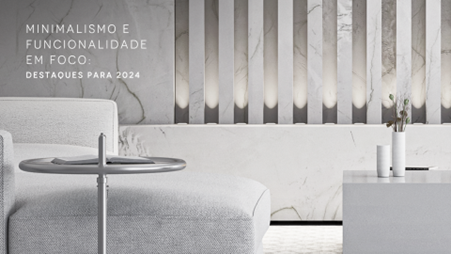
Minimalism and functionality in focus: highlights for 2024
In 2024, we now have the opportunity to transform and create projects in a way that expresses the originality and functionality of environments. As a result, the trend for integrating natural elements into environments is gaining even more prominence, providing a unique aesthetic appeal to your clients. This is the case with natural stone, which helps add a touch of elegance, durability and a timeless connection with nature to any space, as well as being highly durable and functional, being widely used in corporate or residential spaces. Apart from their aesthetic appeal, natural stone has a number of advantages that add even more value to your projects and make all the difference to your clients' daily lives. They are able to withstand wear and tear, abrasion, impact and climatic variations, guaranteeing a long service life for the environments in which they are used. They are also easy to clean and, with proper care, maintain their original beauty over time, reducing the need for constant interventions. It is also worth noting that they are generally extracted responsibly, helping to reduce environmental impacts and contributing to sustainability around the world. Combining the best of natural stone with the latest in architecture The fact that natural stone will continue to be popular in 2024 is nothing new, and it is essential to combine it with other trends in architecture and construction in order to develop projects that are current and full of personality. Here are some examples to inspire you: ● Textures that reflect personality: bet on colors, prints and finishes that are out of the ordinary to add more authenticity to the decor. Ijen Blue is a good choice, as it has deep blue tones mixed with subtle shades of gray and white. Its exotic appearance creates an atmosphere of tranquillity and elegance and is often used on floors, walls and furniture details. ● LED lighting: highlight your furniture with small spots of light, bringing more refinement to your space. Combining this style of lighting with Leblon Quartzite, for example, is a great choice. With a vibrant energy that pays homage to Rio de Janeiro's iconic beach, its predominantly white hue and soft golden veins add a touch of glamour, spaciousness and luminosity to rooms. It is widely used on walls, floors and countertops. ● Minimalism vs. maximalism: use straight lines and neutral colors as interesting counterpoints to mix with bolder shades and prints. Thanks to its refined texture and glossy surface, it can be applied to wall coverings, countertops, floors and more. It's worth noting that natural elements will also be on the rise, combining organic items such as bamboo, rattan and Indian straw with natural stones, which increase well-being and enhance the feeling of being close to nature. In addition, design and decoration trends will be aligned with Pantone's color of the year, Peach Fuzz! With a soft, velvety peach tone that conveys various sensations, such as belonging, recalibration and calm, it will undoubtedly be an element that will harmonize perfectly with quartzite, marble and granite. The shade has the power to make any room even more special.
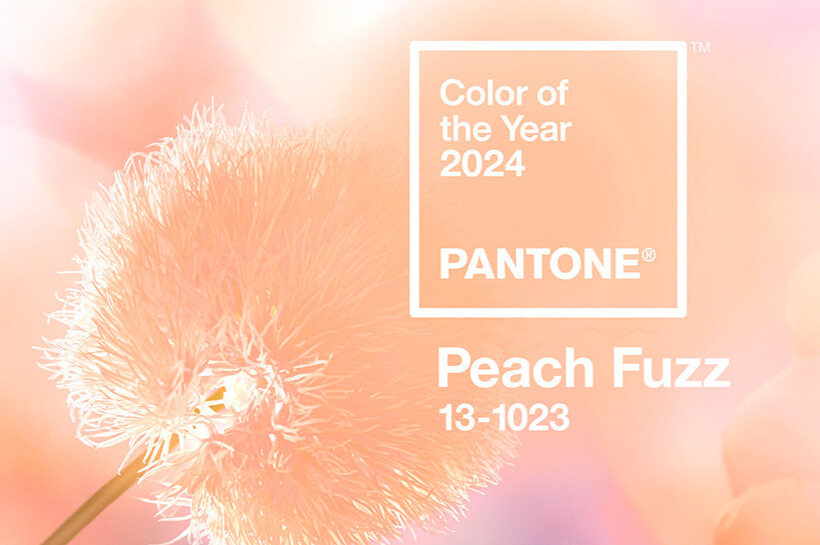
Peach Fuzz: the color of 2024
With its peachy hue, Peach Fuzz is Pantone's color of the year for 2024. But how can it transform your projects? Find out now! One of the most eagerly awaited moments for thousands of design, architecture and fashion professionals is when Pantone reveals its color of the year. More than a trend, this choice represents a careful reflection on current events, collective emotions and the cultural directions that are guiding the world. And for 2024, the bet has already been made: it's Peach Fuzz, a cozy peach shade that has the potential to bring a new atmosphere to various environments and projects. Read on and find out more about it! What is the importance of Pantone's color of the year? Pantone is a global authority when it comes to colors, facilitating all stages of the workflow for brands and manufacturers. The color selected for a given year is not just a shade, but a symbol that represents a deeper message. The tone is chosen after a thorough analysis of global trends, behavioral changes, social influences and even economic conditions, reflecting the prevailing mood in society at that time. What's more, the color of the year has the power to inspire creativity and innovation in different sectors, influencing the trends we'll see on the catwalks, in the streets and in interior design. That's right, Peach Fuzz can guide aesthetic choices, influencing everything from furniture selection to the color palette of walls. What does Peach Fuzz represent? Colors go far beyond aesthetics and are responsible for conveying a range of emotions and sensations. In the case of Peach Fuzz, we have a soft, velvety shade that moves between pink and orange and seeks to bring out feelings such as belonging, recalibration and calm. If for 2023 the choice was “Radiant Horizon”, with intense and vibrant nuances that symbolized energy, optimism and vitality, we can see an impactful change for 2024. After all, after such a challenging year, all the world wants now is a warm, welcoming refuge and an end to the storm. How to use Peach Fuzz? As well as being beautiful, Peach Fuzz offers a palette that ranges from the lightest to the deepest tones, allowing for a wide variety of applications and possibilities. If you want to create engaging spaces, here are some tips that will revolutionize your residential and corporate projects. Walls: provides a smooth integration into rooms, giving a comforting and elegant touch. Decoration: it is also perfect for details, and can be applied to cushion covers, plant pots and holders, curtains, sofa blankets, among other items. Furniture: sofas, chairs, bookcases and sideboards in this color add personality to rooms and make them look more contemporary. Joinery: the neutral wood tones harmonize perfectly with Peach Fuzz, resulting in refinement and balance. Ready to experience a more serene 2024 with Peach Fuzz? Betting on the color of the year is an excellent way to build more modern projects in tune with the feelings the world is experiencing. Keep following the Decolores blog and social networks to find out more about how Peach Fuzz can be present in your daily life.
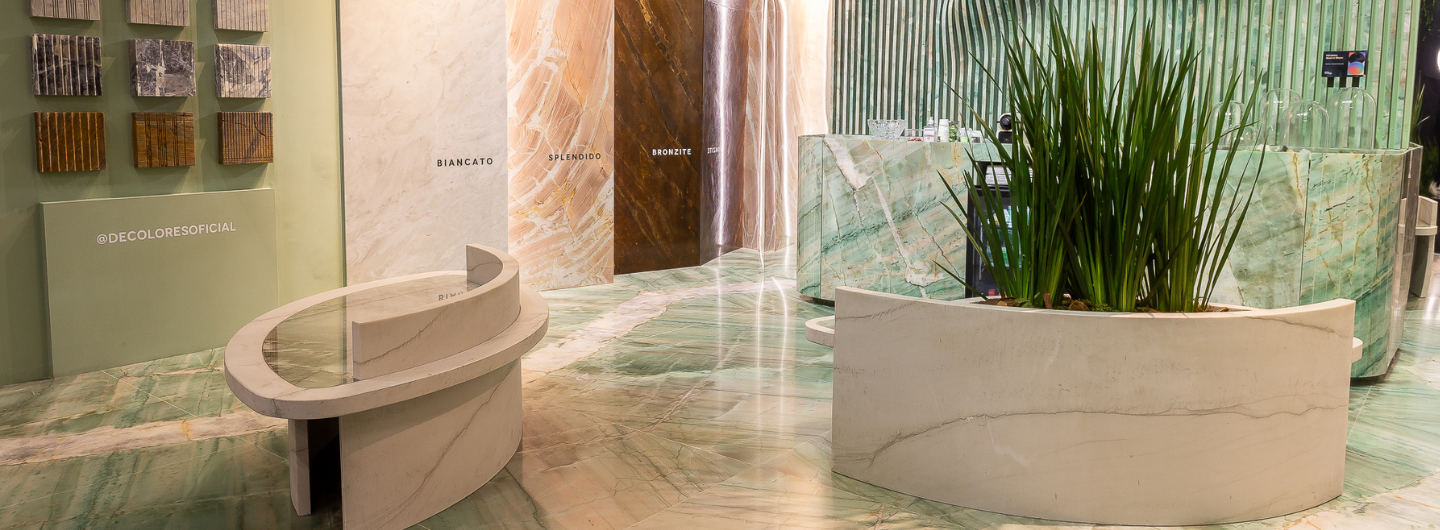
Trends in the use of natural stone: check out the highlights of the latest trade fairs
Despite the great diversity of elements available for covering surfaces and creating decorative objects, natural stone continues to stand out in architecture due to its unique beauty, versatility and durability. These noble pieces can be used in spaces both as protagonists and in harmony with other items, with the aim of creating uniqueness and conveying different sensations. Below, you'll find more details on some of the trends presented at the latest industry fairs focusing on natural stone. 3 major trends in the use of natural stone: Here are some of the main trends highlighting natural stone: ● Organic design This isn't exactly new, as organic design first appeared in the 1930s with the famous architect Frank Lloyd Wright. In recent years, however, it has made a comeback with its smooth lines, authentic materials and inspiration from nature. The use of plants and the use of natural light are hallmarks of this style, but stone also has a place. Even if they aren't organic, they are of natural origin and can bring rustic aspects and refer to the sea and wood, for example, adding beauty to rooms that follow this type of decoration. ● Fluid lines Curved and smooth shapes, rather than straight lines and angles, help to create more welcoming and comfortable environments. Rounded objects, curved furniture and arches in the walls are all ways to adopt this trend. Natural stone can be incorporated in a variety of ways. When cut into fluid, curvilinear shapes, they can be transformed into tables, adorn walls and be used according to the imagination of the architect or decorator. ● Variety of finishes At the latest trade fairs, stone appears in a variety of finishes, which guarantees even more versatility and ways of using these impressive elements. Here are a few: Brushed: very common in marble, it creates a satin-smooth appearance to the touch. Ideal for cozy environments such as living rooms and bedrooms. Levigated: a rough cut. Levigated can be ideal for environments with an industrial and urban concept, adding authenticity and a touch of boldness. Polished: a common finish, it gives off that characteristic shine that immediately comes to mind when we think of natural stone. It is the best choice for sophisticated and refined creations, especially in kitchens and bathrooms. Slatted: another rustic and contemporary option, it features the stone in slats, with a rough finish.
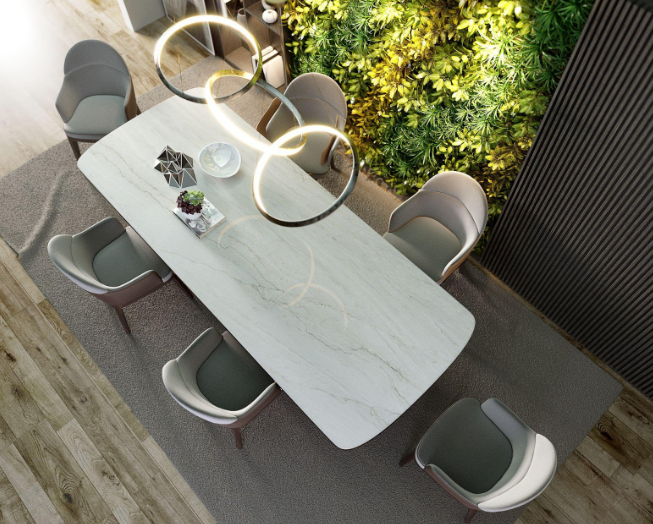
Natural Stones in high-end commercial projects
What factors should be considered when choosing natural stones for high-end commercial projects? Find out here! Providing excellent customer service and offering unparalleled experiences is essential in today's world. And principles like these involve the presence of natural stones in high-end commercial projects. That 's right! Materials are not only crucial for adding grandeur to establishments but also for ensuring unique decorations and singular experiences for the public. Shall we delve deeper into the topic? Here, you'll discover everything about natural stones: advantages, types, how to select them, and much more. Enjoy the reading! Natural stones in high-end commercial projects and their benefits High-end commercial projects offer ample opportunities to use natural stones in various ways. The application tends to go far beyond traditional work, making this material a common component in floor and wall coverings. In this regard, marbles, granites, and quartzites can be present in lavatories, SPAs, fireplaces, etc. Additionally, they add a sophisticated touch to countertops, workbenches, and tables, ranging from minimalism to the most extravagant designs available today. Their advantages are also numerous. Here are some of them: High durability; Wide range of applications; Great resistance; Ability to not retain heat and moisture. Distinctive features like these make the spaces unique, providing beautiful decorations and simplifying everyday cleaning processes, for example. Types of natural stones and tips for choosing them Having the best natural stones in high-end commercial projects is entirely possible, from various types of establishments, from facades to interior spaces. To help you make the right choice, we've prepared some tips: Opt for patterns that harmonize with the other decorative elements of the project. A good decoration brings a balance between natural stones and other decorative resources in the environment, aiming for a pleasing harmony to the senses. From the classic patterns of marble types to the vibrant and modern ones of quartzites, the combination will look amazing when blended with the other elements of the project. Pay attention to the types of natural stones and their recommended applications: Knowing the types of stones and their recommended applications is an essential point for you to determine which product will be chosen. Check out the main recommendations for each type below: Quartzite: extremely resistant, quartzite can be used in a variety of environments, both indoors as flooring, countertops, and panels, or outdoors like pools, facades, and outdoor fireplace cladding. They come in a wide range of colors, patterns, and textures, adding refinement and originality to projects; Granite: with scratch resistance and easy installation, granite is a type of stone that also has a wide range of applications, whether for outdoor or indoor areas, ensuring beauty to projects; Marble: from classic patterns, marble elegantly complements indoor spaces, being suitable for applications like floors, walls, and furniture, as well as exterior fireplace cladding and tabletops; Travertine: known for being a timeless and versatile stone, travertine can be used in indoor spaces like panels and floors, or in outdoor areas such as facades and pool edges. With a velvety texture and neutral colors, it provides versatility and elegance to the project. Take into consideration the texture you wish to use. In addition to the broad patterns and veins that natural rocks possess, there is the possibility of varying the applied textures, bringing a fresh perspective to the product. Among the various possible finishes, we mention polished, which imparts a shiny and mirrored aspect to the material; brushed, characterized by a velvety and satin-like texture; honed, ensuring a matte and smooth appearance; flamed, providing a more rustic, raw finish to the stone. Stay informed about cleaning and maintenance tips for the material. Besides ensuring the best standard and texture of your material, remember that it is essential to know how to protect your natural stone. Avoid using abrasive or chemically aggressive cleaning products and always prefer detergents with a neutral pH. More information on the protection, application, and maintenance of these products can be found in our Natural Stone Guide. To recap: Natural stones offer numerous benefits, including unmatched durability and resistance. There are various types available today, including marble, granite, and quartzite. In high-end commercial projects, they can be used in a variety of ways, well beyond what is considered common applications. Choosing quality products is one of the key factors in enhancing architectural work like no other! Want to know how we can help you? Click here, explore our solutions, and discover what we at Decolores have to off.
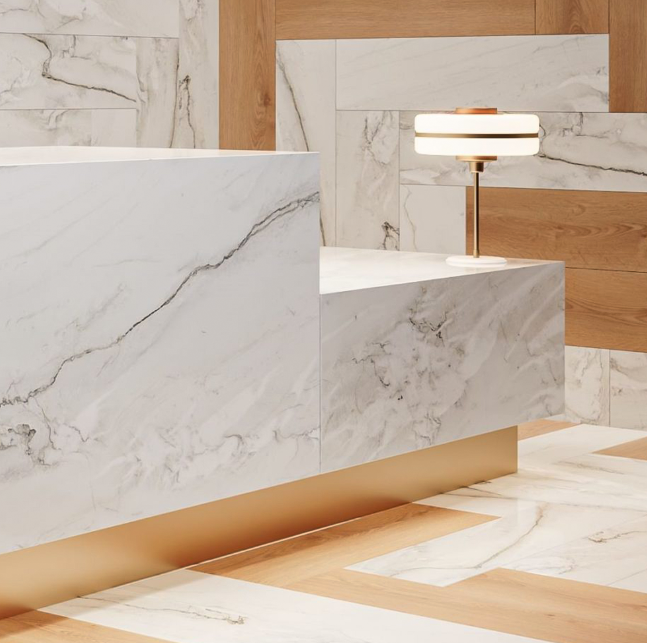
Trends in Natural Stone for 2023
We've gathered everything you need to know about trends in natural stones for 2023. Read More! What are the main trends in natural stones for 2023? Spoiler alert: they involve a wide range of colors, unique patterns, and the prominence of technology, for instance. But that's all we can reveal for now. To learn more about the topic, follow along here and check out the content crafted especially for you. Happy reading! The Importance of Ornamental Stones Ornamental stones are perfect for enhancing the ambiance. Granite, quartzite, marble, and sandstone, for example, set the tone for attractive, decorative, and truly diverse spaces. In this regard, these materials enable you to "uplift" many areas. From the pool to bedrooms, from bathrooms to the kitchen: with them, everything becomes incredible and unique! Trends in Natural Stones for 2023 In addition to natural elements with raw finishes, pieces rich in unique details and distinctive textures are also expected to remain popular. However, unique design and a focus on technology and sustainability are equally prominent today! Stay updated on the main trends in natural stones for 2023: Innovative Colors and Patterns Neutral and warm palettes stand out, each in its own way, with avant-garde patterns. When it comes to the former, softness is their trademark! Meanwhile, warm colors, including shades of orange and red, are expected to claim increasingly larger spaces in interior decoration, especially when combined with various geometric patterns. Distinct Textures and Finishes Sophistication is present in natural stones through textures and finishes that deviate from traditional options. Consequently, each material becomes unique, with various application possibilities in different settings. Sculpting, sandblasting, and polishing techniques make all the difference in creating distinctive surfaces. Exotic and Rare Materials Stones like sodalite, very rare and found exclusively in Brazil, also play a significant role in current trends. Its exuberant royal blue color brings sophistication and refinement to various spaces. Therefore, it can be incorporated into countertops, tables, sinks, and more. Sustainability and Natural Stones Preserving the environment is everyone's duty. The importance of sustainability is increasingly in focus, driving innovations that are essential in product creation. In the case of stones, the trend is towards increased production of long-lasting items that do not require frequent replacements and outlast traditional solutions. Innovative Applications In this topic, the spotlight is on various ways to apply natural stones, whether in interior or exterior designs. Stones in contact with water are expected to become an increasingly common feature moving forward. Moreover, these pieces can also be found in unexpected places, such as the wall behind the bed, for example. Integration with Technology Continuous improvement in processes facilitates synergy between natural stones and technology. In other words, innovation contributes to the development of unique solutions, delivered to clients with extensive customization possibilities. Cutting-edge resources have been crucial in making spaces even more modern, intelligent, and beautiful. Sustainable Projects It's impossible not to emphasize the topic of nature. Natural stones are being widely used in architectural projects, from small spaces to large buildings. As such, items like these have indeed made a unanimous contribution to the preservation of what matters most: the environment. Count on us and elevate your interior decor The best trends in natural stones for 2023 are here at Decolores. Since we started our operations in the year 2000, we have spared no effort in providing truly distinctive ornamental stones for our clients' projects. Explore options, get in touch with us, and discover everything we can do for you!

Natural stone trends for industrial and modern environments
When it comes to natural stone for industrial and modern environments, there are many possible applications. Bold and contemporary, the so-called industrial style of decoration helps to create spaces that are often simple but full of personality. Shall we talk more about it? Here we have put together everything you need to know about the subject: how to choose the best stones for projects of this nature, what is trending in the area and much more. Enjoy the reading! Exploring the beauty of the industrial style Whether in residential or commercial environments, industrial design plays a very important role in the development of work. Considered to be urban, it is characterized by a more “natural” look which values elements linked to the past. It comes from a vintage feel. Among its main characteristics are: Use of earthy shades and neutral colors Focus on integrating environments Surfaces generally unfinished Exposed pipes, beams and wires The versatility of natural stones in modern projects Natural stones for industrial and modern environments are highly versatile and adapt to contemporary spaces in a variety of ways. Nowadays, the stones can be found in many varieties: white, dark gray and those that move between beige, sepia and light gray are just a few examples. From the bathroom to the living room, from the kitchen to the bedroom, outdoors or indoors: the pieces match exactly what you want! Choosing the right stones for the industrial style Points to note when choosing stones for the industrial style include: Composition The particles present in the products can be determinant for the points listed below. Durability Make sure you know exactly how durable the material you are looking for is, as this is essential if you want to preserve it longer without the need for major maintenance. Resistance This is also a crucial point when thinking about a project, as the resistance of an item must do justice to the environment in which it will be inserted. In addition, it is essential to pay attention to the composition of the environments. Ideally, the choices should match perfectly with the rustic and raw look typical of the industrial style. In this sense, granite and marble pieces are excellent choices! Design trends using natural stones Keep up to date with some of the main natural stone trends that are and should continue to be on the rise in the coming months: Presence of the color gold The presence of stones in spaces marked by gold sets the tone for luxurious and sophisticated spaces. Warm tones Materials in warm colors are also being more and more used, as they contribute to the design of projects that are different from those traditionally known. Valuing of the green Another growing trend is the connection of stones with natural elements, in decorations that place foliage at the center of attention, as well as the use of recyclable items, for example. In summary… Natural stones for industrial and modern environments make all the difference in unique projects Versatile, they fit into different environments, whether indoors or outdoors When choosing the ideal option for a job, it is important to pay attention to points such as composition and resistance Nowadays, the main trends include the use of warm-colored stones, as well as the intimate connection with natural resources. Discover our natural stone portfolio Here at Decolores, there is no shortage of perfect solutions to embellish your projects. Click here, access the complete portfolio and discover everything we can do for you.

The use of natural stone in high-end residential projects
See how natural stone can be applied in numerous ways in high-end projects. Read here. The use of natural stone in high-end residential projects has become a prominent trend in the world of architecture and interior design. Thanks to its natural beauty and exceptional durability, it offers a variety of options to create luxurious and sophisticated environments. Keep reading to discover how natural stone can be applied, from wall and floor coverings to countertops and decorative details, providing a unique and elegant touch and imparting an imposing and timeless look to the most refined residential spaces. Enjoy your reading! Natural stones: applications beyond floors and walls Human creativity, when combined with the beauty and strength of quartzite, can be astonishing, creating possibilities that go far beyond floor and wall coverings. The material has been extensively explored by product and furniture designers. As a result, high-end tables, sinks, fireplaces, and spas emerge. Regardless of the application, the objective remains the same: ensuring elegance by harnessing the versatile physical characteristics of the stone. Take a look at some compositions that go beyond the obvious and offer a lot of beauty: Imposing Fireplace: a blaze of sophistication A fireplace adorned with Fusion quartzite is capable of drawing all the attention to itself. Through the curves and the strong, dark colors of the material, it even simulates following the enveloping movement of flames. The result is an elegant and cozy space, perfect for cold days and nights. Minimalist countertop: the charm of Mont Blanc quartzite The white background and the fluid veins of Mont Blanc quartzite perfectly complement the project, which has a unique concept. The composition became even more elegant when paired with the subdued tones of the kitchen. Work desk: the prominence of Leblon quartzite Leblon quartzite has transcended the confines of wall covering and reached the work desk in this charming office. The stone's light and gentle tone was harmonized with plants and leather and fabric chairs, ensuring the coziness of the corporate room. Exuberant counter: Spotlight on Sodalite Exuberance is the word that defines this foyer, featuring the rare Sodalite. As a result, it becomes ideal for spaces that demand grandeur, such as upscale hotels, or personality and strength, like the foyers of luxury market companies. Investing in lighting: highlighting the beauty of Crystal Opting for the strategic distribution of light spots to emphasize the natural veins and add more value to the Crystal was an excellent choice for this project, creating an exclusive and luxurious space. Harmony between straight lines and curves with Makalu granite Makalu granite takes center stage in this space where curved and straight lines meet, alongside a decor in golden tones. The result is a well-structured and sophisticated project.
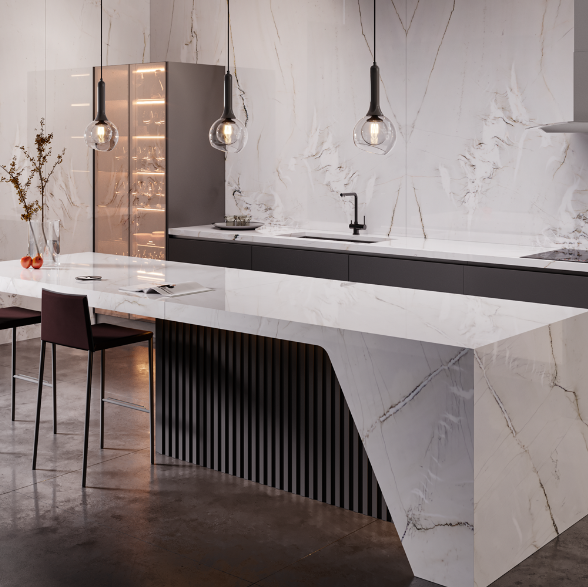
Discover how to combine resistance and sophistication in your projects with quartzite
Check out some tips for creating stunning projects using quartzite. Read here. Do you want to use natural rocks in your projects but don't know exactly how to create harmonious compositions that enhance your spaces even more? Keep reading and discover the various possibilities that quartzite can offer according to your goals. What is quartzite? Quartzite is a type of natural rock found in several Brazilian states. Formed from highly resistant sedimentary rocks, it is composed of 75% quartz and 25% other elements such as tourmaline, muscovite, biotite, among others. With unique patterns, it has a uniform and clean base, making it perfect for creating modern projects where minimalist aesthetics are the focal point. What are the advantages of quartzite? Here are the main benefits of using quartzite in your projects: Resistance: Due to its low absorption and high quartz content, which provides high hardness, quartzite has a wide range of applications. Finishes: Being a natural rock, quartzite can receive various finishes on its surface, such as polished, honed, brushed, flamed, or raw. Varied colors and prominent veins: Quartzite can be found in a wide variety of colors, with distinctive and original veins and tones. Easy to clean: Only water and mild soap are needed to clean this rock. As it doesn't absorb liquids, immediate cleaning is not necessary. How to use quartzite in projects? This natural rock can be applied in different areas of the house. Here are some great examples of applications that look amazing: In bathrooms, it can be used on the sink countertop or as a wall covering in the shower area. In kitchens, the classic use is as a countertop and supporting counter, also serving as a product for kitchen islands. In living rooms and bedrooms, it stands out as a wall covering, especially on focal walls within the space, such as behind the bed or TV wall. In outdoor areas, such as flooring, it is recommended to apply a special treatment to the surface of the rock to prevent it from becoming slippery. Get to know Decolores quartzites Click here and check out the options for natural rocks to create charming projects.

Trends in granite cores and finishes
In 2025, granite will continue to stand out as a key material in interior design, combining durability and elegance. This year, color and finish trends promise to revitalize the use of granite, offering new possibilities for transforming spaces. The granite color palette is expanding, from sophisticated neutral tones to bolder, more vibrant options. In addition, finishes are diversifying, with textures ranging from polished to natural, allowing for even greater personalization of spaces. In this blog, we will explore the main granite color and finish trends for 2025, helping you discover how these innovations can enrich your interior design. Happy reading! Trending colors for 2025 Granite colors continue to play a crucial role in defining the style of spaces. The coming year brings a color palette that reflects both classic sophistication and contemporary boldness. Neutral and elegant tones Neutral tones remain a classic and sophisticated choice, offering a versatile base that adapts to a variety of décor styles. In the coming year, white and gray will continue to dominate, bringing clarity and modernity to spaces. White Dune by Decolores is a perfect example of this trend. With its light hue and subtle veining, White Dune granite offers an elegant and timeless base, ideal for creating a bright and spacious environment. This color is perfect for creating a relaxing and inviting atmosphere in spaces such as living rooms and dining areas. Dark and warm colors As earthy tones gain popularity, they bring a sense of warmth and connection to nature to interiors. Shades such as beige, brown and black are emerging as ideal choices for creating a welcoming and sophisticated environment. Makalu is a standout choice from Decolores that fits perfectly into this trend. With its dark background, Makalu is ideal for those who want to add a touch of warmth and naturalness to their interiors. This granite is excellent for kitchens and bathrooms, providing a surface that is not only aesthetically pleasing but also resistant to daily use. Bold pops of color and patterns For those seeking a bolder approach, darker, richer tones are becoming more popular. Colors like deep blue and emerald green can create striking focal points and add personality to spaces. Decolores’ Silver Grey is an excellent choice for those seeking a touch of modernity and sophistication. Its dark gray color with silver undertones offers an elegant and bold contrast, ideal for creating a striking look in any environment. This granite is perfect for kitchen countertops and flooring, offering a modern and refined look. Trending granite finishes While colors set the tone of a room, granite finishes add the texture and finishing touch that can transform a space. Available finishes range from polished and glossy to textured and rustic, each offering a unique and sophisticated effect. Let’s explore the most trending finishes for 2025 and how they can be applied to create truly stunning spaces. Honed finish The polished finish continues to be a popular choice, providing a glossy, reflective surface that highlights the natural beauty of granite. This finish is ideal for creating a sophisticated and elegant look on countertops, floors and wall coverings. Honed finish The honed finish, which gives granite a smooth, velvety texture, is becoming increasingly popular. This finish not only adds a sense of luxury and comfort. Brushed finish The brushed finish, with its leather-like texture, is becoming a popular choice for those seeking a more rugged and authentic look. This finish is ideal for creating an interesting contrast with other decorative elements and adding a touch of rusticity to a design. Interior design applications Granite’s versatility goes beyond the choice of colors and finishes; its applications in interior design are vast and innovative. From kitchens and bathrooms to living areas and architectural features, granite can be used to create stunning and functional spaces. Kitchens and Bathrooms Granite is an exceptional choice for kitchens and bathrooms due to its durability and strength. Neutral colors and polished finishes are perfect for creating elegant and functional spaces. These options not only offer a refined aesthetic, but also withstand heavy use and exposure to moisture. Living and Dining Areas In living and dining areas, granite can be used to create stunning tables, countertops and wall coverings. Silver Grey offers a sophisticated option that can complement a variety of décor styles, from contemporary to classic. Its rich color and refined finish provide a touch of class and modernity. Architectural Elements Granite can also be incorporated into architectural elements such as fireplaces, staircases and recessed niches. Leathered and raw finishes can add a touch of texture and character to these elements, creating an intriguing focal point in the design of the space. Products such as Makalu and Silver Grey are ideal for projects that seek a balance between aesthetics and functionality. Count on Decolores Granite color and finish trends for 2024 offer a wide range of options to create modern and sophisticated environments. With Decolores products such as Makalu, White Dune and Silver Grey, you can incorporate these trends in an elegant and personalized way. With a variety of colors and finishes, Decolores provides options that range from classic to contemporary, allowing you to find the perfect solution for your interior design project. Explore Decolores' options and discover how to transform your spaces with the beauty and durability of granite.
